Symbol Technologies MC3090BT Handheld Wireless terminal User Manual MC3000 User Guide
Symbol Technologies Inc Handheld Wireless terminal MC3000 User Guide
Contents
- 1. Users Manual Part 1
- 2. Users Manual Part 2
- 3. Users Manual
Users Manual Part 1
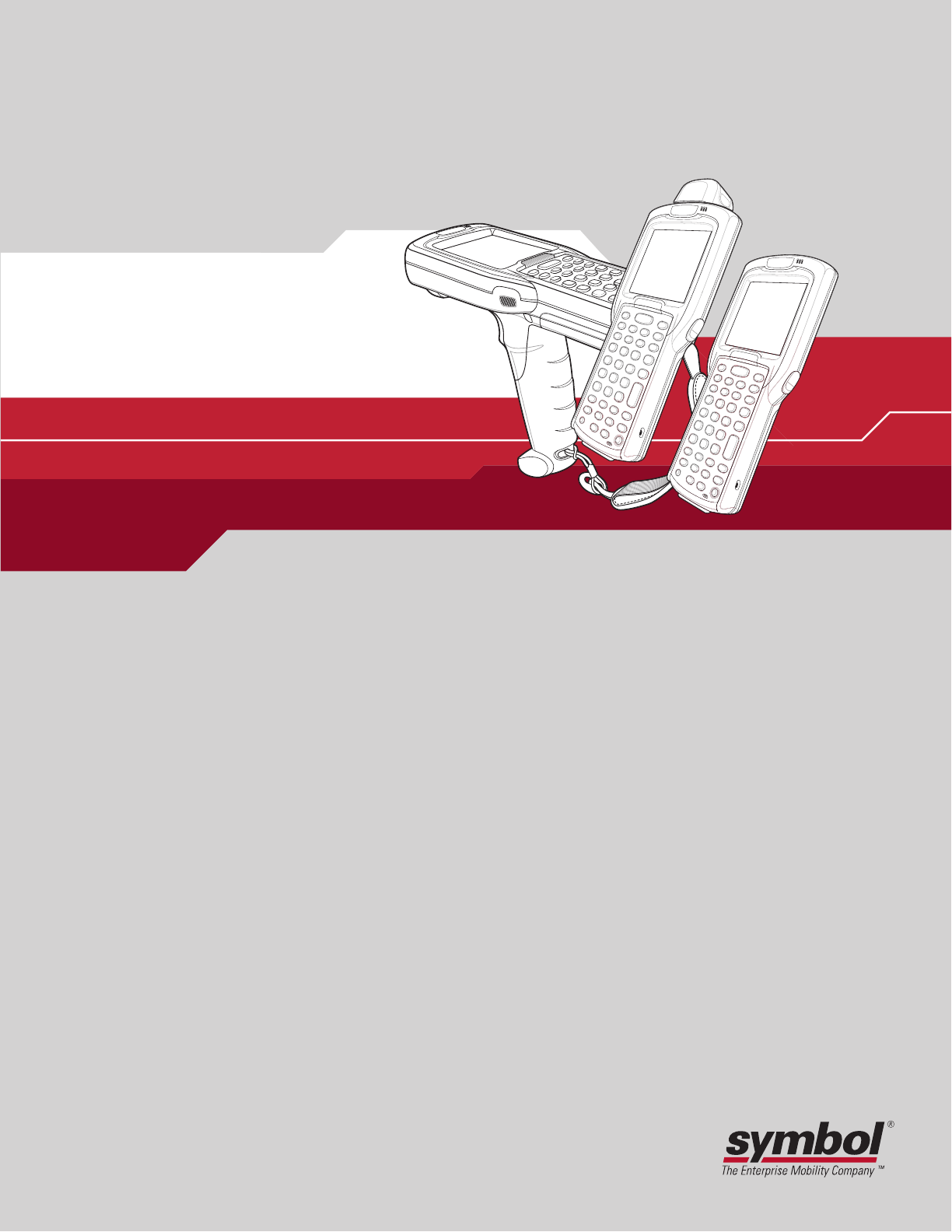
MC3000
User Guide


MC3000 User Guide
72-68899-02
Rev A
October 2005

© 2005 by Symbol Technologies, Inc. All rights reserved.
No part of this publication may be reproduced or used in any form, or by any electrical or mechanical means, without permission in writing from
Symbol. This includes electronic or mechanical means, such as photocopying, recording, or information storage and retrieval systems. The material
in this manual is subject to change without notice.
The software is provided strictly on an “as is” basis. All software, including firmware, furnished to the user is on a licensed basis. Symbol grants
to the user a non-transferable and non-exclusive license to use each software or firmware program delivered hereunder (licensed program). Except
as noted below, such license may not be assigned, sublicensed, or otherwise transferred by the user without prior written consent of Symbol. No
right to copy a licensed program in whole or in part is granted, except as permitted under copyright law. The user shall not modify, merge, or
incorporate any form or portion of a licensed program with other program material, create a derivative work from a licensed program, or use a
licensed program in a network without written permission from Symbol. The user agrees to maintain Symbol’s copyright notice on the licensed
programs delivered hereunder, and to include the same on any authorized copies it makes, in whole or in part. The user agrees not to decompile,
disassemble, decode, or reverse engineer any licensed program delivered to the user or any portion thereof.
Symbol reserves the right to make changes to any software or product to improve reliability, function, or design.
Symbol does not assume any product liability arising out of, or in connection with, the application or use of any product, circuit, or application
described herein.
No license is granted, either expressly or by implication, estoppel, or otherwise under any Symbol Technologies, Inc., intellectual property rights.
An implied license only exists for equipment, circuits, and subsystems contained in Symbol products.
Symbol, Spectrum One, and Spectrum24 are registered trademarks of Symbol Technologies, Inc. Bluetooth is a registered trademark of Bluetooth
SIG. Microsoft, Windows and ActiveSync are either registered trademarks or trademarks of Microsoft Corporation. Other product names mentioned
in this manual may be trademarks or registered trademarks of their respective companies and are hereby acknowledged.
Symbol Technologies, Inc.
One Symbol Plaza
Holtsville, New York 11742-1300
http://www.symbol.com

Revision History
Changes to the original manual are listed below:
Change Date Description
-01 Rev A Dec. 2004 Initial Release
-01 Rev B June 2005 Added Four Slot Ethernet cradle.
Added Fabric Holster.
Appendix A, added Accessory Specifications.
Add Appendix C, Regulatory.
-02 Rev A Sept. 2005 Global changes:
Changed Windows CE.NET 4.2 to Windows CE.NET 5.0
Removed WZC references, replaced with wireless application references.
Added 802.11a support.
Add MC3090-G support
Add Bluetooth support
Update Technical Specifications.

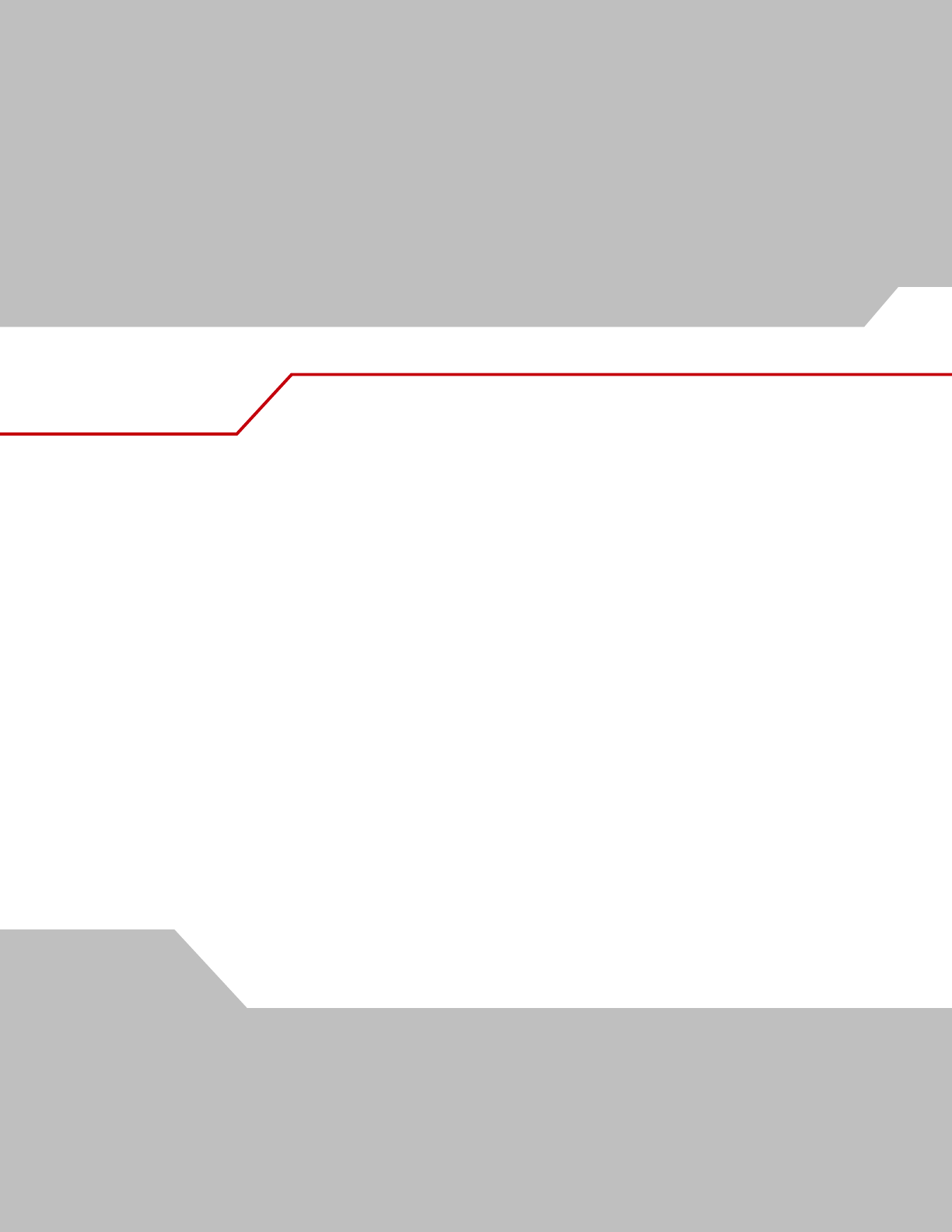
Contents
Revision History . . . . . . . . . . . . . . . . . . . . . . . . . . . . . . . . . . . . . . . . . . . . . . . . . . . . . . . . . . . . . . . . . . . . . . . . . . . iii
About This Guide
Introduction . . . . . . . . . . . . . . . . . . . . . . . . . . . . . . . . . . . . . . . . . . . . . . . . . . . . . . . . . . . . . . . . . . . . . . . . . . . . . xiii
Documentation Set . . . . . . . . . . . . . . . . . . . . . . . . . . . . . . . . . . . . . . . . . . . . . . . . . . . . . . . . . . . . . . . . . . . . . . . . . . . . . xiii
Configurations . . . . . . . . . . . . . . . . . . . . . . . . . . . . . . . . . . . . . . . . . . . . . . . . . . . . . . . . . . . . . . . . . . . . . . . . . . . xiv
Chapter Descriptions . . . . . . . . . . . . . . . . . . . . . . . . . . . . . . . . . . . . . . . . . . . . . . . . . . . . . . . . . . . . . . . . . . . . . . xiv
Notational Conventions . . . . . . . . . . . . . . . . . . . . . . . . . . . . . . . . . . . . . . . . . . . . . . . . . . . . . . . . . . . . . . . . . . . . .xv
Related Documents and Software. . . . . . . . . . . . . . . . . . . . . . . . . . . . . . . . . . . . . . . . . . . . . . . . . . . . . . . . . . . . .xv
Service Information . . . . . . . . . . . . . . . . . . . . . . . . . . . . . . . . . . . . . . . . . . . . . . . . . . . . . . . . . . . . . . . . . . . . . . . xvi
Symbol Support Center . . . . . . . . . . . . . . . . . . . . . . . . . . . . . . . . . . . . . . . . . . . . . . . . . . . . . . . . . . . . . . . . . . . . . . . . . . xvi
Chapter 1. Getting Started
Introduction . . . . . . . . . . . . . . . . . . . . . . . . . . . . . . . . . . . . . . . . . . . . . . . . . . . . . . . . . . . . . . . . . . . . . . . . . . . . .1-2
Unpacking the Mobile Computer . . . . . . . . . . . . . . . . . . . . . . . . . . . . . . . . . . . . . . . . . . . . . . . . . . . . . . . . . . . . .1-2
Accessories . . . . . . . . . . . . . . . . . . . . . . . . . . . . . . . . . . . . . . . . . . . . . . . . . . . . . . . . . . . . . . . . . . . . . . . . . . . . .1-3
Parts . . . . . . . . . . . . . . . . . . . . . . . . . . . . . . . . . . . . . . . . . . . . . . . . . . . . . . . . . . . . . . . . . . . . . . . . . . . . . . . . . . .1-4
Rotating Scan Turret . . . . . . . . . . . . . . . . . . . . . . . . . . . . . . . . . . . . . . . . . . . . . . . . . . . . . . . . . . . . . . . . . .1-5
Mobile Computer Startup. . . . . . . . . . . . . . . . . . . . . . . . . . . . . . . . . . . . . . . . . . . . . . . . . . . . . . . . . . . . . . . . . . .1-6
Install Main Battery . . . . . . . . . . . . . . . . . . . . . . . . . . . . . . . . . . . . . . . . . . . . . . . . . . . . . . . . . . . . . . . . . . .1-6
Battery Charging. . . . . . . . . . . . . . . . . . . . . . . . . . . . . . . . . . . . . . . . . . . . . . . . . . . . . . . . . . . . . . . . . . . . . . . . . .1-9
Spare Battery Charging . . . . . . . . . . . . . . . . . . . . . . . . . . . . . . . . . . . . . . . . . . . . . . . . . . . . . . . . . . . . . . . . . . .1-10
Stylus . . . . . . . . . . . . . . . . . . . . . . . . . . . . . . . . . . . . . . . . . . . . . . . . . . . . . . . . . . . . . . . . . . . . . . . . . . . . . . . . .1-10
Starting the Mobile Computer . . . . . . . . . . . . . . . . . . . . . . . . . . . . . . . . . . . . . . . . . . . . . . . . . . . . . . . . . . . . . .1-11
Calibration Screen . . . . . . . . . . . . . . . . . . . . . . . . . . . . . . . . . . . . . . . . . . . . . . . . . . . . . . . . . . . . . . . . . . .1-11

MC3000 User Guidevi
Demo Window . . . . . . . . . . . . . . . . . . . . . . . . . . . . . . . . . . . . . . . . . . . . . . . . . . . . . . . . . . . . . . . . . . . . . .1-11
Waking the Mobile Computer . . . . . . . . . . . . . . . . . . . . . . . . . . . . . . . . . . . . . . . . . . . . . . . . . . . . . . . . . . . . . .1-12
Main Battery Removal . . . . . . . . . . . . . . . . . . . . . . . . . . . . . . . . . . . . . . . . . . . . . . . . . . . . . . . . . . . . . . . . . . . .1-12
Strap/Door Assembly Removal and Replacement (MC3000-K/R) . . . . . . . . . . . . . . . . . . . . . . . . . . . . . . . . . . .1-14
Strap/Door Assembly Removal and Replacement (MC3000-G). . . . . . . . . . . . . . . . . . . . . . . . . . . . . . . . . . . . .1-15
Chapter 2. Operating the MC3000
Introduction. . . . . . . . . . . . . . . . . . . . . . . . . . . . . . . . . . . . . . . . . . . . . . . . . . . . . . . . . . . . . . . . . . . . . . . . . . . . . .2-3
Power Button . . . . . . . . . . . . . . . . . . . . . . . . . . . . . . . . . . . . . . . . . . . . . . . . . . . . . . . . . . . . . . . . . . . . . . . . . . . .2-3
Keypads. . . . . . . . . . . . . . . . . . . . . . . . . . . . . . . . . . . . . . . . . . . . . . . . . . . . . . . . . . . . . . . . . . . . . . . . . . . . . . . . .2-3
Keypad Special Functions. . . . . . . . . . . . . . . . . . . . . . . . . . . . . . . . . . . . . . . . . . . . . . . . . . . . . . . . . . . . . . . . . . .2-3
28-Key Keypad . . . . . . . . . . . . . . . . . . . . . . . . . . . . . . . . . . . . . . . . . . . . . . . . . . . . . . . . . . . . . . . . . . . . . . .2-4
38-Key Keypad . . . . . . . . . . . . . . . . . . . . . . . . . . . . . . . . . . . . . . . . . . . . . . . . . . . . . . . . . . . . . . . . . . . . . . .2-6
48-Key Keypad . . . . . . . . . . . . . . . . . . . . . . . . . . . . . . . . . . . . . . . . . . . . . . . . . . . . . . . . . . . . . . . . . . . . . . .2-8
Demo Window . . . . . . . . . . . . . . . . . . . . . . . . . . . . . . . . . . . . . . . . . . . . . . . . . . . . . . . . . . . . . . . . . . . . . . . . . .2-10
Desktop Window . . . . . . . . . . . . . . . . . . . . . . . . . . . . . . . . . . . . . . . . . . . . . . . . . . . . . . . . . . . . . . . . . . . . . . . .2-10
Taskbar . . . . . . . . . . . . . . . . . . . . . . . . . . . . . . . . . . . . . . . . . . . . . . . . . . . . . . . . . . . . . . . . . . . . . . . . . . . . . . . .2-11
Battery Unknown Icon . . . . . . . . . . . . . . . . . . . . . . . . . . . . . . . . . . . . . . . . . . . . . . . . . . . . . . . . . . . . . . . .2-12
Start Button . . . . . . . . . . . . . . . . . . . . . . . . . . . . . . . . . . . . . . . . . . . . . . . . . . . . . . . . . . . . . . . . . . . . . . . .2-12
Programs Menu . . . . . . . . . . . . . . . . . . . . . . . . . . . . . . . . . . . . . . . . . . . . . . . . . . . . . . . . . . . . . . . . . . . . .2-13
Keyboard Input Panel Button . . . . . . . . . . . . . . . . . . . . . . . . . . . . . . . . . . . . . . . . . . . . . . . . . . . . . . . . . . .2-13
Desktop Display Button . . . . . . . . . . . . . . . . . . . . . . . . . . . . . . . . . . . . . . . . . . . . . . . . . . . . . . . . . . . . . . .2-13
Task Manager and Properties. . . . . . . . . . . . . . . . . . . . . . . . . . . . . . . . . . . . . . . . . . . . . . . . . . . . . . . . . . . . . . .2-14
Task Manager. . . . . . . . . . . . . . . . . . . . . . . . . . . . . . . . . . . . . . . . . . . . . . . . . . . . . . . . . . . . . . . . . . . . . . .2-14
Properties . . . . . . . . . . . . . . . . . . . . . . . . . . . . . . . . . . . . . . . . . . . . . . . . . . . . . . . . . . . . . . . . . . . . . . . . . .2-14
Entering Information. . . . . . . . . . . . . . . . . . . . . . . . . . . . . . . . . . . . . . . . . . . . . . . . . . . . . . . . . . . . . . . . . . . . . .2-15
Entering Information Using Keypad . . . . . . . . . . . . . . . . . . . . . . . . . . . . . . . . . . . . . . . . . . . . . . . . . . . . . .2-15
Entering Information Using the Keyboard Input Panel. . . . . . . . . . . . . . . . . . . . . . . . . . . . . . . . . . . . . . . .2-16
Entering Data via the Bar Code Scanner . . . . . . . . . . . . . . . . . . . . . . . . . . . . . . . . . . . . . . . . . . . . . . . . . .2-16
Data Capture. . . . . . . . . . . . . . . . . . . . . . . . . . . . . . . . . . . . . . . . . . . . . . . . . . . . . . . . . . . . . . . . . . . . . . . . . . . .2-16
Laser Scanning . . . . . . . . . . . . . . . . . . . . . . . . . . . . . . . . . . . . . . . . . . . . . . . . . . . . . . . . . . . . . . . . . . . . . .2-16
Scan LED Indicators . . . . . . . . . . . . . . . . . . . . . . . . . . . . . . . . . . . . . . . . . . . . . . . . . . . . . . . . . . . . . . . . . .2-17
Scanning Considerations . . . . . . . . . . . . . . . . . . . . . . . . . . . . . . . . . . . . . . . . . . . . . . . . . . . . . . . . . . . . . .2-17
Laser Decode Ranges. . . . . . . . . . . . . . . . . . . . . . . . . . . . . . . . . . . . . . . . . . . . . . . . . . . . . . . . . . . . . . . . .2-17
Imaging . . . . . . . . . . . . . . . . . . . . . . . . . . . . . . . . . . . . . . . . . . . . . . . . . . . . . . . . . . . . . . . . . . . . . . . . . . . . . . . .2-19
Imager. . . . . . . . . . . . . . . . . . . . . . . . . . . . . . . . . . . . . . . . . . . . . . . . . . . . . . . . . . . . . . . . . . . . . . . . . . . . .2-19
Operational Modes. . . . . . . . . . . . . . . . . . . . . . . . . . . . . . . . . . . . . . . . . . . . . . . . . . . . . . . . . . . . . . . . . . .2-19
Decode Mode . . . . . . . . . . . . . . . . . . . . . . . . . . . . . . . . . . . . . . . . . . . . . . . . . . . . . . . . . . . . . . . . . . .2-19
Image Capture . . . . . . . . . . . . . . . . . . . . . . . . . . . . . . . . . . . . . . . . . . . . . . . . . . . . . . . . . . . . . . . . . .2-19
Aiming the Mobile Computer. . . . . . . . . . . . . . . . . . . . . . . . . . . . . . . . . . . . . . . . . . . . . . . . . . . . . . . . . . .2-19
Imager Decode Ranges. . . . . . . . . . . . . . . . . . . . . . . . . . . . . . . . . . . . . . . . . . . . . . . . . . . . . . . . . . . . . . . .2-20
Resetting the Mobile Computer . . . . . . . . . . . . . . . . . . . . . . . . . . . . . . . . . . . . . . . . . . . . . . . . . . . . . . . . . . . . .2-23
Performing a Warm Boot . . . . . . . . . . . . . . . . . . . . . . . . . . . . . . . . . . . . . . . . . . . . . . . . . . . . . . . . . . . . . .2-23
Performing a Cold Boot. . . . . . . . . . . . . . . . . . . . . . . . . . . . . . . . . . . . . . . . . . . . . . . . . . . . . . . . . . . . . . . .2-23
Waking the Mobile Computer . . . . . . . . . . . . . . . . . . . . . . . . . . . . . . . . . . . . . . . . . . . . . . . . . . . . . . . . . . . . . .2-24
File System Directory Structure . . . . . . . . . . . . . . . . . . . . . . . . . . . . . . . . . . . . . . . . . . . . . . . . . . . . . . . . . . . . .2-24
Connecting to the Internet on a Wireless LAN Network . . . . . . . . . . . . . . . . . . . . . . . . . . . . . . . . . . . . . . . . . .2-25

Contents vii
Chapter 3. Using Bluetooth
Introduction. . . . . . . . . . . . . . . . . . . . . . . . . . . . . . . . . . . . . . . . . . . . . . . . . . . . . . . . . . . . . . . . . . . . . . . . . . . . . 3- 3
Adaptive Frequency Hopping . . . . . . . . . . . . . . . . . . . . . . . . . . . . . . . . . . . . . . . . . . . . . . . . . . . . . . . . . . . . . . . .3-3
Security. . . . . . . . . . . . . . . . . . . . . . . . . . . . . . . . . . . . . . . . . . . . . . . . . . . . . . . . . . . . . . . . . . . . . . . . . . . . . . . . .3-3
Turning the Bluetooth Radio Mode On and Off . . . . . . . . . . . . . . . . . . . . . . . . . . . . . . . . . . . . . . . . . . . . . . . . . .3-4
Disabling Bluetooth . . . . . . . . . . . . . . . . . . . . . . . . . . . . . . . . . . . . . . . . . . . . . . . . . . . . . . . . . . . . . . . . . . .3-4
Enabling Bluetooth . . . . . . . . . . . . . . . . . . . . . . . . . . . . . . . . . . . . . . . . . . . . . . . . . . . . . . . . . . . . . . . . . . . .3-5
Bluetooth Power States . . . . . . . . . . . . . . . . . . . . . . . . . . . . . . . . . . . . . . . . . . . . . . . . . . . . . . . . . . . . . . . .3-5
Cold Boot . . . . . . . . . . . . . . . . . . . . . . . . . . . . . . . . . . . . . . . . . . . . . . . . . . . . . . . . . . . . . . . . . . . . . . .3-5
Warm Boot . . . . . . . . . . . . . . . . . . . . . . . . . . . . . . . . . . . . . . . . . . . . . . . . . . . . . . . . . . . . . . . . . . . . . .3-5
Suspend . . . . . . . . . . . . . . . . . . . . . . . . . . . . . . . . . . . . . . . . . . . . . . . . . . . . . . . . . . . . . . . . . . . . . . . .3-5
Resume. . . . . . . . . . . . . . . . . . . . . . . . . . . . . . . . . . . . . . . . . . . . . . . . . . . . . . . . . . . . . . . . . . . . . . . . .3-5
Modes. . . . . . . . . . . . . . . . . . . . . . . . . . . . . . . . . . . . . . . . . . . . . . . . . . . . . . . . . . . . . . . . . . . . . . . . . . . . . . . . . .3-5
Wizard Mode . . . . . . . . . . . . . . . . . . . . . . . . . . . . . . . . . . . . . . . . . . . . . . . . . . . . . . . . . . . . . . . . . . . . . . . .3-5
Explorer Mode . . . . . . . . . . . . . . . . . . . . . . . . . . . . . . . . . . . . . . . . . . . . . . . . . . . . . . . . . . . . . . . . . . . . . . .3-8
Discovering Bluetooth Device(s). . . . . . . . . . . . . . . . . . . . . . . . . . . . . . . . . . . . . . . . . . . . . . . . . . . . . . . . . . . . . .3-8
Bonding with Discovered Device(s) . . . . . . . . . . . . . . . . . . . . . . . . . . . . . . . . . . . . . . . . . . . . . . . . . .3-10
Renaming a Bonded Device . . . . . . . . . . . . . . . . . . . . . . . . . . . . . . . . . . . . . . . . . . . . . . . . . . . . . . . .3-11
Deleting a Bonded Device . . . . . . . . . . . . . . . . . . . . . . . . . . . . . . . . . . . . . . . . . . . . . . . . . . . . . . . . .3-12
Accepting a Bond . . . . . . . . . . . . . . . . . . . . . . . . . . . . . . . . . . . . . . . . . . . . . . . . . . . . . . . . . . . . . . . .3-12
Discovering Services . . . . . . . . . . . . . . . . . . . . . . . . . . . . . . . . . . . . . . . . . . . . . . . . . . . . . . . . . . . . . . . . . . . . .3-13
File Transfer Services. . . . . . . . . . . . . . . . . . . . . . . . . . . . . . . . . . . . . . . . . . . . . . . . . . . . . . . . . . . . . . . . .3-14
Create New File or Folder . . . . . . . . . . . . . . . . . . . . . . . . . . . . . . . . . . . . . . . . . . . . . . . . . . . . . . . . .3-15
Delete File . . . . . . . . . . . . . . . . . . . . . . . . . . . . . . . . . . . . . . . . . . . . . . . . . . . . . . . . . . . . . . . . . . . . .3-15
Get File . . . . . . . . . . . . . . . . . . . . . . . . . . . . . . . . . . . . . . . . . . . . . . . . . . . . . . . . . . . . . . . . . . . . . . . .3-15
Put File . . . . . . . . . . . . . . . . . . . . . . . . . . . . . . . . . . . . . . . . . . . . . . . . . . . . . . . . . . . . . . . . . . . . . . . .3-15
Connect to Internet Using Access Point. . . . . . . . . . . . . . . . . . . . . . . . . . . . . . . . . . . . . . . . . . . . . . . . . . .3-16
Dial-Up Networking Services. . . . . . . . . . . . . . . . . . . . . . . . . . . . . . . . . . . . . . . . . . . . . . . . . . . . . . . . . . .3-16
Add a Dial-up Entry . . . . . . . . . . . . . . . . . . . . . . . . . . . . . . . . . . . . . . . . . . . . . . . . . . . . . . . . . . . . . .3-18
OBEX Object Push Services . . . . . . . . . . . . . . . . . . . . . . . . . . . . . . . . . . . . . . . . . . . . . . . . . . . . . . . . . . . .3-18
Send a Picture . . . . . . . . . . . . . . . . . . . . . . . . . . . . . . . . . . . . . . . . . . . . . . . . . . . . . . . . . . . . . . . . . .3-19
Headset Services . . . . . . . . . . . . . . . . . . . . . . . . . . . . . . . . . . . . . . . . . . . . . . . . . . . . . . . . . . . . . . . . . . . .3-20
Serial Port Services . . . . . . . . . . . . . . . . . . . . . . . . . . . . . . . . . . . . . . . . . . . . . . . . . . . . . . . . . . . . . . . . . .3-20
Personal Area Network Services . . . . . . . . . . . . . . . . . . . . . . . . . . . . . . . . . . . . . . . . . . . . . . . . . . . . . . . .3-21
Bluetooth Settings . . . . . . . . . . . . . . . . . . . . . . . . . . . . . . . . . . . . . . . . . . . . . . . . . . . . . . . . . . . . . . . . . . . . . . .3-22
Device Info Tab. . . . . . . . . . . . . . . . . . . . . . . . . . . . . . . . . . . . . . . . . . . . . . . . . . . . . . . . . . . . . . . . . . . . . .3-22
Services Tab . . . . . . . . . . . . . . . . . . . . . . . . . . . . . . . . . . . . . . . . . . . . . . . . . . . . . . . . . . . . . . . . . . . . . . . .3-22
Dial-Up Networking Service. . . . . . . . . . . . . . . . . . . . . . . . . . . . . . . . . . . . . . . . . . . . . . . . . . . . . . . .3-23
File Transfer Service. . . . . . . . . . . . . . . . . . . . . . . . . . . . . . . . . . . . . . . . . . . . . . . . . . . . . . . . . . . . . .3-24
OBEX Object Push Service . . . . . . . . . . . . . . . . . . . . . . . . . . . . . . . . . . . . . . . . . . . . . . . . . . . . . . . . .3-24
Personal Area Networking Service . . . . . . . . . . . . . . . . . . . . . . . . . . . . . . . . . . . . . . . . . . . . . . . . . .3-25
Serial Port Service . . . . . . . . . . . . . . . . . . . . . . . . . . . . . . . . . . . . . . . . . . . . . . . . . . . . . . . . . . . . . . .3-25
Headset Service . . . . . . . . . . . . . . . . . . . . . . . . . . . . . . . . . . . . . . . . . . . . . . . . . . . . . . . . . . . . . . . . .3-26
Security Tab . . . . . . . . . . . . . . . . . . . . . . . . . . . . . . . . . . . . . . . . . . . . . . . . . . . . . . . . . . . . . . . . . . . . . . . .3-27
Discovery Tab . . . . . . . . . . . . . . . . . . . . . . . . . . . . . . . . . . . . . . . . . . . . . . . . . . . . . . . . . . . . . . . . . . . . . . .3-28
Virtual COM Port Tab . . . . . . . . . . . . . . . . . . . . . . . . . . . . . . . . . . . . . . . . . . . . . . . . . . . . . . . . . . . . . . . . .3-29
Miscellaneous Tab . . . . . . . . . . . . . . . . . . . . . . . . . . . . . . . . . . . . . . . . . . . . . . . . . . . . . . . . . . . . . . . . . . .3-30

MC3000 User Guideviii
Chapter 4. Accessories
Introduction. . . . . . . . . . . . . . . . . . . . . . . . . . . . . . . . . . . . . . . . . . . . . . . . . . . . . . . . . . . . . . . . . . . . . . . . . . . . . .4-3
Cradles . . . . . . . . . . . . . . . . . . . . . . . . . . . . . . . . . . . . . . . . . . . . . . . . . . . . . . . . . . . . . . . . . . . . . . . . . . . . .4-3
Spare Battery Chargers . . . . . . . . . . . . . . . . . . . . . . . . . . . . . . . . . . . . . . . . . . . . . . . . . . . . . . . . . . . . . . . .4-3
Cables . . . . . . . . . . . . . . . . . . . . . . . . . . . . . . . . . . . . . . . . . . . . . . . . . . . . . . . . . . . . . . . . . . . . . . . . . . . . . .4-3
SD Card. . . . . . . . . . . . . . . . . . . . . . . . . . . . . . . . . . . . . . . . . . . . . . . . . . . . . . . . . . . . . . . . . . . . . . . . . . . . .4-3
Plastic Holster. . . . . . . . . . . . . . . . . . . . . . . . . . . . . . . . . . . . . . . . . . . . . . . . . . . . . . . . . . . . . . . . . . . . . . . .4-3
Fabric Holster . . . . . . . . . . . . . . . . . . . . . . . . . . . . . . . . . . . . . . . . . . . . . . . . . . . . . . . . . . . . . . . . . . . . . . . .4-3
Single Slot Serial/USB Cradle . . . . . . . . . . . . . . . . . . . . . . . . . . . . . . . . . . . . . . . . . . . . . . . . . . . . . . . . . . . . . . .4-4
Battery Charging. . . . . . . . . . . . . . . . . . . . . . . . . . . . . . . . . . . . . . . . . . . . . . . . . . . . . . . . . . . . . . . . . . . . . .4-4
Four Slot Cradles. . . . . . . . . . . . . . . . . . . . . . . . . . . . . . . . . . . . . . . . . . . . . . . . . . . . . . . . . . . . . . . . . . . . . . . . . .4-6
Battery Charging. . . . . . . . . . . . . . . . . . . . . . . . . . . . . . . . . . . . . . . . . . . . . . . . . . . . . . . . . . . . . . . . . . . . . .4-6
LED Charge Indications. . . . . . . . . . . . . . . . . . . . . . . . . . . . . . . . . . . . . . . . . . . . . . . . . . . . . . . . . . . . . . . . .4-7
Power LED. . . . . . . . . . . . . . . . . . . . . . . . . . . . . . . . . . . . . . . . . . . . . . . . . . . . . . . . . . . . . . . . . . . . . . . . . . .4-7
Speed LED. . . . . . . . . . . . . . . . . . . . . . . . . . . . . . . . . . . . . . . . . . . . . . . . . . . . . . . . . . . . . . . . . . . . . . . . . . .4-7
Link LED . . . . . . . . . . . . . . . . . . . . . . . . . . . . . . . . . . . . . . . . . . . . . . . . . . . . . . . . . . . . . . . . . . . . . . . . . . . .4-7
Four Slot Spare Battery Charger. . . . . . . . . . . . . . . . . . . . . . . . . . . . . . . . . . . . . . . . . . . . . . . . . . . . . . . . . . . . . .4-8
Spare Battery Charging . . . . . . . . . . . . . . . . . . . . . . . . . . . . . . . . . . . . . . . . . . . . . . . . . . . . . . . . . . . . . . . .4-8
LED Charge Indications. . . . . . . . . . . . . . . . . . . . . . . . . . . . . . . . . . . . . . . . . . . . . . . . . . . . . . . . . . . . . . . . .4-8
Cables . . . . . . . . . . . . . . . . . . . . . . . . . . . . . . . . . . . . . . . . . . . . . . . . . . . . . . . . . . . . . . . . . . . . . . . . . . . . . . . . . .4-9
Battery Charging and Operating Power . . . . . . . . . . . . . . . . . . . . . . . . . . . . . . . . . . . . . . . . . . . . . . . . . . .4-10
LED Charge Indications. . . . . . . . . . . . . . . . . . . . . . . . . . . . . . . . . . . . . . . . . . . . . . . . . . . . . . . . . . . . . . . .4-10
Universal Battery Charger (UBC) Adapter . . . . . . . . . . . . . . . . . . . . . . . . . . . . . . . . . . . . . . . . . . . . . . . . . . . . .4-11
Spare Battery Charging . . . . . . . . . . . . . . . . . . . . . . . . . . . . . . . . . . . . . . . . . . . . . . . . . . . . . . . . . . . . . . .4-11
UBC Adapter LED Charge Indications. . . . . . . . . . . . . . . . . . . . . . . . . . . . . . . . . . . . . . . . . . . . . . . . . . . . .4-12
Secure Device Card. . . . . . . . . . . . . . . . . . . . . . . . . . . . . . . . . . . . . . . . . . . . . . . . . . . . . . . . . . . . . . . . . . . . . . .4-13
Plastic Holster. . . . . . . . . . . . . . . . . . . . . . . . . . . . . . . . . . . . . . . . . . . . . . . . . . . . . . . . . . . . . . . . . . . . . . . . . . .4-14
Fabric Holster . . . . . . . . . . . . . . . . . . . . . . . . . . . . . . . . . . . . . . . . . . . . . . . . . . . . . . . . . . . . . . . . . . . . . . . . . . .4-16
Belt Clip . . . . . . . . . . . . . . . . . . . . . . . . . . . . . . . . . . . . . . . . . . . . . . . . . . . . . . . . . . . . . . . . . . . . . . .4-16
Shoulder Strap . . . . . . . . . . . . . . . . . . . . . . . . . . . . . . . . . . . . . . . . . . . . . . . . . . . . . . . . . . . . . . . . . .4-17
Chapter 5. Maintenance & Troubleshooting
Introduction. . . . . . . . . . . . . . . . . . . . . . . . . . . . . . . . . . . . . . . . . . . . . . . . . . . . . . . . . . . . . . . . . . . . . . . . . . . . . 5- 3
Maintaining the Mobile Computer. . . . . . . . . . . . . . . . . . . . . . . . . . . . . . . . . . . . . . . . . . . . . . . . . . . . . . . . . . . .5-3
Troubleshooting . . . . . . . . . . . . . . . . . . . . . . . . . . . . . . . . . . . . . . . . . . . . . . . . . . . . . . . . . . . . . . . . . . . . . . . . . .5-4
Mobile Computer . . . . . . . . . . . . . . . . . . . . . . . . . . . . . . . . . . . . . . . . . . . . . . . . . . . . . . . . . . . . . . . . . . . . .5-4
Single Slot Serial/USB Cradle . . . . . . . . . . . . . . . . . . . . . . . . . . . . . . . . . . . . . . . . . . . . . . . . . . . . . . . . . . .5-6
Four Slot Charge Only Cradle . . . . . . . . . . . . . . . . . . . . . . . . . . . . . . . . . . . . . . . . . . . . . . . . . . . . . . . . . . . .5-7
Four Slot Ethernet Cradle . . . . . . . . . . . . . . . . . . . . . . . . . . . . . . . . . . . . . . . . . . . . . . . . . . . . . . . . . . . . . . .5-7
Four Slot Spare Battery Charger. . . . . . . . . . . . . . . . . . . . . . . . . . . . . . . . . . . . . . . . . . . . . . . . . . . . . . . . . .5-8
UBC Adapter. . . . . . . . . . . . . . . . . . . . . . . . . . . . . . . . . . . . . . . . . . . . . . . . . . . . . . . . . . . . . . . . . . . . . . . . .5-8
Cables . . . . . . . . . . . . . . . . . . . . . . . . . . . . . . . . . . . . . . . . . . . . . . . . . . . . . . . . . . . . . . . . . . . . . . . . . . . . . .5-9
Appendix A. Technical Specifications
Mobile Computer And Accessory Technical Specifications . . . . . . . . . . . . . . . . . . . . . . . . . . . . . . . . . . . . . . . A-3

Contents ix
Appendix B. Keypad Functions/Special Characters
Introduction. . . . . . . . . . . . . . . . . . . . . . . . . . . . . . . . . . . . . . . . . . . . . . . . . . . . . . . . . . . . . . . . . . . . . . . . . . . . . B-3
Keypads . . . . . . . . . . . . . . . . . . . . . . . . . . . . . . . . . . . . . . . . . . . . . . . . . . . . . . . . . . . . . . . . . . . . . . . . . . . . . . . B-3
Appendix C. Regulatory
Introduction. . . . . . . . . . . . . . . . . . . . . . . . . . . . . . . . . . . . . . . . . . . . . . . . . . . . . . . . . . . . . . . . . . . . . . . . . . . . . B-3
Accessory Power Supply Regulatory Compliance . . . . . . . . . . . . . . . . . . . . . . . . . . . . . . . . . . . . . . . . . . . . . . . B-3
Glossary
Index
Tell Us What You Think...

MC3000 User Guidex
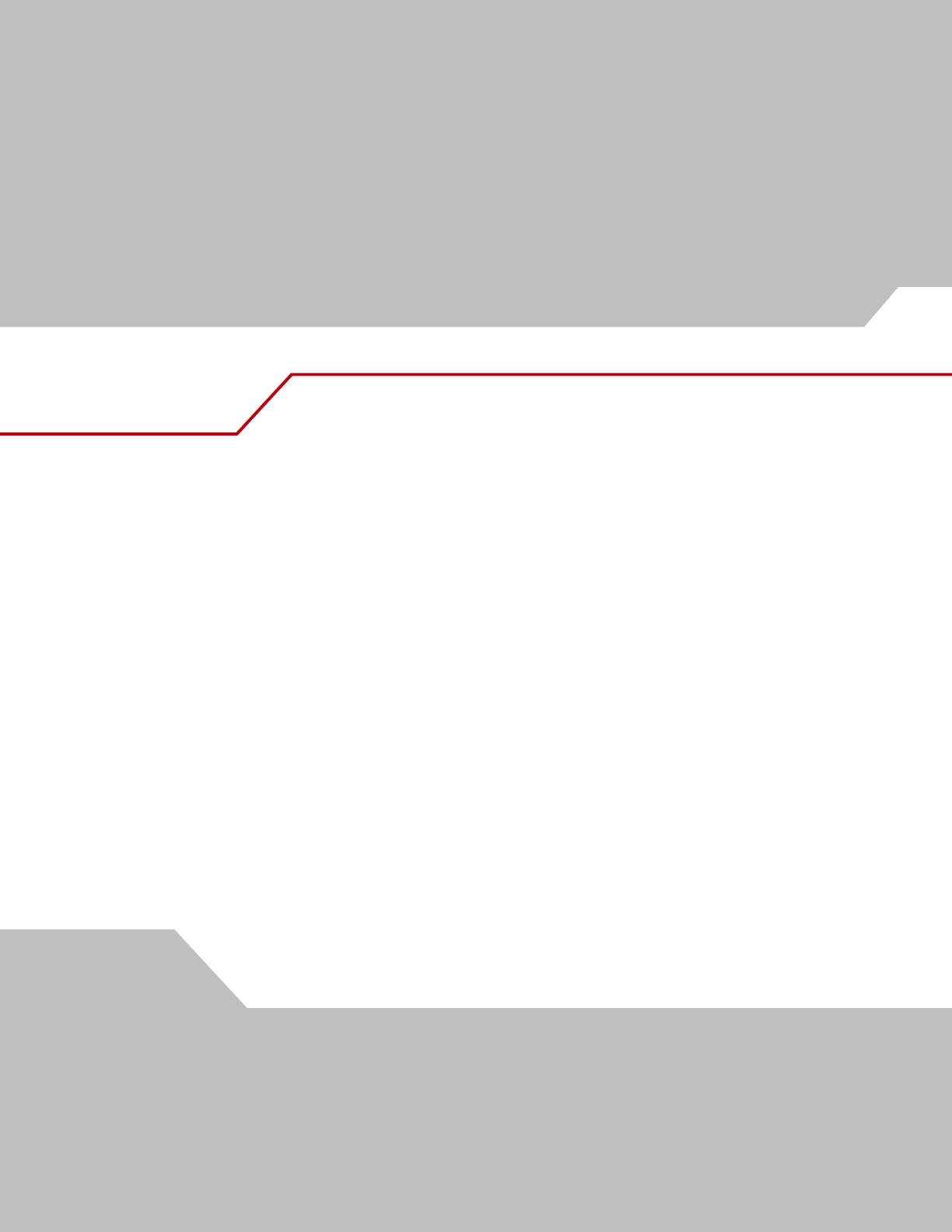
About This Guide
Contents
Introduction . . . . . . . . . . . . . . . . . . . . . . . . . . . . . . . . . . . . . . . . . . . . . . . . . . . . . . . . . . . . . . . . . . . . . . . . . . . . . . xi
Documentation Set . . . . . . . . . . . . . . . . . . . . . . . . . . . . . . . . . . . . . . . . . . . . . . . . . . . . . . . . . . . . . . . . . . . . . . . . . . . . . . xi
Configurations . . . . . . . . . . . . . . . . . . . . . . . . . . . . . . . . . . . . . . . . . . . . . . . . . . . . . . . . . . . . . . . . . . . . . . . . . . . xii
Chapter Descriptions . . . . . . . . . . . . . . . . . . . . . . . . . . . . . . . . . . . . . . . . . . . . . . . . . . . . . . . . . . . . . . . . . . . . . . xii
Notational Conventions . . . . . . . . . . . . . . . . . . . . . . . . . . . . . . . . . . . . . . . . . . . . . . . . . . . . . . . . . . . . . . . . . . . . xiii
Related Documents and Software. . . . . . . . . . . . . . . . . . . . . . . . . . . . . . . . . . . . . . . . . . . . . . . . . . . . . . . . . . . . xiii
Service Information . . . . . . . . . . . . . . . . . . . . . . . . . . . . . . . . . . . . . . . . . . . . . . . . . . . . . . . . . . . . . . . . . . . . . . . xiv
Symbol Support Center . . . . . . . . . . . . . . . . . . . . . . . . . . . . . . . . . . . . . . . . . . . . . . . . . . . . . . . . . . . . . . . . . . . . . . . . . . xiv

MC3000 User Guidexii
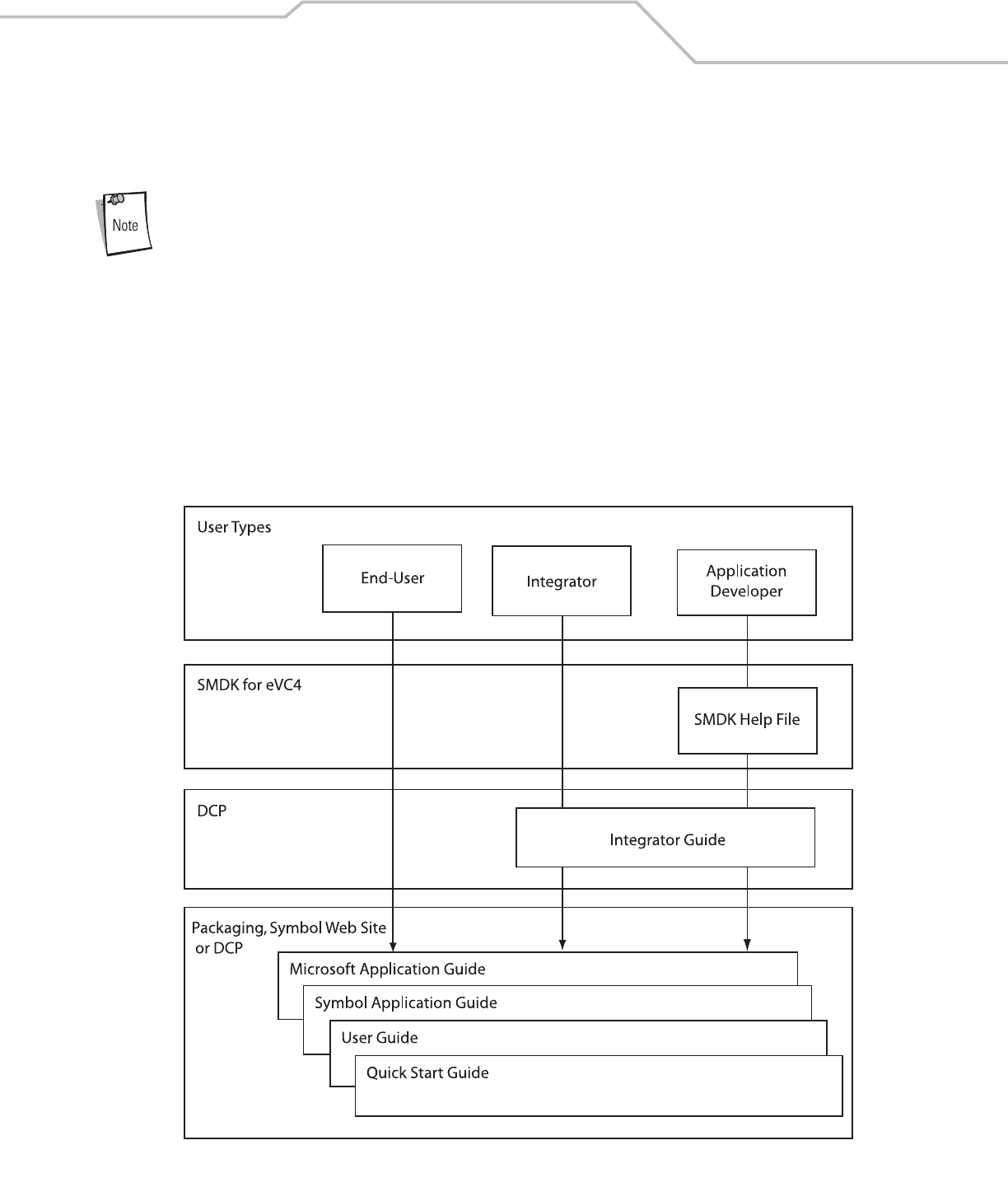
xiii
Introduction
This guide provides information about using the MC3000 mobile computers and accessories.
Screens and windows pictured in this guide are samples and may differ from actual screens.
Documentation Set
The documentation set for the MC3000 is divided into guides that provide information for specific user needs.
•Microsoft Application Guide - describes how to use Microsoft developed applications.
•Symbol Application Guide - describes how to use Symbol developed applications.
•MC3000 User Guide - describes how to use the MC3000 mobile computer.
•MC3000 Integrator Guide - describes how to set up the MC3000 mobile computer and the accessories.
•SMDK Help File - provides API information for writing applications.

MC3000 User Guidexiv
Configurations
This guide covers the following configurations:
MC3000-R - color or monochrome display, 32MB/64MB or 64MB/64MB memory, laser scanner in rotating turret, Windows CE .NET
5.0 Core or Windows CE .NET 5.0 Professional Operating System.
MC3090-G - 802.11b/g/a radio, color or monochrome display, 32MB/64MB or 64MB/64MB memory, laser scanner or imager,
Windows CE .NET 5.0 Core or Windows CE .NET 5.0 Professional Operating system, optional Bluetooth radio.
MC3090-K - 802.11b/g/a radio, color display, 64MB/64MB memory, imager, Windows CE .NET 5.0 Professional Operating System,
audio and optional Bluetooth radio.
MC3090-R - 802.11b/g/a radio, optional Bluetooth radio, color or monochrome display, 32MB/64MB or 64MB/64MB memory, laser
scanner in rotating turret, Windows CE .NET 5.0 Core or Windows CE .NET 5.0 Professional Operating System, audio and optional
Bluetooth radio.
Chapter Descriptions
Topics covered in this guide are as follows:
•Chapter 1, Getting Started, describes the mobile computer’s physical characteristics, how to install and charge the batteries,
remove and replace the Strap/Door assembly and how to start the mobile computer for the first time.
•Chapter 2, Operating the MC3000, provides basic instructions for using the mobile computer and navigating the mobile
computer software.
•Chapter 3, Using Bluetooth, explains how to perform Bluetooth functionality on the mobile computer.
•Chapter 4, Accessories, describes the accessories available for the mobile computer and how to use the accessories to
charge the mobile computer.
•Chapter 5, Maintenance & Troubleshooting, includes instructions on cleaning and storing the mobile computer, and provides
troubleshooting solutions for potential problems during mobile computer operation.
•Chapter A, Technical Specifications, includes a table listing the technical specifications for the mobile computer.
•Chapter B, Keypad Functions/Special Characters, contains special character generation tables.

xv
Notational Conventions
The following conventions are used in this document:
• The term “mobile computer” refers to the Symbol MC3000.
•Italics are used to highlight the following:
• Chapters and sections in this and related documents
• Dialog box, window and screen names
• Drop-down list and list box names
• Check box and radio button names
• Icons on a screen.
•Bold text is used to highlight the following:
• Key names on a keypad
• Button names on a screen.
• Bullets (•) indicate:
• Action items
• Lists of alternatives
• Lists of required steps that are not necessarily sequential.
• Sequential lists (e.g., those that describe step-by-step procedures) appear as numbered lists.
Related Documents and Software
The following items provide more information about the MC3000 mobile computers.
•MC3000-K/R Quick Start Guide, p/n 72-68902-xx
•MC3090-G Quick Start Guide, p/n 72-71347-xx
•MC3000 Licensing, Patent and Regulatory Information, p/n 72-68903-xx
•MC3000 Integrator Guide, p/n 72E-68900-xx
•Symbol Application Guide for Symbol Devices, p/n 72E-68901-xx
•Microsoft® Applications User Guide for Symbol Devices, p/n 72E-68197-xx
•Symbol Mobility Developer Kit (SMDK) Help File, p/n 72E-38880-02
•Windows CE Platform SDK for MC3000c42a/b, available at:
http://devzone.symbol.com
•Symbol Mobility Developer Kit for eMbedded Visual C++ v4.0 (SMDK for eVC4), available at:
http://devzone.symbol.com
• Device Configuration Package for MC3000 (DCP for MC3000), available at:
http://devzone.symbol.com
• ActiveSync software, available at: http://www.microsoft.com.
For the latest version of this guide and all guides, go to: http://www.symbol.com/manuals.

MC3000 User Guidexvi
Service Information
If an equipment problem occurs, contact the appropriate regional Symbol Support Center, see page xvi for contact information. Before
calling, have the model number, serial number and several bar code symbols at hand.
Call the Support Center from a phone near the scanning equipment so that the service person can try to talk through the problem. If
the equipment is found to be working properly and the problem is symbol readability, the Support Center will request samples of bar
codes for analysis at our plant.
If the problem cannot be solved over the phone, the equipment may need to be returned for servicing. If that is necessary, specific
directions will be provided.
Symbol Technologies is not responsible for any damages incurred during shipment if the approved shipping
container is not used. Shipping the units improperly can possibly void the warranty.
Symbol Support Center
For service information, warranty information or technical assistance contact or call the Symbol Support Center in:
United States
Symbol Technologies, Inc.
One Symbol Plaza
Holtsville, New York 11742-1300
1-800-653-5350
Canada
Symbol Technologies Canada, Inc.
5180 Orbitor Drive
Mississauga, Ontario L4W 5L9
905-629-7226
United Kingdom
Symbol Technologies
Symbol Place
Winnersh Triangle, Berkshire RG41 5TP
United Kingdom
0800 328 2424 (Inside UK)
+44 118 945 7529 (Outside UK)
Asia/Pacific
Symbol Technologies Asia, Inc.
230 Victoria Street #04-05
Bugis Junction Office Tower
Singapore 188024
337-6588 (Inside Singapore)
+65-337-6588 (Outside Singapore)
Australia
Symbol Technologies Pty. Ltd.
432 St. Kilda Road
Melbourne, Victoria 3004
1-800-672-906 (Inside Australia)
+61-3-9866-6044 (Outside Australia)
Austria/Österreich
Symbol Technologies Austria GmbH
Prinz-Eugen Strasse 70 / 2.Haus
1040 Vienna, Austria
01-5055794-0 (Inside Austria)
+43-1-5055794-0 (Outside Austria)
Denmark/Danmark
Symbol Technologies AS
Dr. Neergaardsvej 3
2970 Hørsholm
7020-1718 (Inside Denmark)
+45-7020-1718 (Outside Denmark)
Europe/Mid-East Distributor Operations
Contact your local distributor or call
+44 118 945 7360

xvii
Finland/Suomi
Oy Symbol Technologies
Kaupintie 8 A 6
FIN-00440 Helsinki, Finland
9 5407 580 (Inside Finland)
+358 9 5407 580 (Outside Finland)
France
Symbol Technologies France
Centre d'Affaire d'Antony
3 Rue de la Renaissance
92184 Antony Cedex, France
01-40-96-52-21 (Inside France)
+33-1-40-96-52-50 (Outside France)
Germany/Deutschland
Symbol Technologies GmbH
Waldstrasse 66
D-63128 Dietzenbach, Germany
6074-49020 (Inside Germany)
+49-6074-49020 (Outside Germany)
Italy/Italia
Symbol Technologies Italia S.R.L.
Via Cristoforo Columbo, 49
20090 Trezzano S/N Navigilo
Milano, Italy
2-484441 (Inside Italy)
+39-02-484441 (Outside Italy)
Latin America Sales Support
Latin America & The Caribbean
2730 University Drive
Coral Springs, Florida 33065
United States
+1.954.255.2610 (Outside US)
1-800-347-0178 (Inside US)
Fax: +1.954.340.9454
Mexico/México
Symbol Technologies Mexico Ltd.
Boulevard Manuel Ávila Camacho # 24- 9 Piso
Col. Lomas de Chapultepec
México DF: CP 11000
Mexico City, DF, Mexico
5-520-1835 (Inside Mexico)
+52-5-520-1835 (Outside Mexico)
Netherlands/Nederland
Symbol Technologies
Kerkplein 2, 7051 CX
Postbus 24 7050 AA
Varsseveld, Netherlands
315-271700 (Inside Netherlands)
+31-315-271700 (Outside Netherlands)
Norway/Norge
Symbol’s registered and mailing address:
Symbol Technologies Norway
Helsfyr Panorama
Innspurten 9
Oslo N-0663
Symbol’s repair depot and shipping address:
Symbol Technologies Norway
Enebakkveien 123
N-0680 OSLO, Norway
+47 2232 4375
South Africa
Symbol Technologies Africa Inc.
Block B2
Rutherford Estate
1 Scott Street
Waverly 2090 Johannesburg
Republic of South Africa
11-809 5311 (Inside South Africa)
+27-11-809 5311 (Outside South Africa)
Spain/España
Symbol Technologies S.L.
Avenida de Bruselas, 22
Edificio Sauce
Alcobendas, Madrid 28108
Spain
+913244000 (Inside Spain)
+34-9-1-320-39-09 (Outside Spain)

MC3000 User Guidexviii
If the Symbol product was purchased from a Symbol Business Partner, contact that Business Partner for service.
Sweden/Sverige
“Letter” address:
Symbol Technologies AB
Box 1354
S-171 26 SOLNA
Sweden
Visit/shipping address:
Symbol Technologies AB
Solna Strandväg 78
S-171 54 SOLNA
Sweden
Switchboard: 08 445 29 00 (domestic)
Call Center: +46 8 445 29 29 (international)
Support E-Mail: Sweden.Support@se.symbol.com
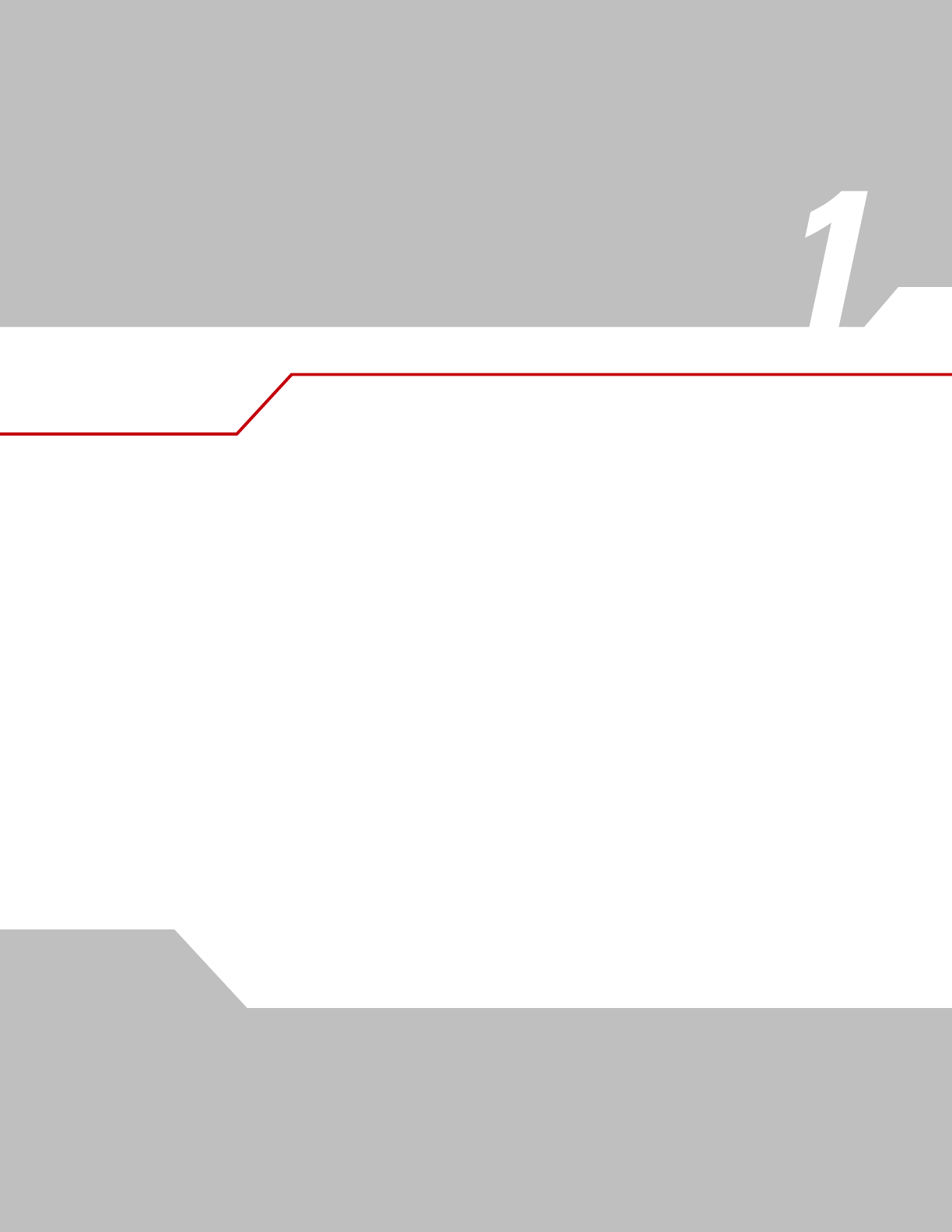
Getting Started
Chapter Contents
Introduction . . . . . . . . . . . . . . . . . . . . . . . . . . . . . . . . . . . . . . . . . . . . . . . . . . . . . . . . . . . . . . . . . . . . . . . . . . . . .1-3
Unpacking the Mobile Computer . . . . . . . . . . . . . . . . . . . . . . . . . . . . . . . . . . . . . . . . . . . . . . . . . . . . . . . . . . . . .1-3
Accessories . . . . . . . . . . . . . . . . . . . . . . . . . . . . . . . . . . . . . . . . . . . . . . . . . . . . . . . . . . . . . . . . . . . . . . . . . . . . .1-4
Parts . . . . . . . . . . . . . . . . . . . . . . . . . . . . . . . . . . . . . . . . . . . . . . . . . . . . . . . . . . . . . . . . . . . . . . . . . . . . . . . . . . .1-5
Rotating Scan Turret . . . . . . . . . . . . . . . . . . . . . . . . . . . . . . . . . . . . . . . . . . . . . . . . . . . . . . . . . . . . . . . . . .1-6
Mobile Computer Startup. . . . . . . . . . . . . . . . . . . . . . . . . . . . . . . . . . . . . . . . . . . . . . . . . . . . . . . . . . . . . . . . . . .1-7
Install Main Battery . . . . . . . . . . . . . . . . . . . . . . . . . . . . . . . . . . . . . . . . . . . . . . . . . . . . . . . . . . . . . . . . . . .1-7
Battery Charging. . . . . . . . . . . . . . . . . . . . . . . . . . . . . . . . . . . . . . . . . . . . . . . . . . . . . . . . . . . . . . . . . . . . . . . . .1-10
Spare Battery Charging . . . . . . . . . . . . . . . . . . . . . . . . . . . . . . . . . . . . . . . . . . . . . . . . . . . . . . . . . . . . . . . . . . .1-11
Stylus . . . . . . . . . . . . . . . . . . . . . . . . . . . . . . . . . . . . . . . . . . . . . . . . . . . . . . . . . . . . . . . . . . . . . . . . . . . . . . . . .1-11
Starting the Mobile Computer . . . . . . . . . . . . . . . . . . . . . . . . . . . . . . . . . . . . . . . . . . . . . . . . . . . . . . . . . . . . . .1-12
Calibration Screen . . . . . . . . . . . . . . . . . . . . . . . . . . . . . . . . . . . . . . . . . . . . . . . . . . . . . . . . . . . . . . . . . . .1-12
Demo Window . . . . . . . . . . . . . . . . . . . . . . . . . . . . . . . . . . . . . . . . . . . . . . . . . . . . . . . . . . . . . . . . . . . . . .1-12
Waking the Mobile Computer . . . . . . . . . . . . . . . . . . . . . . . . . . . . . . . . . . . . . . . . . . . . . . . . . . . . . . . . . . . . . .1-13
Main Battery Removal . . . . . . . . . . . . . . . . . . . . . . . . . . . . . . . . . . . . . . . . . . . . . . . . . . . . . . . . . . . . . . . . . . . .1-13
Strap/Door Assembly Removal and Replacement (MC3000-K/R). . . . . . . . . . . . . . . . . . . . . . . . . . . . . . . . . . .1-15
Strap/Door Assembly Removal and Replacement (MC3000-G) . . . . . . . . . . . . . . . . . . . . . . . . . . . . . . . . . . . .1-16

MC3000 User Guide1-2
Introduction
This chapter describes the mobile computer physical characteristics, how to install and charge the batteries, how to remove and
replace the Strap/Door Assembly and how to start the mobile computer for the first time.
Unpacking the Mobile Computer
Carefully remove all protective material from around the mobile computer and save the shipping container for later storage and
shipping. Verify that the equipment listed below is included:
• MC3000 mobile computer
• Strap/Door Assembly, attached to the mobile computer
•Stylus
• Regulatory Guide
• Quick Start Guide.
Depending on the configuration ordered, the mobile computer shipping container or additional shipping container may include:
• Standard battery (lithium-polymer)
• Extended life battery (lithium-ion)
• Cable(s)
• Power supply
• Cradles.
Inspect the equipment for damage. If any equipment is missing or damaged, contact the Symbol Technologies Support Center
immediately. See page xvi for contact information.

Getting Started 1-3
Accessories
Table 1-1 lists the MC3000 accessories.
Table 1-1. MC3000 Accessories
Accessory Description
Single Slot Serial/USB Cradle Charges the mobile computer main battery and a spare battery, and synchronizes the mobile computer with
a host computer through either a serial or USB connection.
Four Slot Charge Only Cradle Charges up to four mobile computers.
Four Slot Ethernet Cradle Charges up to four mobile computers and provides Ethernet communications.
Four Slot Spare Battery Charger Charges up to four mobile computer spare batteries.
Power Supply Country specific and accessory specific, power supply.
USB Client Charge Cable Provides USB client communication capabilities and charges the mobile computer.
RS232 Charge Cable Provides RS232 communication capabilities and charges the mobile computer.
O’Neil Printer Cable Provides printer specific communication capabilities (provided by O’Neil).
Zebra Printer Cable Provides printer specific communication capabilities (provided by Zebra).
Monarch Printer Cable Provides printer specific communication capabilities (provided by Monarch).
Single Slot Cradle RS232 Cable Provides serial host communication capabilities and charges the mobile computer.
Single Slot Cradle USB Cable Provides USB communication capabilities and charges the mobile computer.
MC3000 Universal Battery Charger Adapter (UBC) Adapts the UBC for use with MC3000 batteries.
Stylus Performs pen and mouse functions.
Plastic Holster Provides a clip on holder for the mobile computer.
Fabric Holster Provides a soft, clip on holder and a shoulder strap for the mobile computer.
Symbol Mobility Developer Kit for eMbedded Visual
C++ v4.0 (SMDK for eVC4)
A development tool used to create native C and C++ applications for all Symbol mobile computers
running the Microsoft Windows CE operating system. Available at: http://devzone.symbol.com.
Device Configuration Package (DCP) for MC3000 A development tool used to create and download hex images that represent flash partitions to the mobile
computer. Available at: http://devzone.symbol.com.
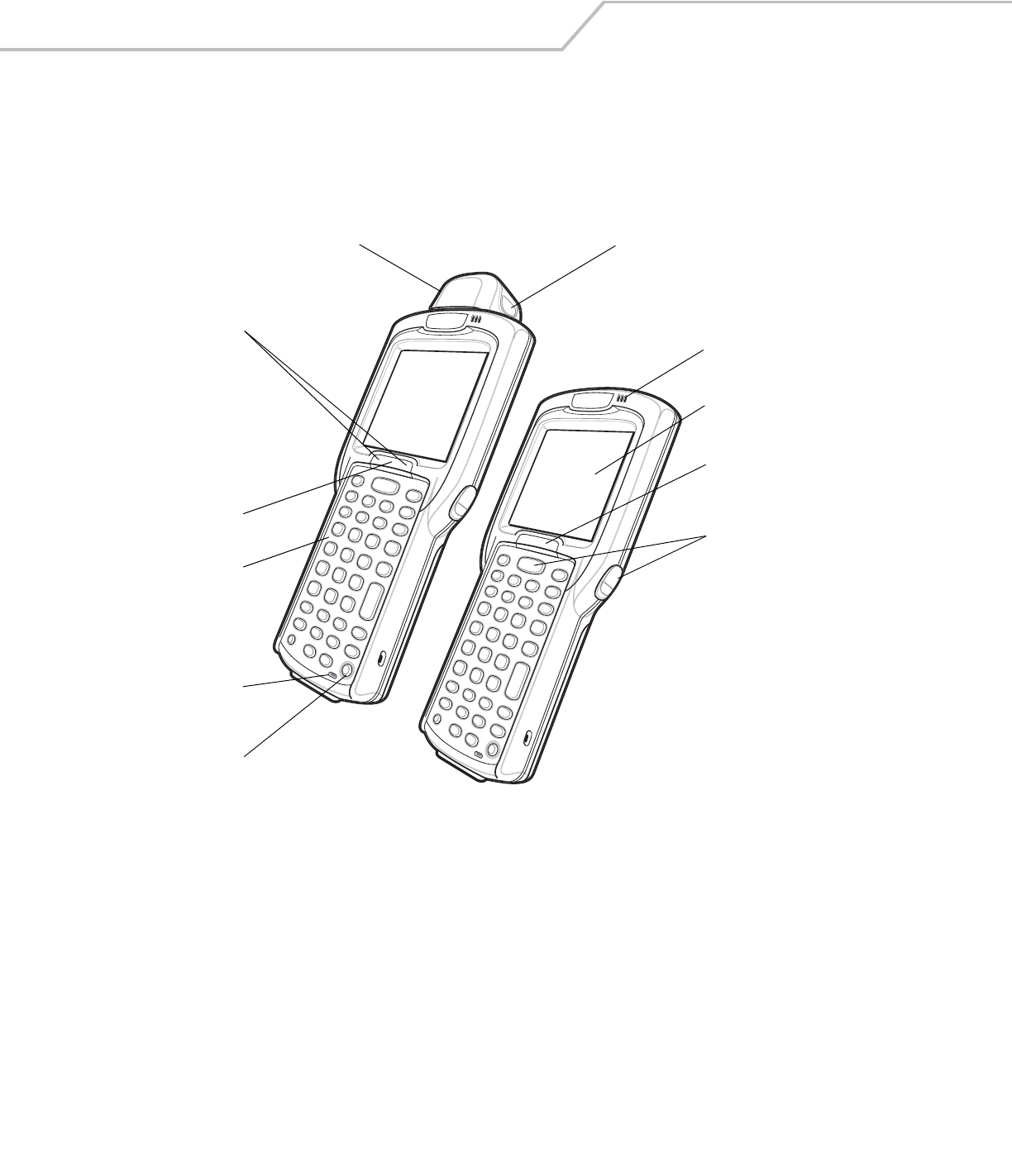
MC3000 User Guide1-4
Parts
There are three versions of the MC3000 mobile computers, the MC3000 1D/2D Imager (MC3000-K or MC3090-K), the MC3000 Laser
with Rotating Scan Turret (MC3000-R or MC3090-R) and the MC3090 Gun (MC3090-G). For more information on the Rotating Scan
Turret, see Figure 1-3 on page 1-5.
Figure 1-1. MC3000 Imager and MC3000 Laser Mobile Computers (Front View)
Keypad
Indicator LED
Bar
Display
Scan LED Indicator
(red/green)
Power
Scan Buttons
MC3000-R MC3000-K
Rotating
Scan Turret
Beeper or Receiver
(optional)
Microphone
(optional)
Scan LED
Indicators
(red/green)
Charge LED
Indicator
(amber)
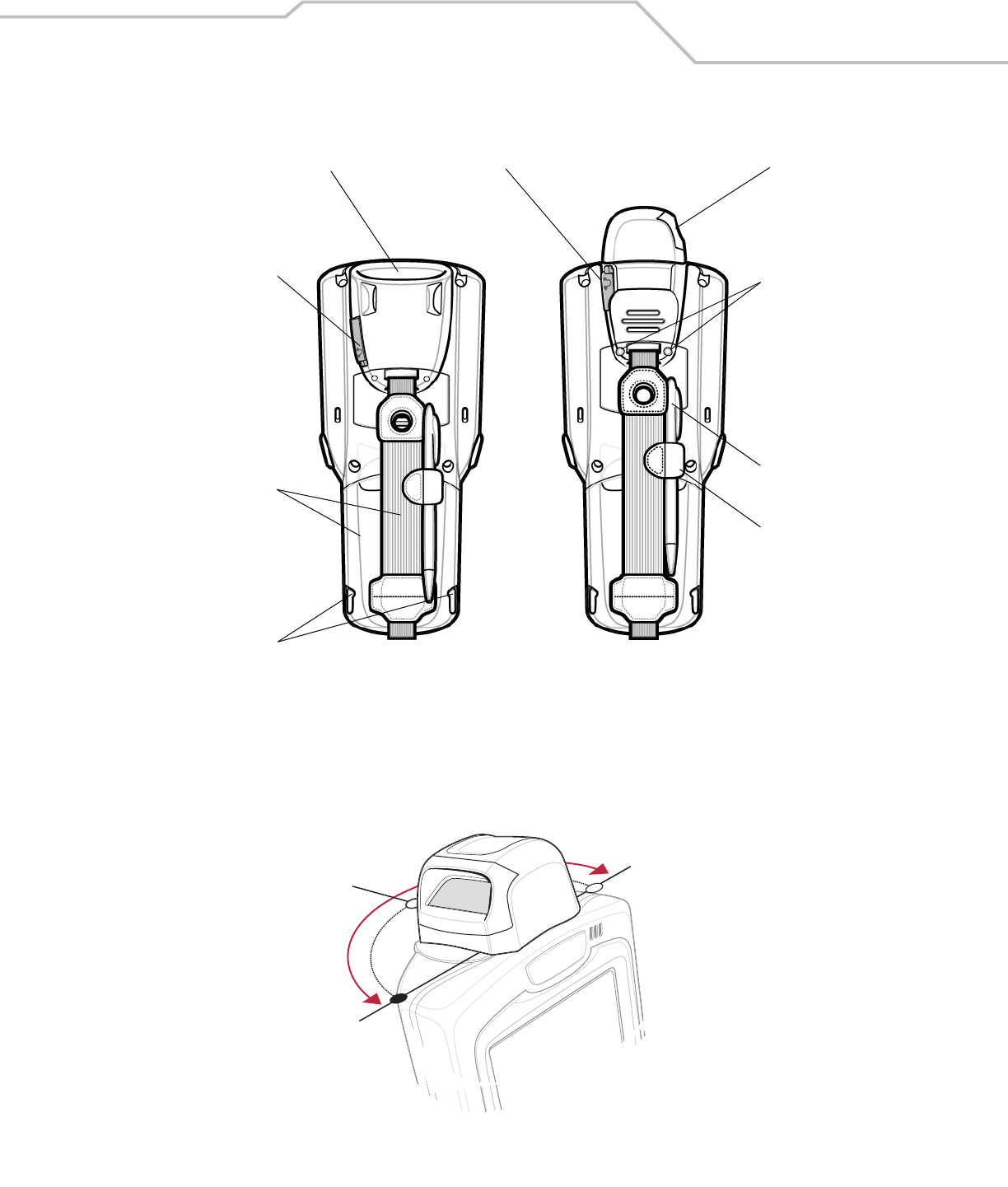
Getting Started 1-5
Figure 1-2. MC3000 Imager and MC3000 Laser Mobile Computers (Back View)
Rotating Scan Turret
The MC3000-R mobile computer features a Rotating Scan Turret with three position stops. This feature offers greater scanning
flexiblilty.
Figure 1-3. Rotating Scan Turret
Strap/Door
Assembly
Scan Window
Stylus
MC3000-K MC3000-R
Latches
Strap/Door
Assembly
Screws
Stylus
Holder
Headset Jack
(optional)
Headset Jack
(optional)
Scan Window
Position Stop
Position Stop
Position Stop
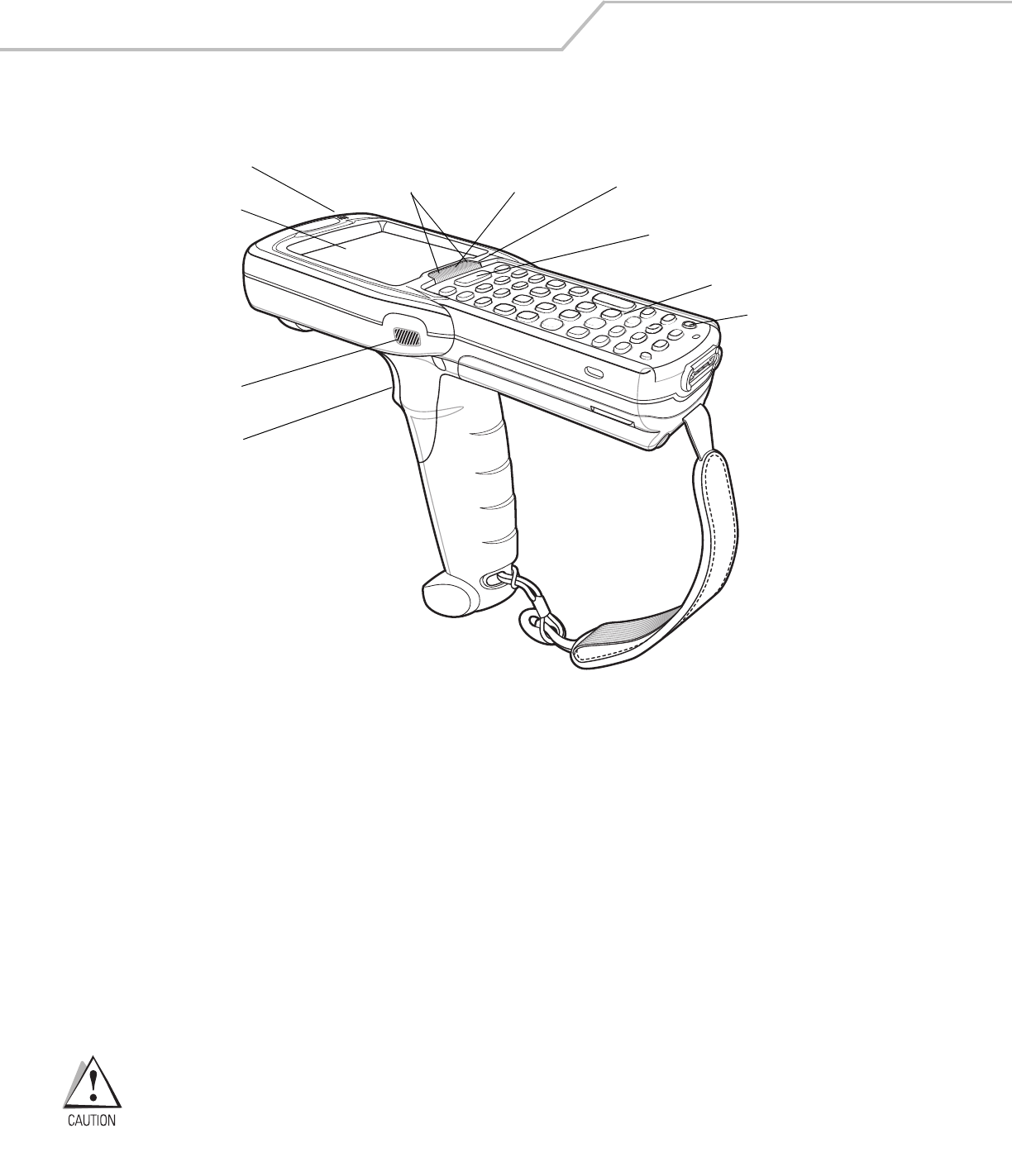
MC3000 User Guide1-6
Figure 1-4. MC3000-G Mobile Computer
Mobile Computer Startup
To start using the mobile computer:
• Install the main battery.
• Charge the main battery and the backup battery.
• Start the mobile computer.
Install Main Battery
If the main battery is charged, the mobile computer can be used immediately. If the main battery is not charged, see Battery Charging
on page 1-9. To remove the main battery, see Main Battery Removal on page 1-12.
To install the main battery:
1. Rotate the latches to the open position.
Do not lift up on the latches when removing the Strap/Door Assembly. Lift up on the Hand Strap only.
2. Pull on the strap to lift the Strap/Door Assembly off, bottom first.
Keypad
Indicator LED Bar
Display
Power
Scan Button
Beeper
Trigger
Scan LED
Indicators
(red/green)
Charge LED
Indicator
(amber)
Scan LED
Indicator
(red/green)
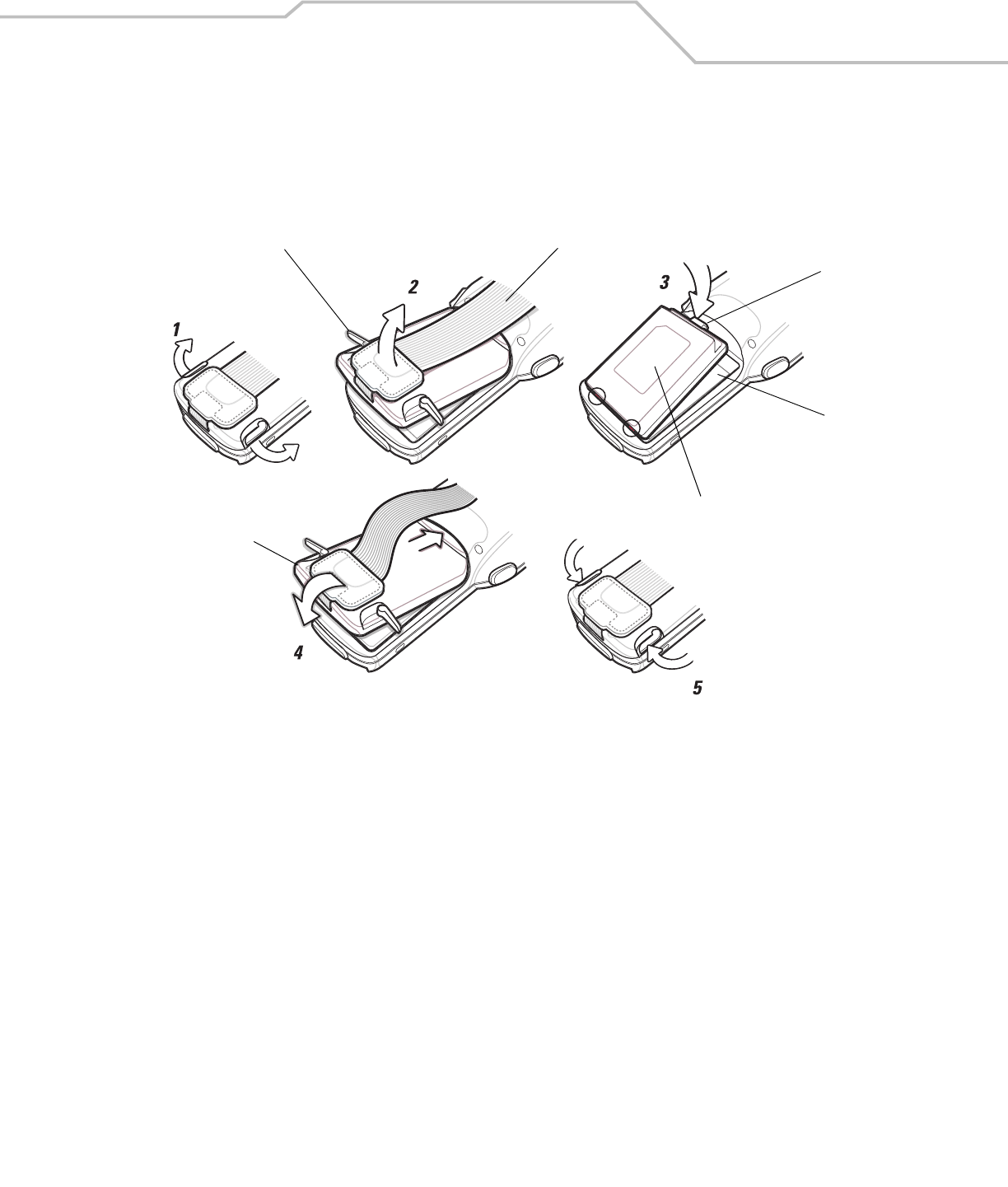
Getting Started 1-7
3. Insert the battery into the slot, bottom first and press the battery gently into the slot. The battery clip locks the battery into
place.
4. With the latches in the open position, replace the Strap/Door Assembly, top first and press to close.
5. Rotate the latches (to the lock position) to lock the Strap/Door Assembly in place.
Figure 1-5. Main Battery Installation (MC3000-K/R)
Battery Clip
Strap/Door
Assembly
Battery
Battery Slot
Hand Strap
Latches
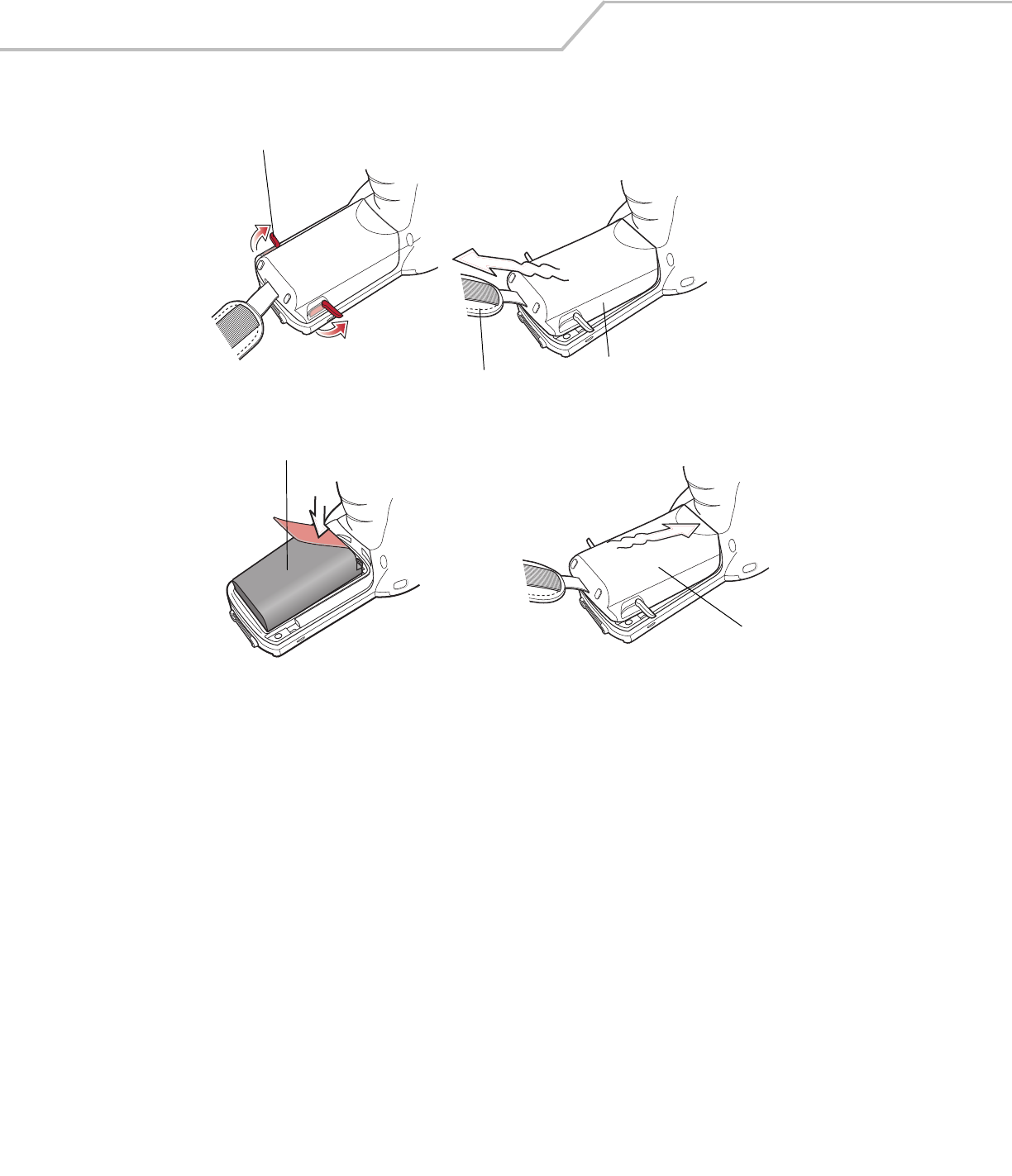
MC3000 User Guide1-8
Figure 1-6. Main Battery Installation (MC3000-G)
Strap/Door
Assembly
Battery
Hand Strap
Latches
Strap/Door
Assembly

Getting Started 1-9
Battery Charging
Use the mobile computer cradles, cables and spare battery chargers to charge the mobile computer main battery.
The main battery can be charged before insertion into the mobile computer or after it is installed. There are two main batteries for
the MC3000, the Standard Battery and the Extended Life Battery. Either battery can be used, but the Extended Life Battery requires
a different Strap/Door Assembly. Use one of the spare battery chargers to charge the main battery (out of the mobile computer) or
one of the cradles to charge the main battery while it is installed in the mobile computer.
Before using the mobile computer for the first time, fully charge the main battery. When the main battery is fully charged, the amber
Charge LED Indicator remains lit. For more information see Table 1-2 on page 1-10. Charge time for the Standard Battery is usually
less than four hours and charge time for the Extended Life Battery is usually less than six hours.
The mobile computer is equipped with a memory backup battery which automatically charges from the fully-charged main battery.
When the mobile computer is used for the first time, the backup battery requires approximately 15 hours to fully charge. This is also
true any time the backup battery is discharged which occurs when the main battery is removed for several hours. The backup battery
retains data in memory for at least 30 minutes after the mobile computer main battery is removed. When the mobile computer reaches
very low battery state, the combination of main battery and backup battery retains data in memory for at least 72 hours.
Do not remove the main battery within the first 15 hours of use. If the main battery is removed before the backup battery
is fully charged, data may be lost.
Batteries must be charged within the 32° to 104° F (0° to +40° C) ambient temperature range.
The following accessories can be used to charge batteries:
• Cradles (and a power supply):
• Single Slot Serial/USB Cradle
• Four Slot Cradles.
• Cables (and a power supply):
• USB Client Charge Cable
• Serial (RS232) Charge Cable.
• Spare Battery Chargers (and a power supply):
• Single Slot Serial/USB Cradle
• Four Slot Spare Battery Charger
• Universal Battery Charger (UBC) Adapter.
To charge the mobile computer using the cradles:
1. Insert the mobile computer into a cradle. See Chapter 4, Accessories for accessory setup.
2. The mobile computer starts to charge automatically. The amber Charge LED Indicator indicates the charge status. See Table
1-2 on page 1-10 for charging indications.
To charge the mobile computer using the cables:
1. Connect the MC3000 Communication/Charge Cable to the appropriate power source and connect to the mobile computer.
See Chapter 4, Accessories for accessory setup.
2. The mobile computer starts to charge automatically. The amber Charge LED Indicator indicates the charge status. See Table
1-2 for charging indications.
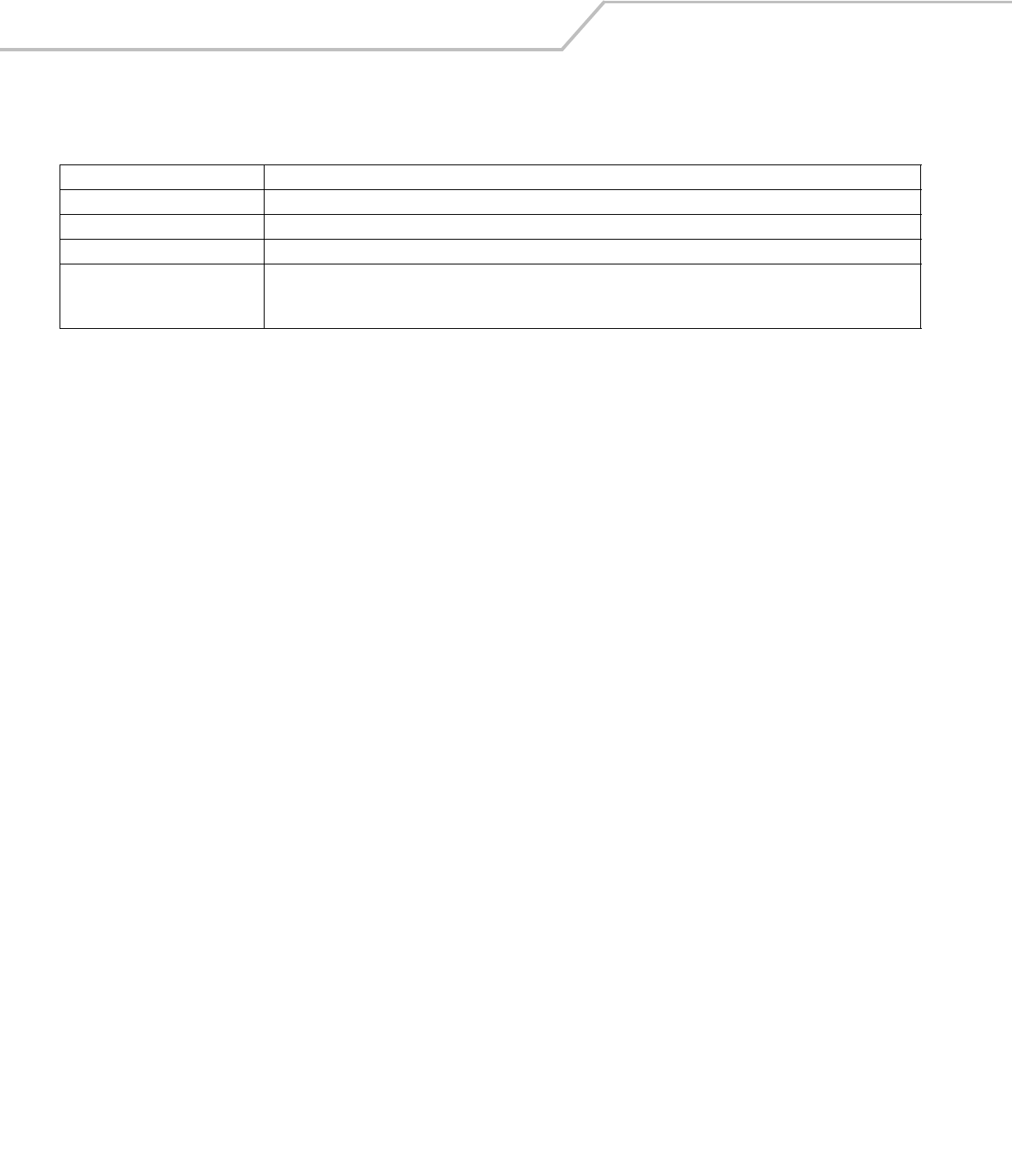
MC3000 User Guide1-10
Spare Battery Charging
There are three accessories that can be used to charge a spare battery:
• Single Slot Serial/USB Cradle
• Four Slot Spare Battery Charger
•UBC Adapter.
To charge a spare battery:
1. Connect the charging accessory to the appropriate power source. See Chapter 4, Accessories for setup instructions.
2. Insert the spare battery into the spare battery charging slot and gently press down on the battery to ensure proper contact.
The battery starts to charge automatically. The amber charge LED Indicator lights to indicate the charge status. See Chapter 4,
Accessories for charging indications. The Standard Battery usually fully charges in less than four hours and the Extended Life Battery
usually fully charges in less than six hours.
Stylus
Use the stylus for selecting items and entering information on the screen. The stylus functions as a pen and a mouse. Tap the touch
screen once with the stylus to select options and open menu items.
To remove the stylus, slide the stylus out of the stylus holder. To store the stylus, push the stylus back into the stylus holder.
Table 1-2. Mobile Computer LED Charge Indicators
LED Indication
Off Mobile computer not placed correctly in the cradle; charge cable not connected correctly; charger is not powered.
Fast Blinking Amber Error in charging; check placement of the mobile computer.
Slow Blinking Amber Mobile computer is charging.
Solid Amber Charging complete.
Note: When the battery is initially inserted in the mobile computer, the amber LED flashes once if the battery power is low
or the battery is not fully inserted.
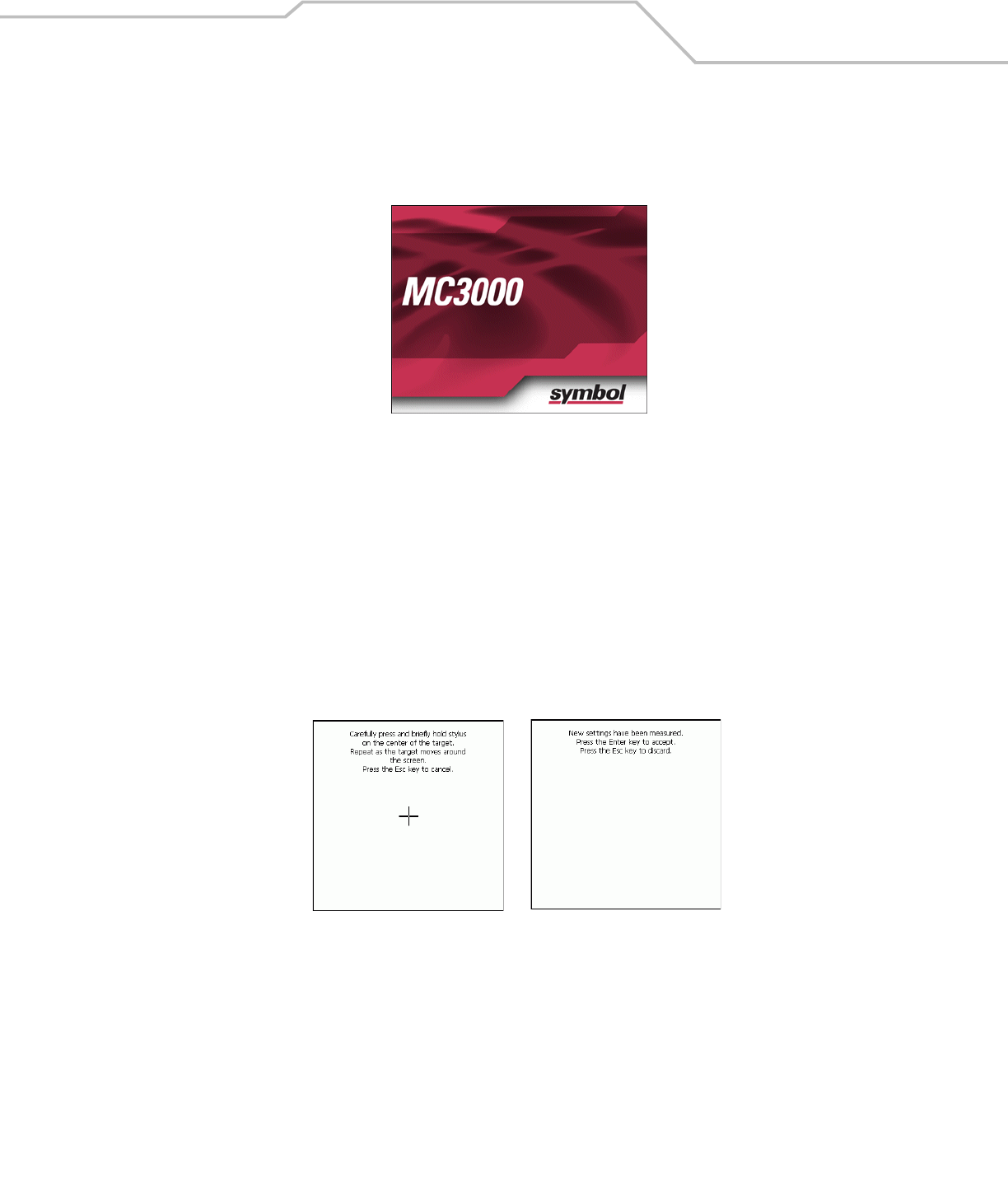
Getting Started 1-11
Starting the Mobile Computer
When the mobile computer is powered on for the first time, it initializes. The Symbol Splash screen appears for a short period of time,
followed by the Calibration screen.
Figure 1-7. Symbol Splash Screen
After the calibration procedure is performed the factory settings launch the Demo window. Application specific shells may provide
application specific windows instead of the Demo window. These screens also appear when a cold boot is performed.
If the mobile computer does not power on, see Resetting the Mobile Computer on page 2-23.
Calibration Screen
Use the Calibration screen to align the touch screen:
1. Remove the stylus from the stylus holder.
2. Carefully press and briefly hold the stylus tip on the center of the Calibration screen target. Repeat the procedure as the
target moves and stops at different locations on the screen. This enters the new calibration settings.
Figure 1-8. Calibration Screen
3. Once all of the new calibration settings are input, tap the screen or press the ENTER button to save the new calibration
settings. Press ESC to discard the new calibration settings.
Demo Window
The Demo window is the factory default menu. On initial power up (or on a warm or cold boot) the Demo window appears. These
sample/demo applications are intended to be used by application developers as application development examples. These
Calibration Screen Confirm Calibration Resave
Screen
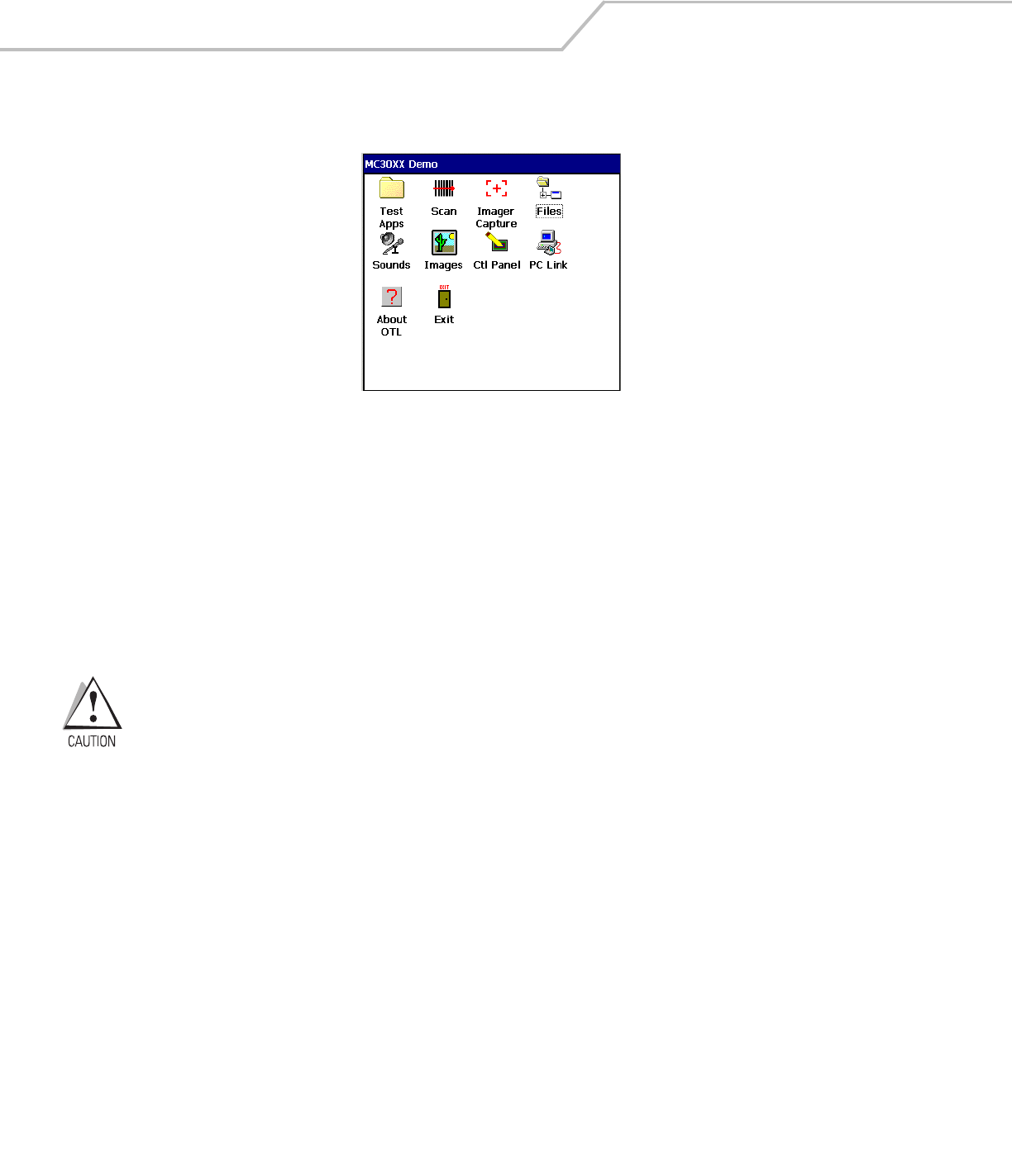
MC3000 User Guide1-12
applications were not developed to support end users. Refer to the Symbol Application Guide for information about the Demo window
applications.
Figure 1-9. Demo Window
Waking the Mobile Computer
The wakeup condition settings are used to define what actions wake up the mobile computer. The settings are configurable so they
are subject to change/update. For more information see, Waking the Mobile Computer on page 2-24.
Main Battery Removal
Before removing the main battery, press the red Power button to turn off the screen. This sets the mobile computer to suspend mode.
To remove the main battery:
1. Rotate the latches to the open position.
Do not lift up on the latches when removing the Strap/Door Assembly. Lift up on the Hand Strap only.
2. Lift the Hand Strap to lift the Strap/Door Assembly off, bottom first.
3. Release battery:
a. On the MC3000-K/R, release the battery clip (at the top of the battery) and lift the battery out top first.
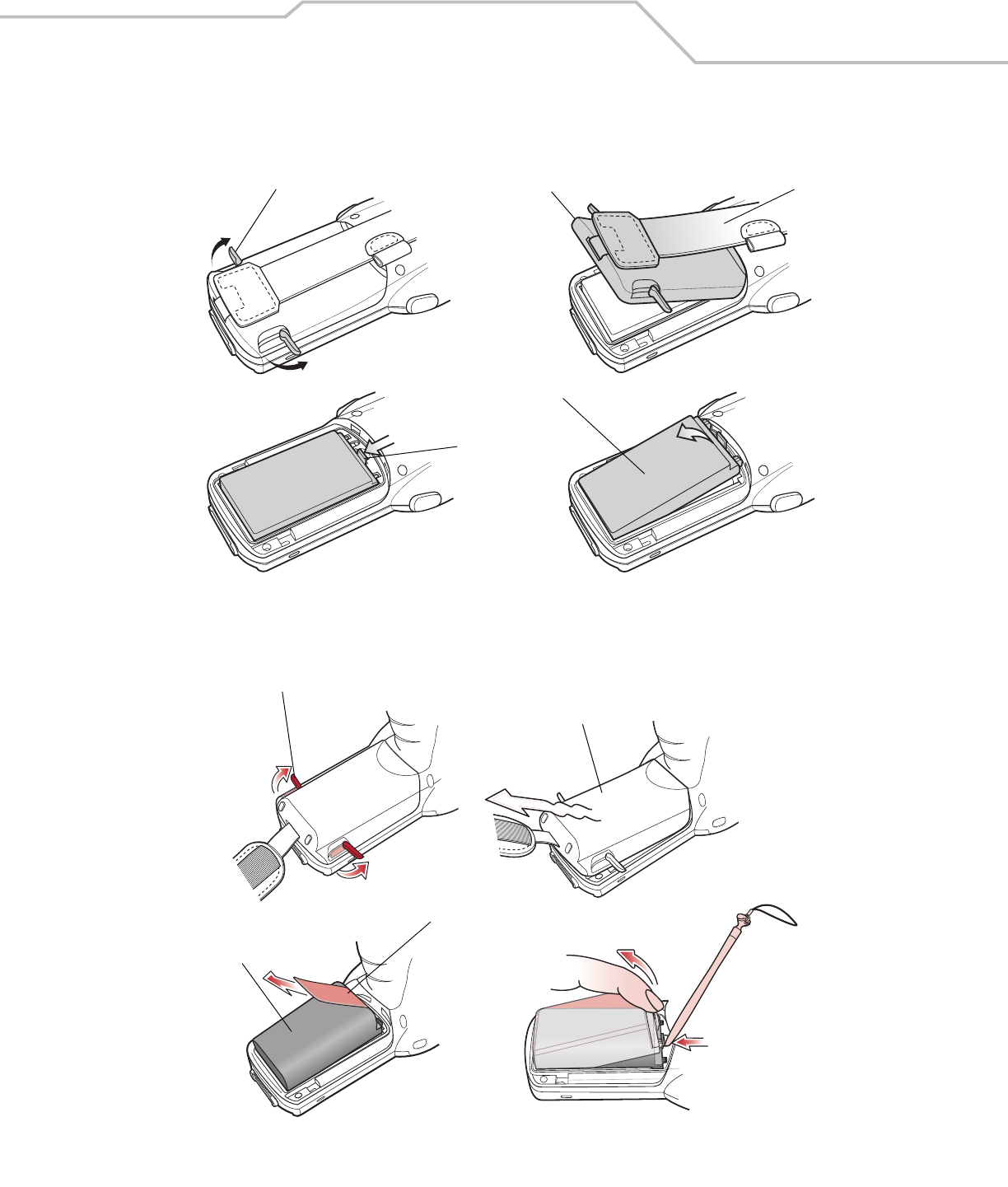
Getting Started 1-13
b. On the MC3090-G, pull the battery pull tab to unclip the battery and lift the battery out top first. If the battery does not
have a pull tab, use the stylus to unclip the battery and then lift the battery.
Figure 1-10. Main Battery Removal (MC3000-K/R)
Figure 1-11. Main Battery Removal (MC3090-G)
Battery Clip
Latches Strap/Door
Assembly
Battery
Hand Strap
Strap/Door
Assembly
Battery
Latches
Battery Pull Tab
Battery with Pull Tab Battery without Pull Tab
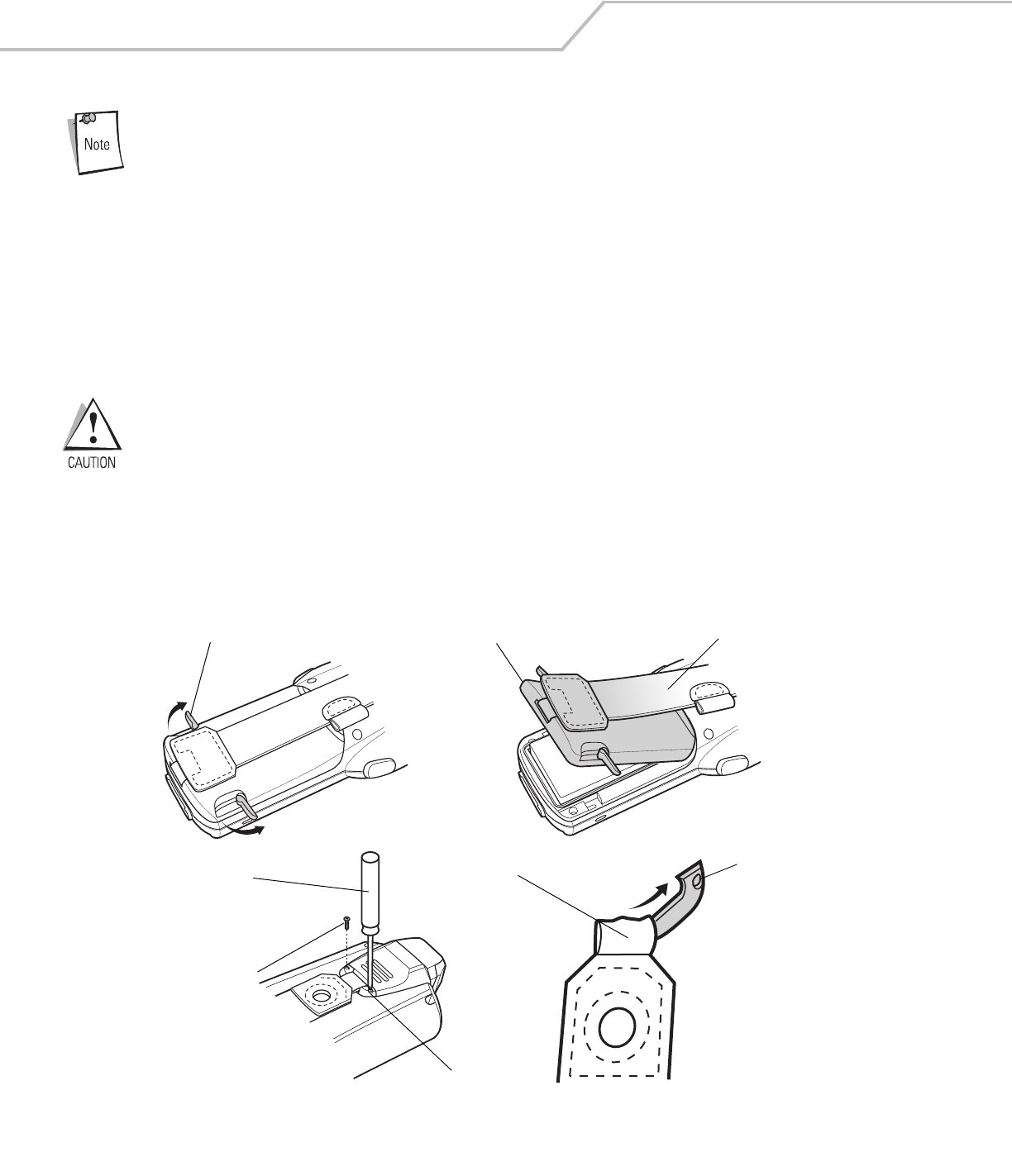
MC3000 User Guide1-14
The SD card holder is located under the battery. To install the SD card, see Secure Device Card on page 4-13.
Strap/Door Assembly Removal and Replacement (MC3000-K/R)
The Strap/Door Assembly consists of a hand strap and the battery door. There are two versions of this assembly, one for the Standard
Battery and one for the Extended Life Battery. Before removing the Strap/Door Assembly, press the red Power button to turn off the
screen and set the mobile computer to suspend mode.
To remove the Strap/Door Assembly:
1. Rotate the latches to the open position.
Do not lift up on the latches when removing the Strap/Door Assembly. Lift up on the Hand Strap only.
2. Lift the Hand Strap to lift the Strap/Door Assembly off, bottom first.
3. Use a #00 Phillips screwdriver to remove the screws.
4. Lift the mounting clip.
5. Slide the mounting clip out of the strap loop.
Reverse the procedure to replace the Strap/Door Assembly.
Figure 1-12. Strap/Door Removal and Replacement (MC3000-K/R)
Strap/Door
Assembly
Latches
Screws
#00 Phillips
Screwdriver
Mounting
Clip
Strap Loop
Mounting
Clip
Hand Strap
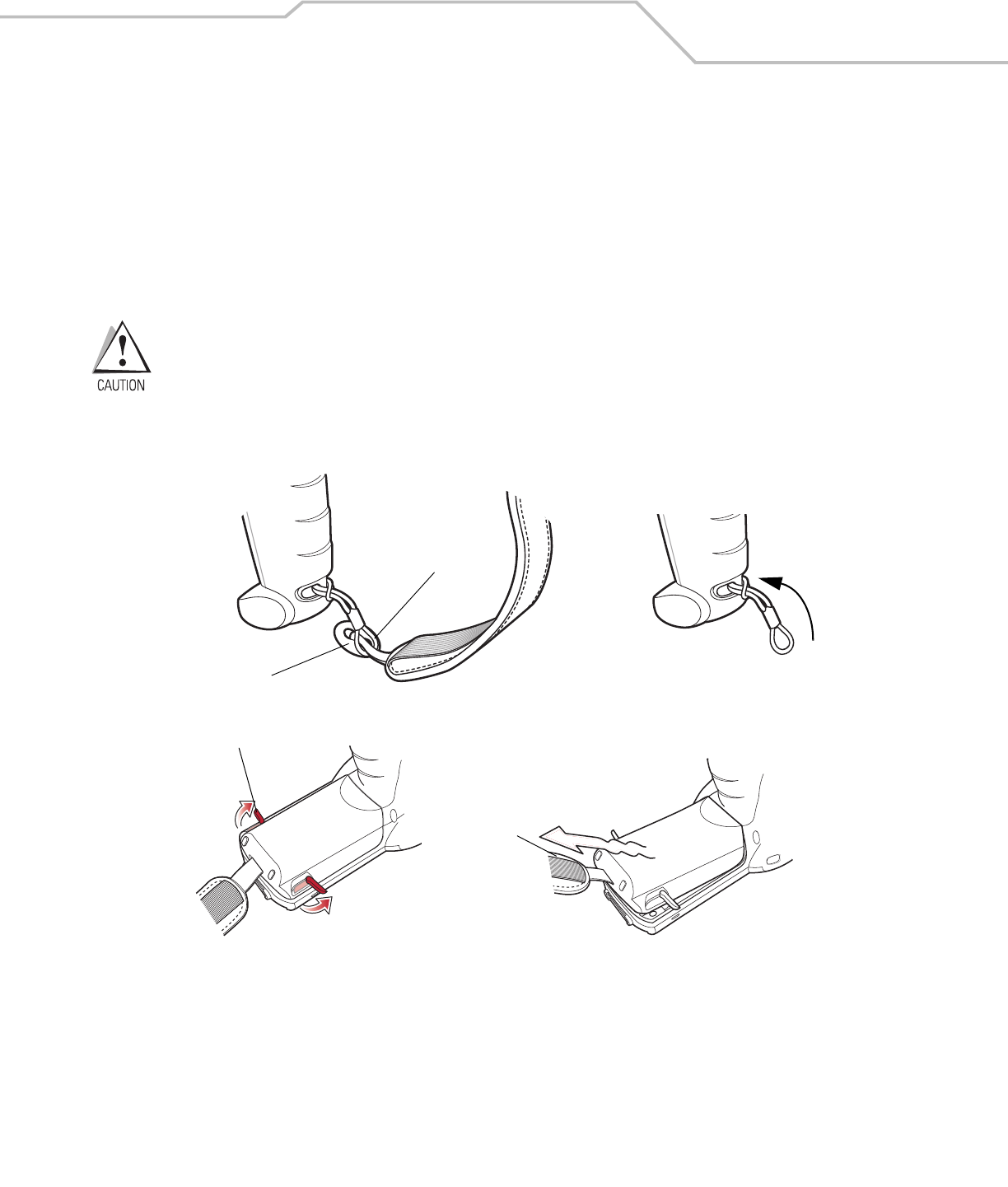
Getting Started 1-15
Strap/Door Assembly Removal and Replacement (MC3090-G)
The Strap/Door Assembly consists of a hand strap and the battery door. Before removing the Strap/Door Assembly, press the red
Power button to turn off the screen and set the mobile computer to suspend mode.
To remove the Strap/Door Assembly:
1. Slip the button through the loop.
2. Remove loop section from handle.
3. Rotate the latches to the open position.
Do not lift up on the latches when removing the Strap/Door Assembly. Lift up on the Hand Strap only.
4. Lift the Hand Strap to lift the Strap/Door Assembly off, bottom first.
Reverse the procedure to replace the Strap/Door Assembly.
Figure 1-13. Strap/Door Removal and Replacement (MC3090-G)
Strap/Door
Assembly
Latches
Button
Loop

MC3000 User Guide1-16
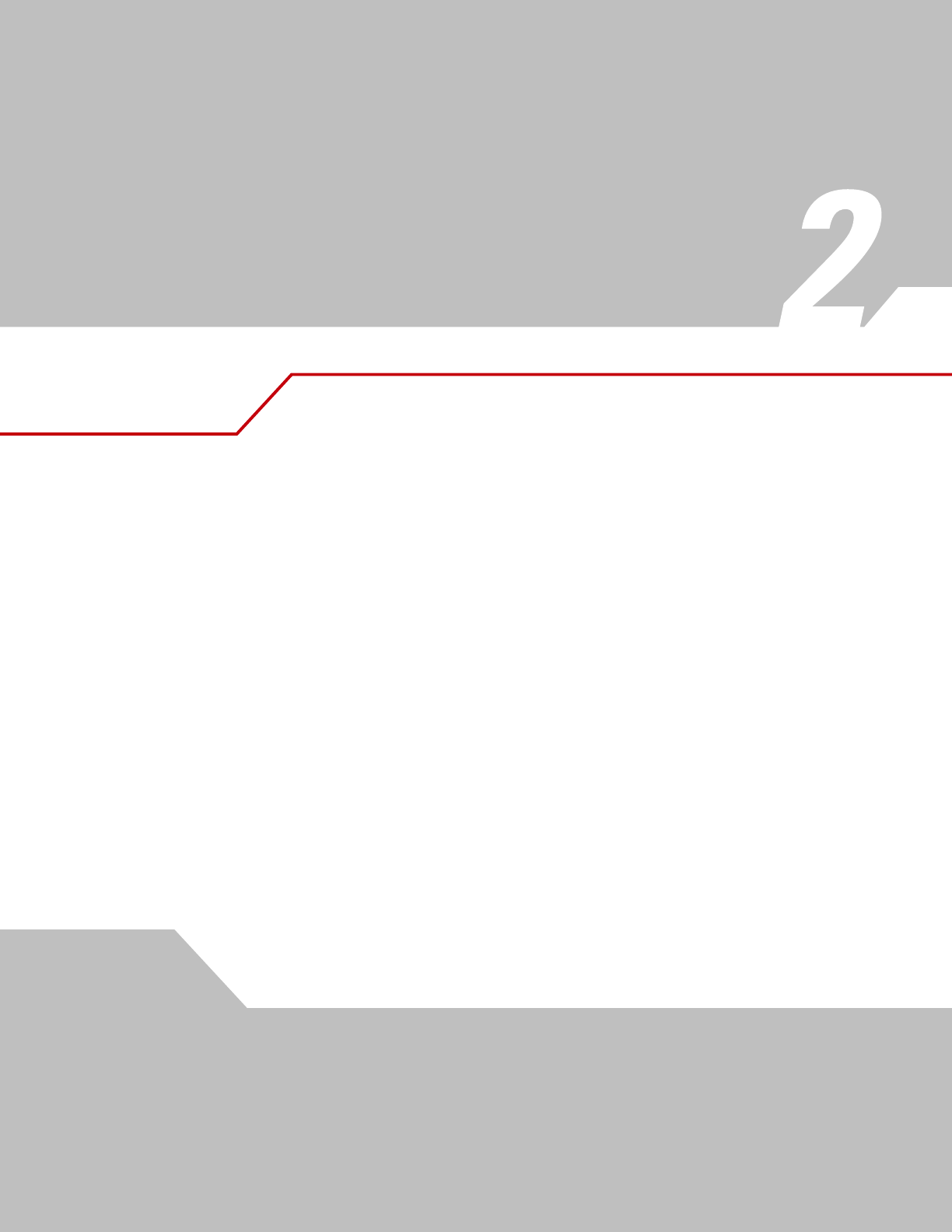
Operating the MC3000
Chapter Contents
Introduction . . . . . . . . . . . . . . . . . . . . . . . . . . . . . . . . . . . . . . . . . . . . . . . . . . . . . . . . . . . . . . . . . . . . . . . . . . . . .2-3
Power Button . . . . . . . . . . . . . . . . . . . . . . . . . . . . . . . . . . . . . . . . . . . . . . . . . . . . . . . . . . . . . . . . . . . . . . . . . . . .2-3
Keypads . . . . . . . . . . . . . . . . . . . . . . . . . . . . . . . . . . . . . . . . . . . . . . . . . . . . . . . . . . . . . . . . . . . . . . . . . . . . . . . .2-3
Keypad Special Functions . . . . . . . . . . . . . . . . . . . . . . . . . . . . . . . . . . . . . . . . . . . . . . . . . . . . . . . . . . . . . . . . . .2-3
28-Key Keypad . . . . . . . . . . . . . . . . . . . . . . . . . . . . . . . . . . . . . . . . . . . . . . . . . . . . . . . . . . . . . . . . . . . . . . .2-4
38-Key Keypad . . . . . . . . . . . . . . . . . . . . . . . . . . . . . . . . . . . . . . . . . . . . . . . . . . . . . . . . . . . . . . . . . . . . . . .2-6
48-Key Keypad . . . . . . . . . . . . . . . . . . . . . . . . . . . . . . . . . . . . . . . . . . . . . . . . . . . . . . . . . . . . . . . . . . . . . . .2-8
Demo Window . . . . . . . . . . . . . . . . . . . . . . . . . . . . . . . . . . . . . . . . . . . . . . . . . . . . . . . . . . . . . . . . . . . . . . . . . .2-10
Desktop Window . . . . . . . . . . . . . . . . . . . . . . . . . . . . . . . . . . . . . . . . . . . . . . . . . . . . . . . . . . . . . . . . . . . . . . . .2-10
Taskbar. . . . . . . . . . . . . . . . . . . . . . . . . . . . . . . . . . . . . . . . . . . . . . . . . . . . . . . . . . . . . . . . . . . . . . . . . . . . . . . .2-11
Battery Unknown Icon . . . . . . . . . . . . . . . . . . . . . . . . . . . . . . . . . . . . . . . . . . . . . . . . . . . . . . . . . . . . . . . .2-12
Start Button . . . . . . . . . . . . . . . . . . . . . . . . . . . . . . . . . . . . . . . . . . . . . . . . . . . . . . . . . . . . . . . . . . . . . . . .2-12
Programs Menu . . . . . . . . . . . . . . . . . . . . . . . . . . . . . . . . . . . . . . . . . . . . . . . . . . . . . . . . . . . . . . . . . . . . .2-13
Keyboard Input Panel Button . . . . . . . . . . . . . . . . . . . . . . . . . . . . . . . . . . . . . . . . . . . . . . . . . . . . . . . . . . .2-13
Desktop Display Button . . . . . . . . . . . . . . . . . . . . . . . . . . . . . . . . . . . . . . . . . . . . . . . . . . . . . . . . . . . . . . .2-13
Task Manager and Properties . . . . . . . . . . . . . . . . . . . . . . . . . . . . . . . . . . . . . . . . . . . . . . . . . . . . . . . . . . . . . .2-14
Task Manager. . . . . . . . . . . . . . . . . . . . . . . . . . . . . . . . . . . . . . . . . . . . . . . . . . . . . . . . . . . . . . . . . . . . . . .2-14
Properties . . . . . . . . . . . . . . . . . . . . . . . . . . . . . . . . . . . . . . . . . . . . . . . . . . . . . . . . . . . . . . . . . . . . . . . . . .2-14
Entering Information. . . . . . . . . . . . . . . . . . . . . . . . . . . . . . . . . . . . . . . . . . . . . . . . . . . . . . . . . . . . . . . . . . . . . .2-15
Entering Information Using Keypad . . . . . . . . . . . . . . . . . . . . . . . . . . . . . . . . . . . . . . . . . . . . . . . . . . . . . .2-15
Entering Information Using the Keyboard Input Panel . . . . . . . . . . . . . . . . . . . . . . . . . . . . . . . . . . . . . . .2-16
Entering Data via the Bar Code Scanner . . . . . . . . . . . . . . . . . . . . . . . . . . . . . . . . . . . . . . . . . . . . . . . . .2-16
Data Capture . . . . . . . . . . . . . . . . . . . . . . . . . . . . . . . . . . . . . . . . . . . . . . . . . . . . . . . . . . . . . . . . . . . . . . . . . . .2-16
Laser Scanning. . . . . . . . . . . . . . . . . . . . . . . . . . . . . . . . . . . . . . . . . . . . . . . . . . . . . . . . . . . . . . . . . . . . . .2-16

MC3000 User Guide2-2
Scan LED Indicators . . . . . . . . . . . . . . . . . . . . . . . . . . . . . . . . . . . . . . . . . . . . . . . . . . . . . . . . . . . . . . . . . .2-17
Scanning Considerations . . . . . . . . . . . . . . . . . . . . . . . . . . . . . . . . . . . . . . . . . . . . . . . . . . . . . . . . . . . . . .2-17
Laser Decode Ranges. . . . . . . . . . . . . . . . . . . . . . . . . . . . . . . . . . . . . . . . . . . . . . . . . . . . . . . . . . . . . . . . .2-17
Imaging . . . . . . . . . . . . . . . . . . . . . . . . . . . . . . . . . . . . . . . . . . . . . . . . . . . . . . . . . . . . . . . . . . . . . . . . . . . . . . . .2-19
Imager. . . . . . . . . . . . . . . . . . . . . . . . . . . . . . . . . . . . . . . . . . . . . . . . . . . . . . . . . . . . . . . . . . . . . . . . . . . . .2-19
Operational Modes. . . . . . . . . . . . . . . . . . . . . . . . . . . . . . . . . . . . . . . . . . . . . . . . . . . . . . . . . . . . . . . . . . .2-19
Decode Mode . . . . . . . . . . . . . . . . . . . . . . . . . . . . . . . . . . . . . . . . . . . . . . . . . . . . . . . . . . . . . . . . . . .2-19
Image Capture . . . . . . . . . . . . . . . . . . . . . . . . . . . . . . . . . . . . . . . . . . . . . . . . . . . . . . . . . . . . . . . . . .2-19
Aiming the Mobile Computer. . . . . . . . . . . . . . . . . . . . . . . . . . . . . . . . . . . . . . . . . . . . . . . . . . . . . . . . . . .2-19
Imager Decode Ranges. . . . . . . . . . . . . . . . . . . . . . . . . . . . . . . . . . . . . . . . . . . . . . . . . . . . . . . . . . . . . . . .2-20
Resetting the Mobile Computer . . . . . . . . . . . . . . . . . . . . . . . . . . . . . . . . . . . . . . . . . . . . . . . . . . . . . . . . . . . . .2-23
Performing a Warm Boot . . . . . . . . . . . . . . . . . . . . . . . . . . . . . . . . . . . . . . . . . . . . . . . . . . . . . . . . . . . . . .2-23
Performing a Cold Boot. . . . . . . . . . . . . . . . . . . . . . . . . . . . . . . . . . . . . . . . . . . . . . . . . . . . . . . . . . . . . . . .2-23
Waking the Mobile Computer . . . . . . . . . . . . . . . . . . . . . . . . . . . . . . . . . . . . . . . . . . . . . . . . . . . . . . . . . . . . . .2-24
File System Directory Structure . . . . . . . . . . . . . . . . . . . . . . . . . . . . . . . . . . . . . . . . . . . . . . . . . . . . . . . . . . . . .2-24
Connecting to the Internet on a Wireless LAN Network . . . . . . . . . . . . . . . . . . . . . . . . . . . . . . . . . . . . . . . . . .2-25
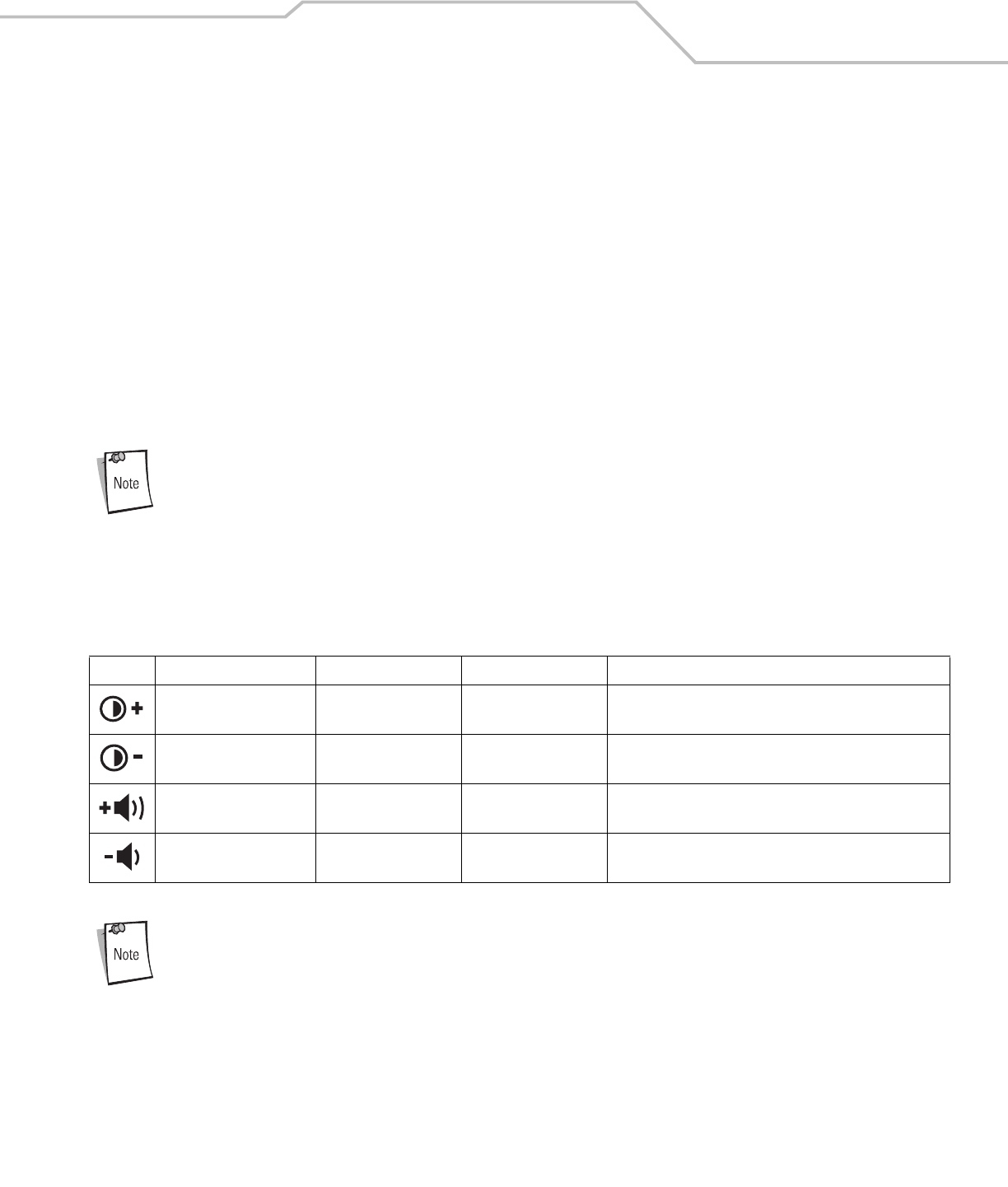
Operating the MC3000 2-3
Introduction
This chapter provides basic instructions for using the mobile computer and navigating the mobile computer software.
Power Button
Press the red Power button to toggle the mobile computer between suspend and resume. When the screen is off the mobile computer
is in suspend mode and when the screen is on the mobile computer is on.
Keypads
The mobile computer is available with the following keypad configurations:
• 28-key keypad
• 38-key keypad
• 48-key keypad.
For information about using the soft keyboard input panel. For more information, see Entering Information Using the
Keyboard Input Panel on page 2-16.
Keypad Special Functions
The keypad special functions are color coded on the keypads. For example, on the 38-key keypad, the display contrast icon is blue
indicating that the blue function key must be selected first along with the F6 key, to increase the display contrast.
Mobile computers with color screens do not have contrast settings.
Table 2-1. Keypad Special Functions
Icon 28-Key Keystrokes 38-Key Keystrokes 48-Key Keystrokes Special Function
Blue function key and
period.
Blue function key and F6 Blue function key and NIncreases display contrast setting, darkens the display (on
monochrome units only).
Blue function key and BKSP. Blue function key and F9 Blue function key and SDecreases display contrast setting, lightens the display (on
monochrome units only).
Blue function key and the up
arrow.
Blue function key and F7 Blue function key and RIncreases scan decode beeper volume.
Blue function key and down
arrow.
Blue function key and F10 Blue function key and WDecreases scan decode beeper volume.
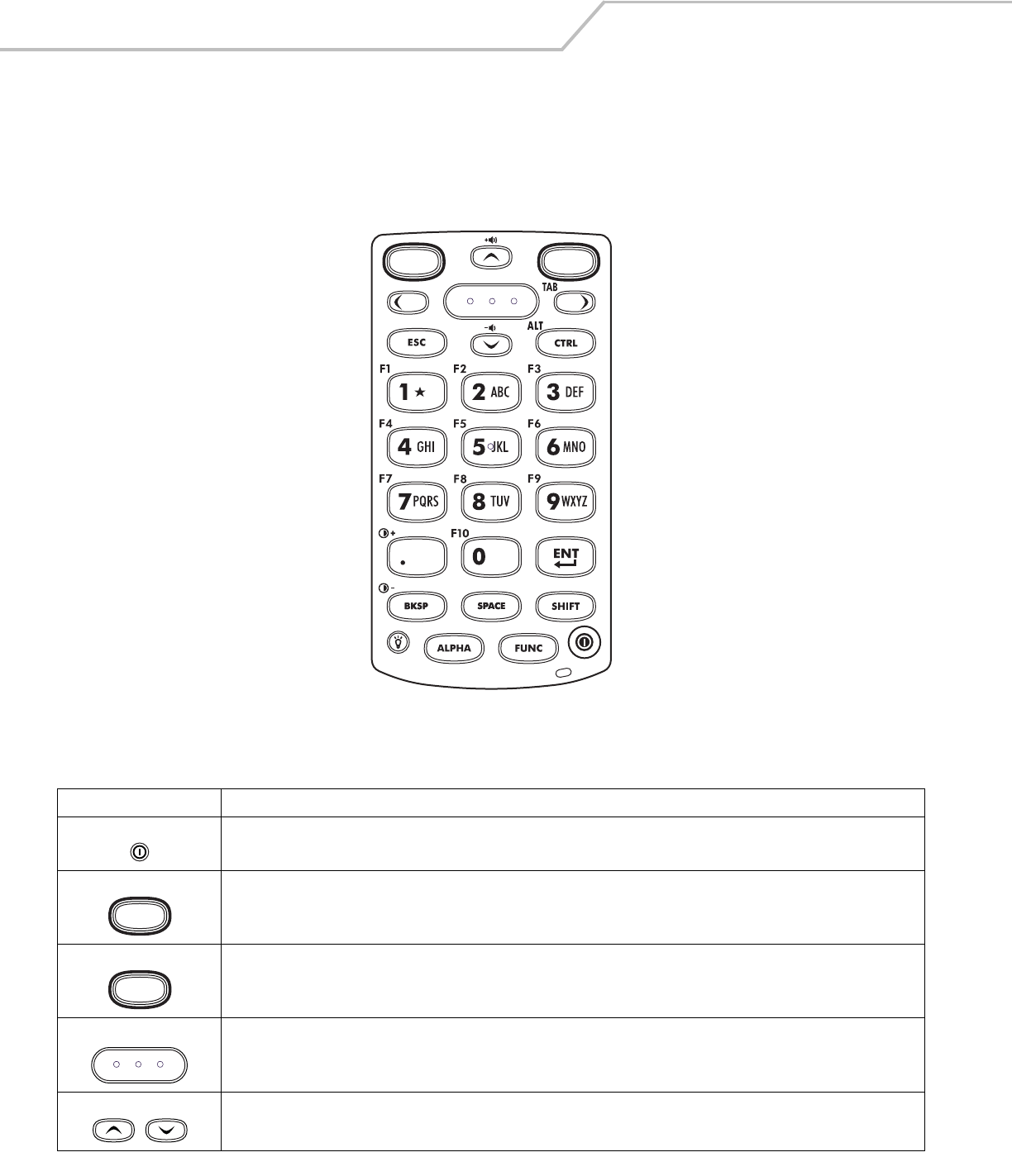
MC3000 User Guide2-4
28-Key Keypad
The 28-key keypad contains a Power button, application keys, scroll keys and function keys. The keypad is color-coded to indicate
the alternate function key (blue) values and the alternate ALPHA key (orange) values. Note that keypad functions can be changed by
an application so the mobile computer keypad may not function as described. See Table 2-2 on page 2-4 for key and button
descriptions and Table 2-1 on page 2-3 for the keypad special functions.
Figure 2-1. 28-Key Keypad
Table 2-2. 28-Key Descriptions
Key Description
Power (red) Powers the mobile computer screen on and off (resume and suspend).
Green Circle Programmable application function key by default.
Red Circle Programmable application function key by default.
Scan (yellow) Used in scanning applications, press to scan a bar code. This key has the same function as activating the side mounted scan
buttons.
Scroll Up and Down Moves up and down from one item to another. Increases/decreases specified values.
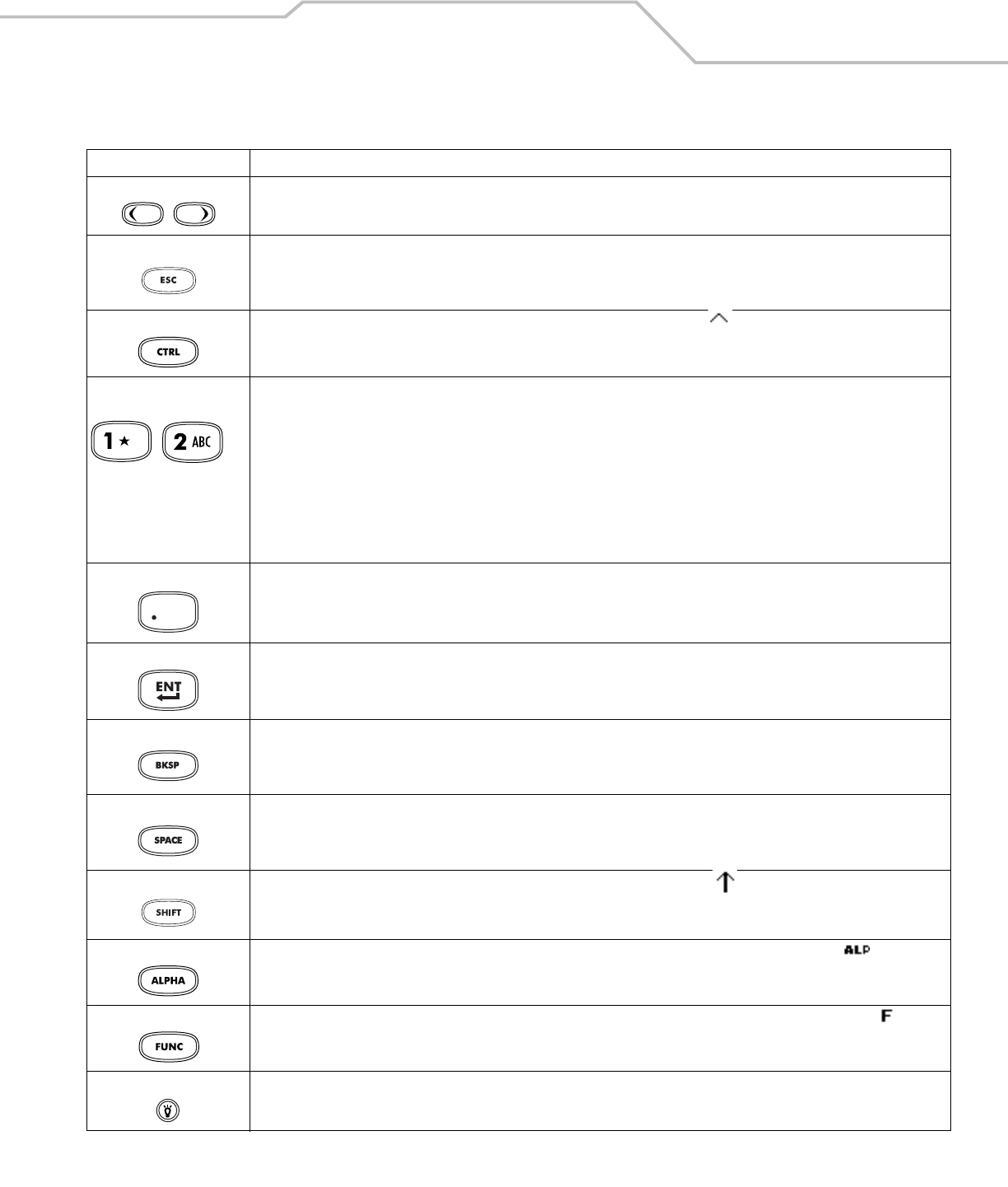
Operating the MC3000 2-5
Scroll Left and Right Moves left and right from one item to another. Increases/decreases specified values.
Produces a TAB when the blue FUNC key is activated and the right arrow key is pressed.
ESC Produces the ESC function by default.
CTRL Press and release the CTRL key to activate the keypad alternate CTRL functions. The icon appears on the taskbar. Press and
release the CTRL key again to return to the default keypad functions.
Numeric/Alpha/Special
Function
Numeric, alpha or special function keys. Numeric by default.
Produces a special function when the blue FUNC key is activated.
Produces alpha values when the orange ALPHA key is activated.
In Alpha state, produces the lower case alphabetic characters on the key. Each key press produces the next alphabetic character
in sequence. For example, press and release the ALPHA key and then press the 4 key once to produce the letter ‘g’; press and
release the ALPHA key and then press the 4 key three times to produce the letter ‘i’.
When the SHIFT key is pressed in Alpha state, the upper case alphabetic characters on the key are produced. For example,
press and release the ALPHA key, press and hold the SHIFT key and then press the 4 key once to produce the letter ‘G’; press
and release the ALPHA key, press and hold the SHIFT key and then press the 4 key three times to produce the letter ‘I’.
Period/Decimal Point Produces a period for alpha entries and a decimal point for numeric entries by default.
Produces the F10 function when the blue FUNC key is activated.
Enter Executes a selected item or function.
BKSP BKSP, backspace function by default.
SPACE SPACE, space function by default.
Shift Press and release the SHIFT key to activate the keypad alternate SHIFT functions. The icon appears on the taskbar. Press and
release the SHIFT key again to return to the default keypad functions.
ALPHA (orange) Press the orange ALPHA key to access the alternate ALPHA characters (shown on the keypad in orange). The icon appears
on the taskbar. Press and release the orange ALPHA key again to return to the default keypad functions.
FUNC (blue) Press and release the blue FUNC key to activate the keypad alternate functions (shown on the keypad in blue). The icon
appears on the taskbar. Press and release the blue FUNC key again to return to the default keypad functions.
Display backlight Toggles the display backlight on and off.
Table 2-2. 28-Key Descriptions (Continued)
Key Description
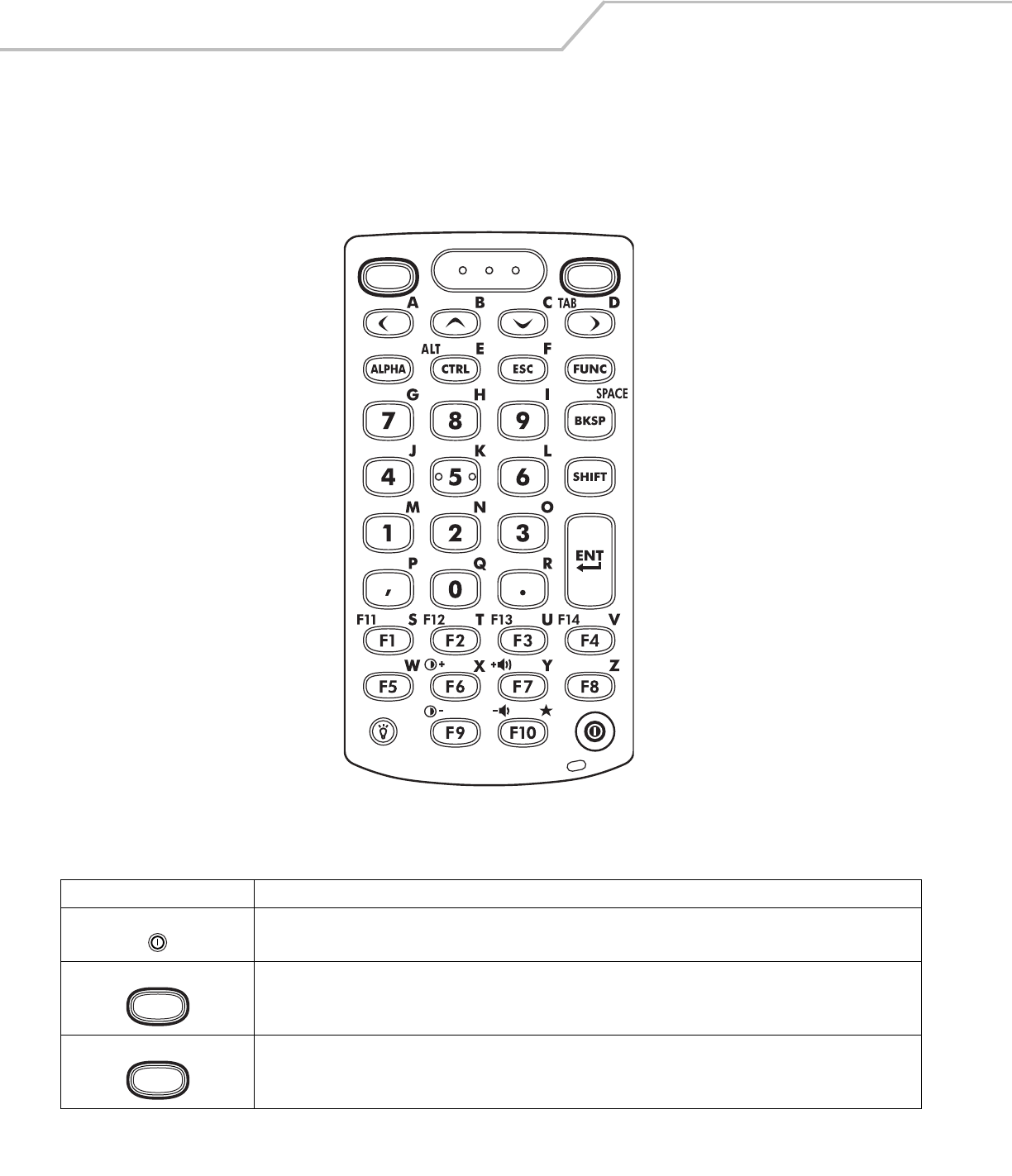
MC3000 User Guide2-6
38-Key Keypad
The 38-key keypad contains a Power button, application keys, scroll keys and function keys. The keypad is color-coded to indicate
the alternate function key (blue) values. Note that keypad functions can be changed by an application so the mobile computer keypad
may not function as described. See Table 2-3 on page 2-6 for key and button descriptions and Table 2-1 on page 2-3 for the keypad
special functions.
Figure 2-2. 38-Key Keypad
Table 2-3. 38-Key Descriptions
Key Description
Power (red) Powers the mobile computer screen on and off (resume and suspend).
Green Circle Programmable application function key by default.
Red Circle Programmable application function key.
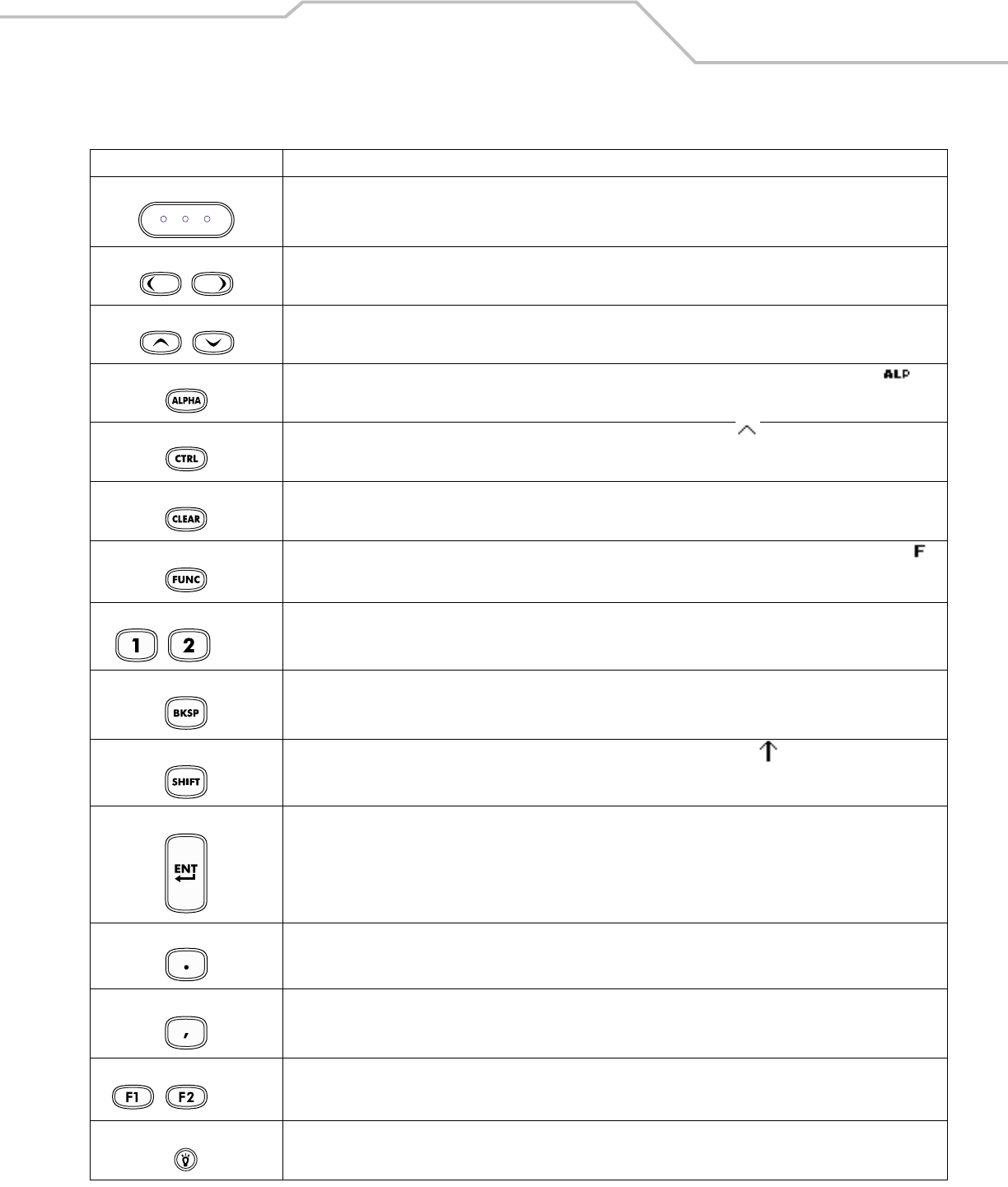
Operating the MC3000 2-7
Scan (yellow) Used in scanning applications, press to scan a bar code.
Scroll Left and Right Moves left and right from one item to another by default.
Produces a TAB when the blue FUNC key is activated and the right arrow key is pressed.
Scroll Up and Down Moves up and down from one item to another by default.
ALPHA (orange) Press the orange ALPHA key to access the alternate ALPHA characters (shown on the keypad in orange). The icon
appears on the taskbar. Press and release the orange ALPHA key again to return to the default keypad functions.
CTRL Press and release the CTRL key to activate the keypad alternate CTRL functions. The icon appears on the taskbar. Press
and release the CTRL key again to return to the default keypad functions.
CLEAR Clears inputs.
FUNC (blue) Press and release the blue FUNC key to activate the keypad alternate functions (shown on the keypad in blue). The
icon appears on the taskbar. Press and release the blue FUNC key again to return to the default keypad functions.
Numeric/Alpha/Special Function Press for the default numeric value.
Produces alpha values when the orange ALPHA key is activated.
BKSP/SPACE BKSP, backspace function by default.
Produces the SPACE function when the orange ALPHA key is activated.
SHIFT Press and release the SHIFT key to activate the keypad alternate SHIFT functions. The icon appears on the taskbar.
Press and release the SHIFT key again to return to the default keypad functions.
Enter Executes a selected item or function.
Period/Decimal Point Produces a period for alpha entries and a decimal point for numeric entries.
Produces alpha values when the orange ALPHA key is activated.
Comma Produces a comma by default.
Produces alpha values when the orange ALPHA key is activated.
Special Function/Alpha Special function by default or when the blue FUNC key is activated.
Produces alpha values when the orange ALPHA key is activated.
Display backlight Toggles the display backlight on and off.
Table 2-3. 38-Key Descriptions (Continued)
Key Description
. . .
. . .
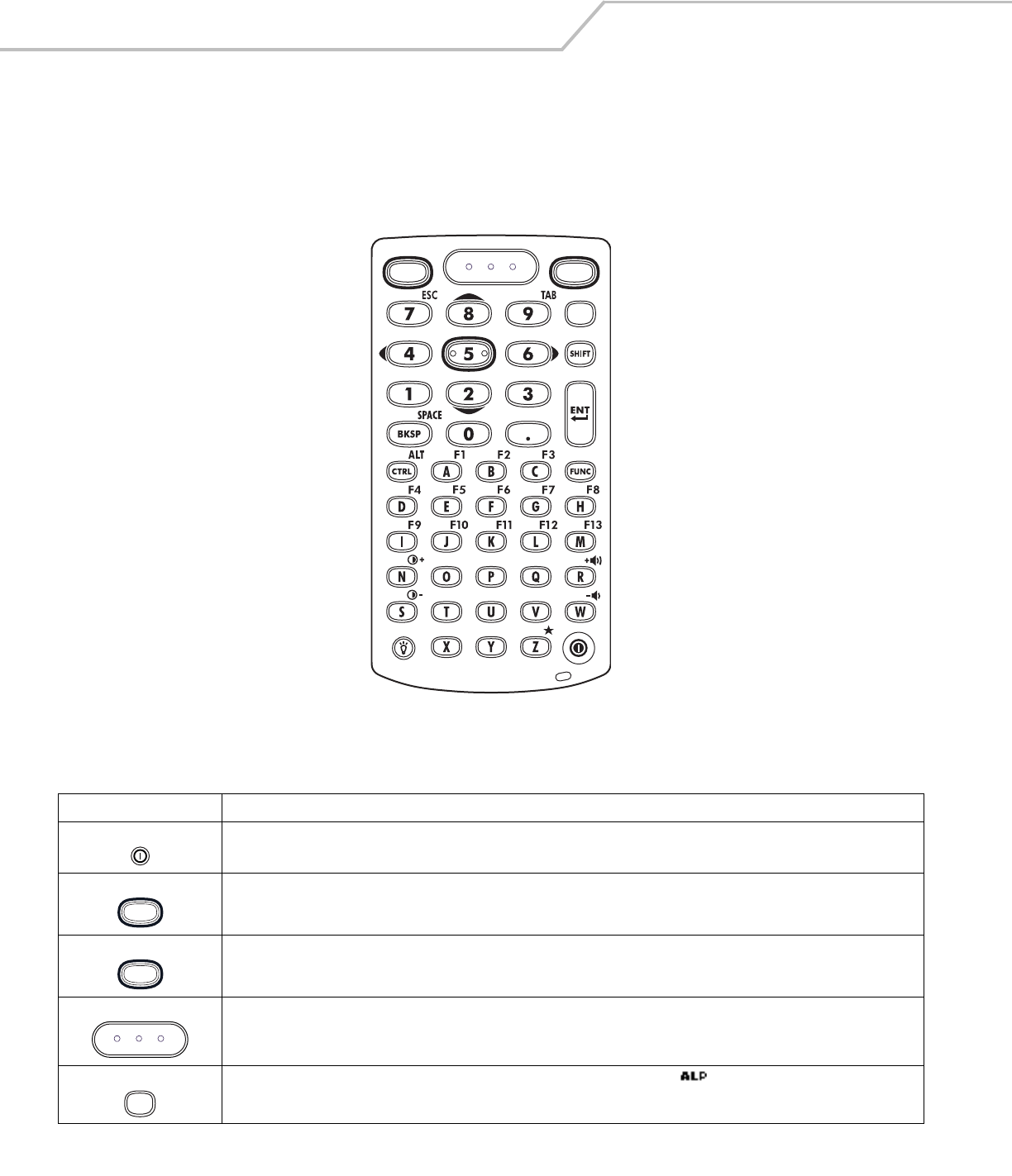
MC3000 User Guide2-8
48-Key Keypad
The 48-key keypad contains a Power button, application keys, scroll keys and function keys. The keypad is color-coded to indicate
the alternate function key (blue) values. Note, that keypad functions can be changed by an application so the mobile computer keypad
may not function as described. See Table 2-3 on page 2-6 for key and button descriptions and Table 2-1 on page 2-3 for the keypad
special functions.
Figure 2-3. 48-Key Keypad
Table 2-4. 48-Key Descriptions
Key Description
Power (red) Powers the mobile computer screen on and off (resume and suspend).
Green Circle Unassigned application function key by default.
Red Circle Unassigned application function key.
Scan (yellow) Scan key, used for scanning applications.
Orange Press the orange key to access the alternate navigation and selection functions. The icon appears on the taskbar. Press and
release the orange key again to return to the default keypad functions.
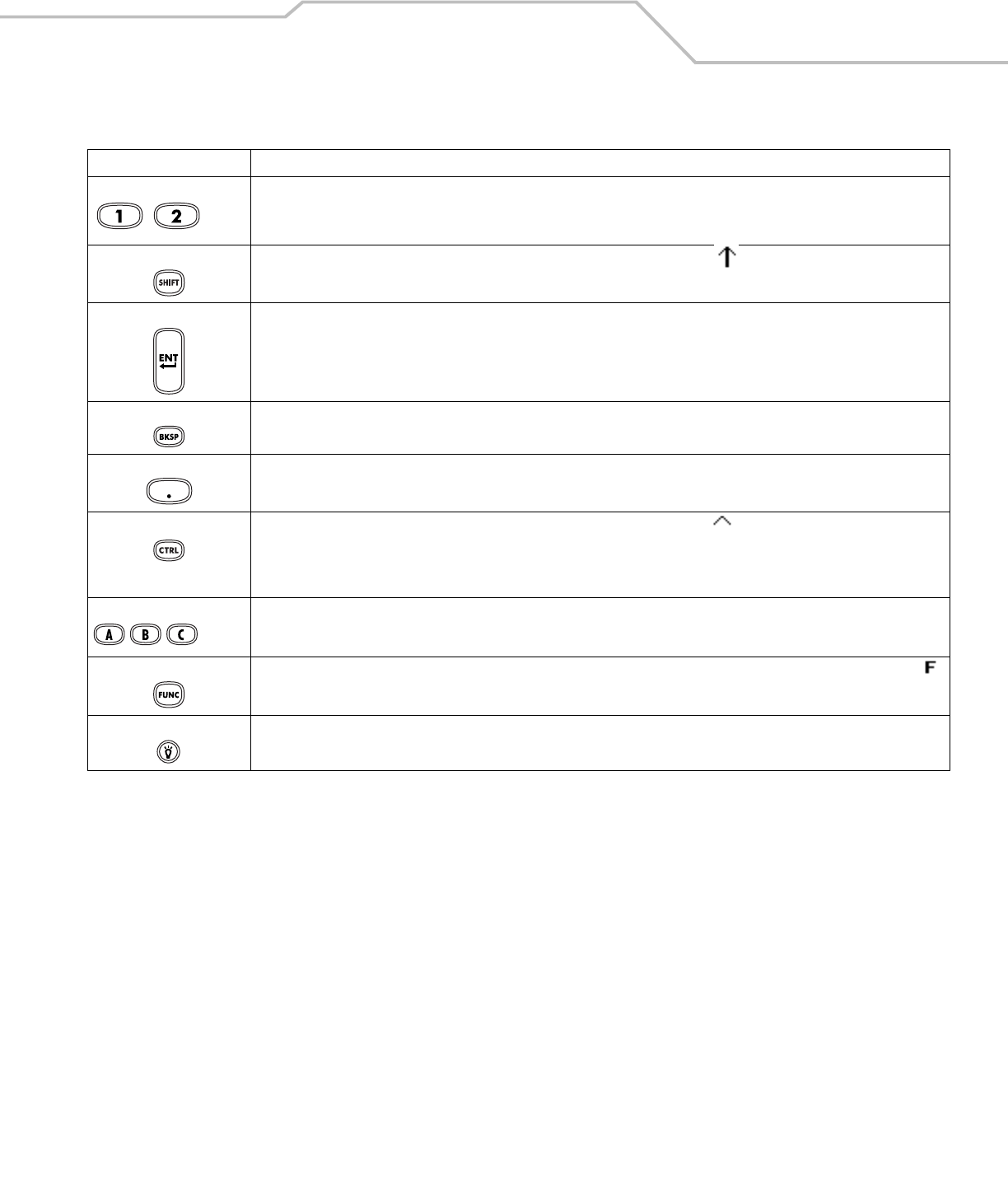
Operating the MC3000 2-9
Numeric/Scroll/Select Numeric, scroll, select keys. Numeric by default.
With the orange key activated, the 2, 4, 6, and 8 keys produce scroll functions and the 5 key produces a select function. With the
FUNC key activated, 7 produces the ESC function and 9 produces the TAB function.
Shift Press and release the SHIFT key to activate the keypad alternate SHIFT functions. The icon appears on the taskbar. Press and
release the SHIFT key again to return to the default keypad functions.
Enter Executes a selected item or function.
BKSP/SPACE BKSP, backspace function by default.
Produces the SPACE function when the blue FUNC key is activated.
Period/Decimal Point Produces a period for alpha entries and a decimal point for numeric entries.
Control Press and release the CTRL key to activate the keypad alternate CTRL functions. The icon appears on the taskbar. Press and
release the CTRL key again to return to the default keypad functions.
Press and release the blue FUNC key and then the CTRL key to activate the ALT functions. The icon appears on the taskbar.
Press and release the CTRL key two times to return to the default keypad functions.
Alpha/Special Function Alpha by default.
Special function by default when the blue FUNC key is activated.
FUNC (blue) Press and release the blue FUNC function key to activate the keypad alternate functions (shown on the keypad in blue). The
icon appears on the taskbar. Press and release the blue FUNC function key again to return to the default keypad functions.
Display Backlight Toggles the display backlight on and off.
Table 2-4. 48-Key Descriptions (Continued)
Key Description
. . .
ALT
. . .
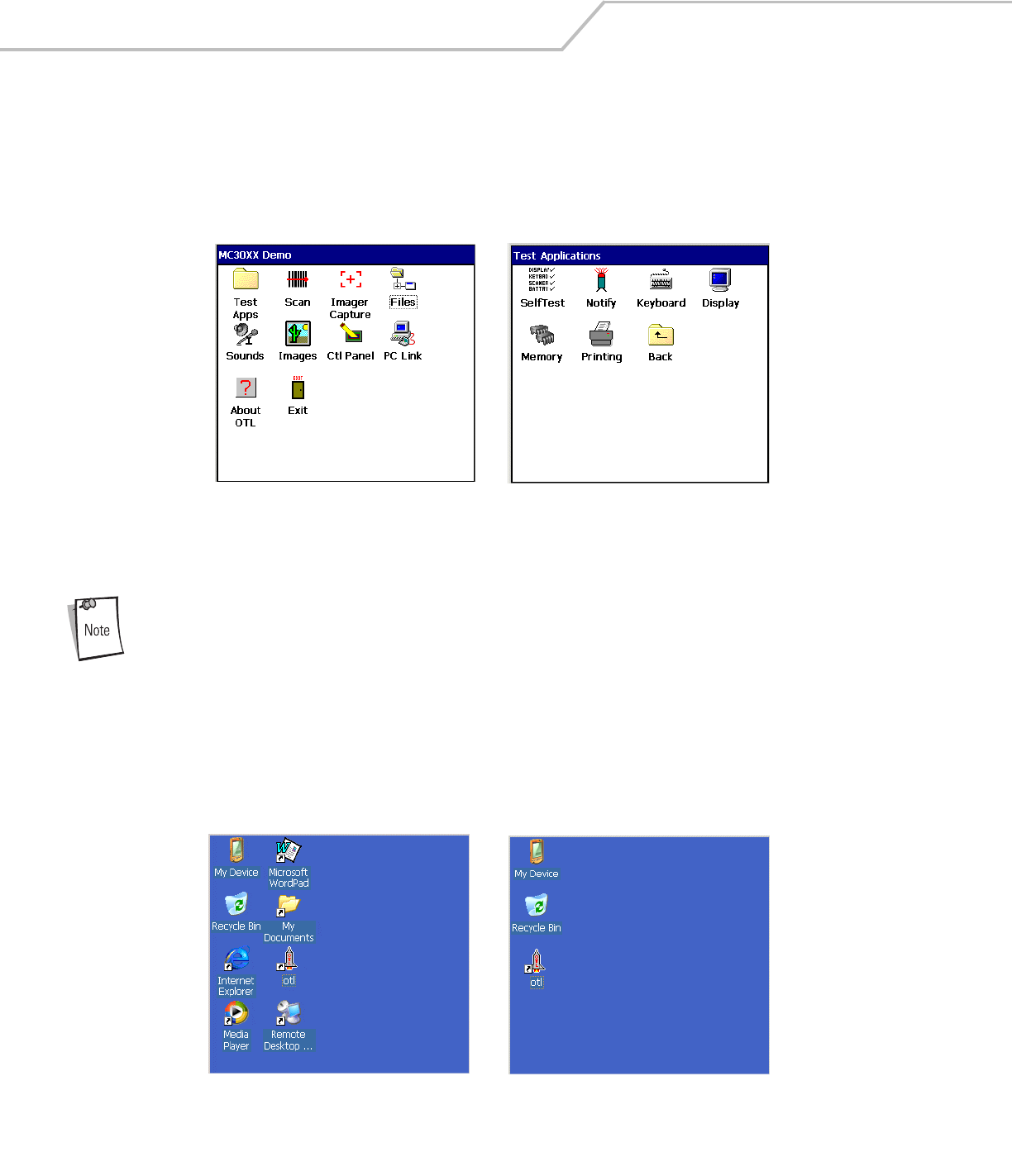
MC3000 User Guide2-10
Demo Window
On initial power up (or on a warm or cold boot) the Demo window appears. This window links to the Test Applications window and
the two windows provide the sample/demo applications. The sample/demo applications are intended to be used by application
developers as application development examples. These applications were not developed to support end users. Refer to the Symbol
Application Guide for the Demo window applications.
Figure 2-4. Demo Window
The Demo window is the factory default launcher menu. Application specific shells may vary.
Desktop Window
To access the desktop tap the Exit icon on the Demo window or tap the Desktop Display button. See Figure 2-6 on page 2-11 for
the Desktop Display button location. The desktop displays the applications available with the Windows CE .NET 5.0 Professional
and with the Windows CE .NET 5.0 Core configurations. For information on using the Microsoft® Applications refer to the
Microsoft® Applications User Guide for Symbol Devices, p/n 72E-68197-xx.
Figure 2-5. Desktop Window
Test Applications WindowDemo Window
Windows CE .NET 5.0 Core DesktopWindows CE .NET 5.0 Professional Desktop
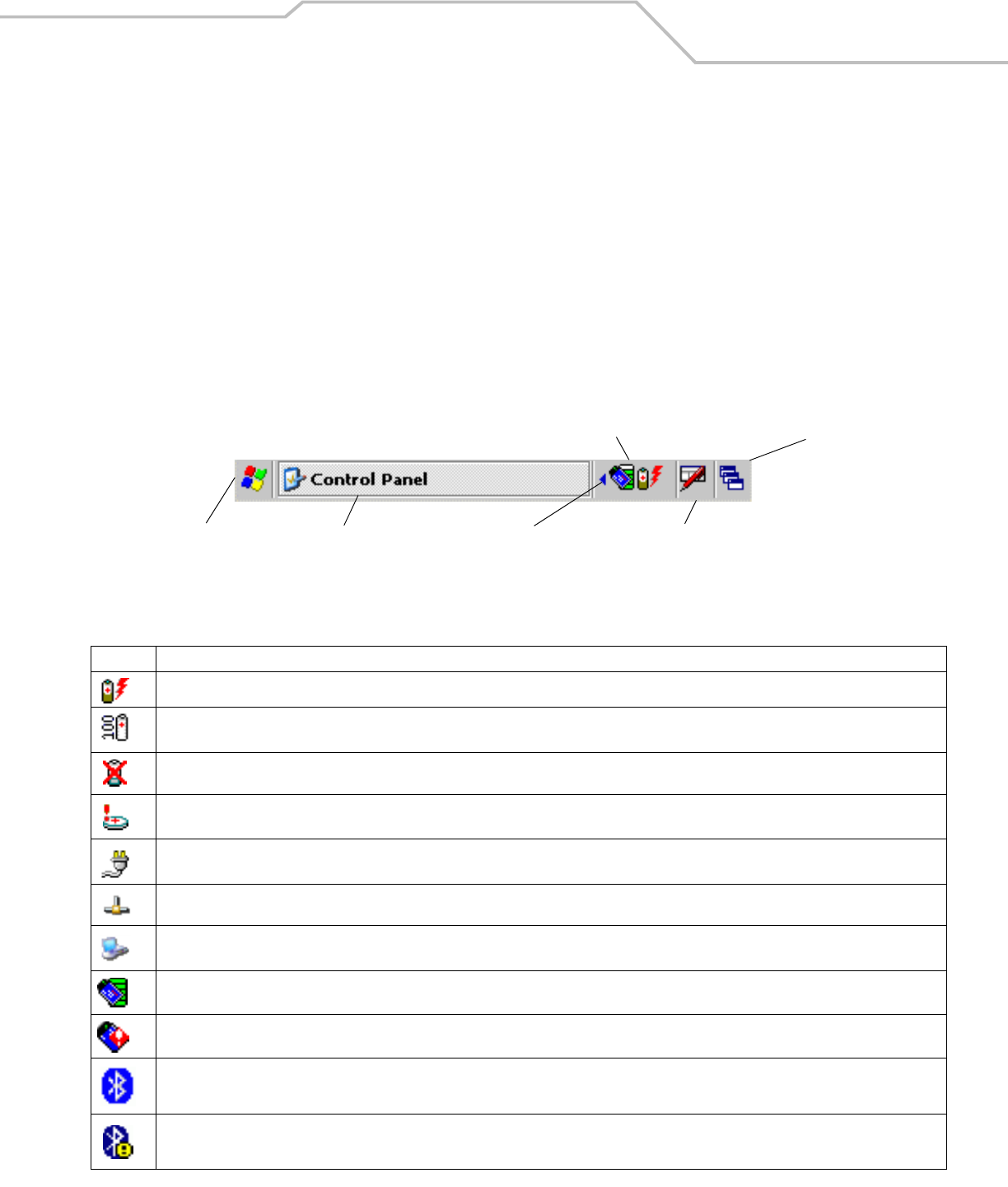
Operating the MC3000 2-11
Taskbar
The taskbar (at the bottom of the screen) displays the Start button, active programs, battery status and communication status. The
taskbar icons are described in Table 2-5. The taskbar icons display the function status, indicate what programs are active and indicate
the battery charge status. The Taskbar buttons are used to access menus, select/deselect functions or to change display windows.
• Status Icons: The status icons indicate the function key status. If the FUNC, SHIFT, CTRL, ALT or ALPHA functions are
active the appropriate status icon is displayed.
• Active Programs Icons: The active applications icons are displayed on the taskbar. If more than one program is active, icons
can be used to toggle between the open programs (applications). Tap on a taskbar application to maximize the application.
• AC Power/Battery Status Icons: The AC Power/Battery Status icons are shown in the taskbar to indicate the present power
supply status of the mobile computer. The main battery status icons provide the battery status in 10% increments from 10%
to 100%. The backup battery low icon indicates that the backup battery charge is low. See Battery Charging on page 1-9 for
backup battery charging instructions.
Figure 2-6. Taskbar
Table 2-5. Taskbar Icons
Icon Description
Indicates that the battery is charging.
Indicates that the battery is fully charged (100% charged).
The battery status icons provide the battery status in 10% increments from 10% to 100%.
Indicates that communication with the smart battery has not been established. After a mobile computer reset, this icon may be displayed for up to
30 seconds. See, Battery Unknown Icon on page 2-12 for additional information.
Indicates that the backup battery is low.
Indicates that the battery is fully charged and the mobile computer is running on external power.
Indicates IP status. Only displays when the mobile computer is in emulation mode.
Indicates that the ActiveSync application is running.
Indicates that the wireless application radio is connected to a wireless LAN network with excellent signal strength. See Table 2-10 on page 2-25
for all of the signal strength icons.
Indicates that the wireless application radio is not connected to a wireless LAN network.
The Bluetooth Enabled icon appears in the task tray and indicates that the Bluetooth radio is on.
The Bluetooth Disabled icon appears in the task tray and indicates that the Bluetooth radio is off.
Start Button
Open Programs and Status Icons
Keyboard Input Panel Button
Desktop Display Button
Window Title Scroll Status Icons
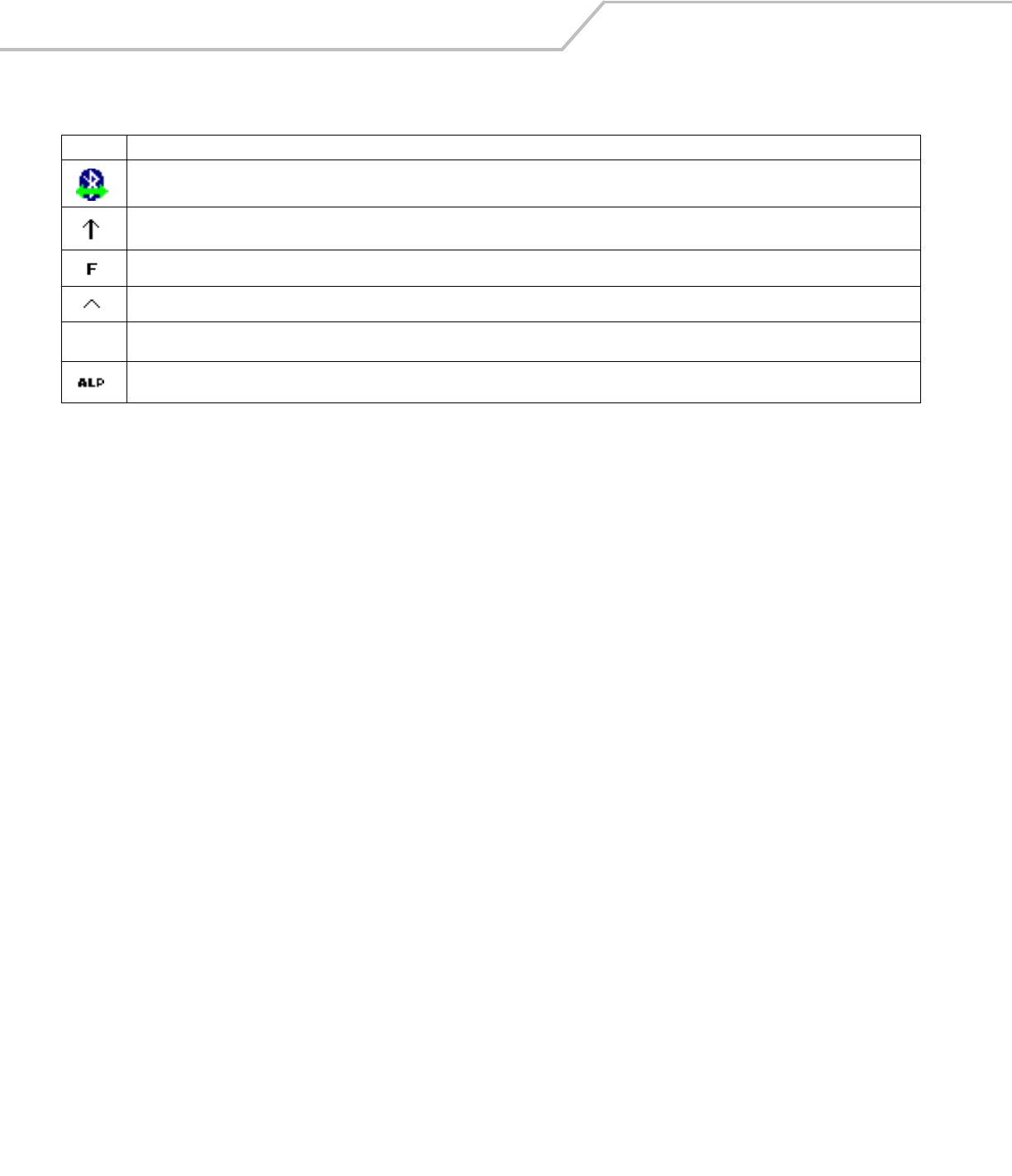
MC3000 User Guide2-12
Battery Unknown Icon
The Battery Unknown icon displays when communication with the smart battery has not been established. As part of normal operation
this icon may be displayed for 30 seconds following a mobile computer reset.
If the icon displays beyond this 30 second period:
1. Remove and re-seat the battery.
2. If after re-seating the battery, the icon remains, warm boot the mobile computer.
3. If after warm booting the mobile computer, the icon remains, then cold boot the mobile computer.
4. If after cold booting the mobile computer, the icon remains, install a new (tested and working) battery.
5. If the icon remains, return the mobile computer for servicing.
Start Button
Tap the Start button to launch the Start menu.
•Programs: Use to access available programs.
•Favorites: Displays files in Favorites directory.
•Documents: Displays files in Documents directory.
•Settings: Accesses the Control Panel, the Network and Dial-up Connections and the Taskbar and Start menu.
•Help: Accesses the Windows CE Help. Not available on mobile computers running Windows CE .NET 5.0 Core.
•Run . . . : Runs a program or application.
The Bluetooth Communication icon appears in the task tray and indicates that the mobile computer is communicating with another Bluetooth device.
Indicates that the SHIFT button function is selected.
Indicates that the FUNC button function is selected.
Indicates that the CTRL button function is selected.
Indicates that the ALT character selection is selected.
Indicates that the mobile computer is in ALPHA button mode is selected.
Table 2-5. Taskbar Icons (Continued)
Icon Description
ALT
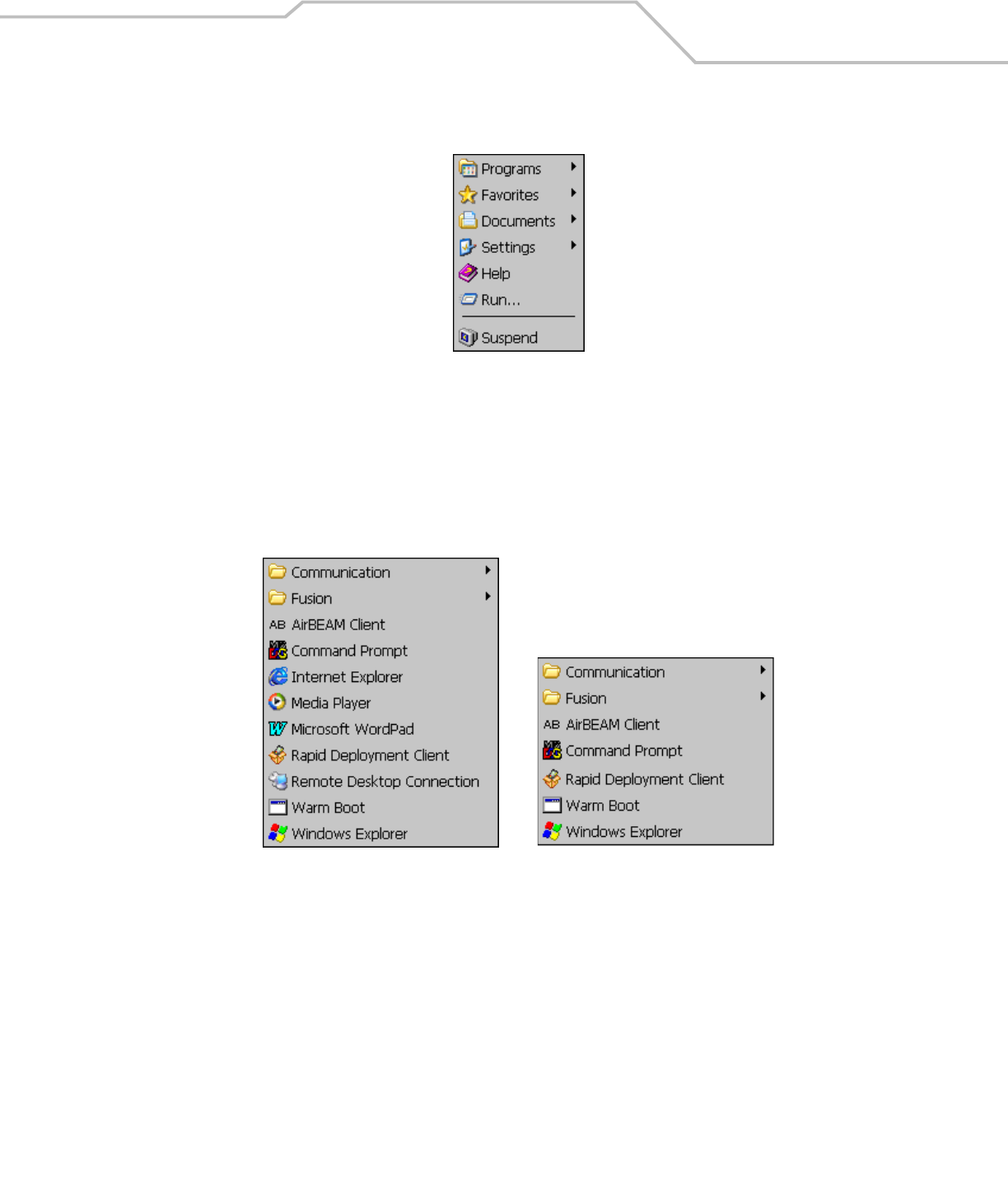
Operating the MC3000 2-13
•Suspend: Places the mobile computer in the suspend state.
Figure 2-7. Start Menu
Programs Menu
From the Start menu, tap Programs to launch the Programs menu. The programs provided with Windows CE .NET 5.0 Professional and
Windows CE .NET 5.0 Core are displayed in the Programs menu. Refer to the Symbol Application Guide, p/n 72-68901-xx and the
Microsoft® Applications User Guide for Symbol Devices, p/n 72E-68197-xx for application information.
Figure 2-8. Programs Menu
Keyboard Input Panel Button
Use the Keyboard Input Panel as an alternate input device. For more information, see Entering Information Using the Keyboard Input
Panel on page 2-16.
Desktop Display Button
Use the Desktop Display button to minimize all open programs and display the desktop.
Windows CE .NET 5.0 Core desktop functions include:
•My Computer: Double-tap the icon to open My Computer.
Windows CE .NET 5.0 Professional Windows CE .NET 5.0 Core
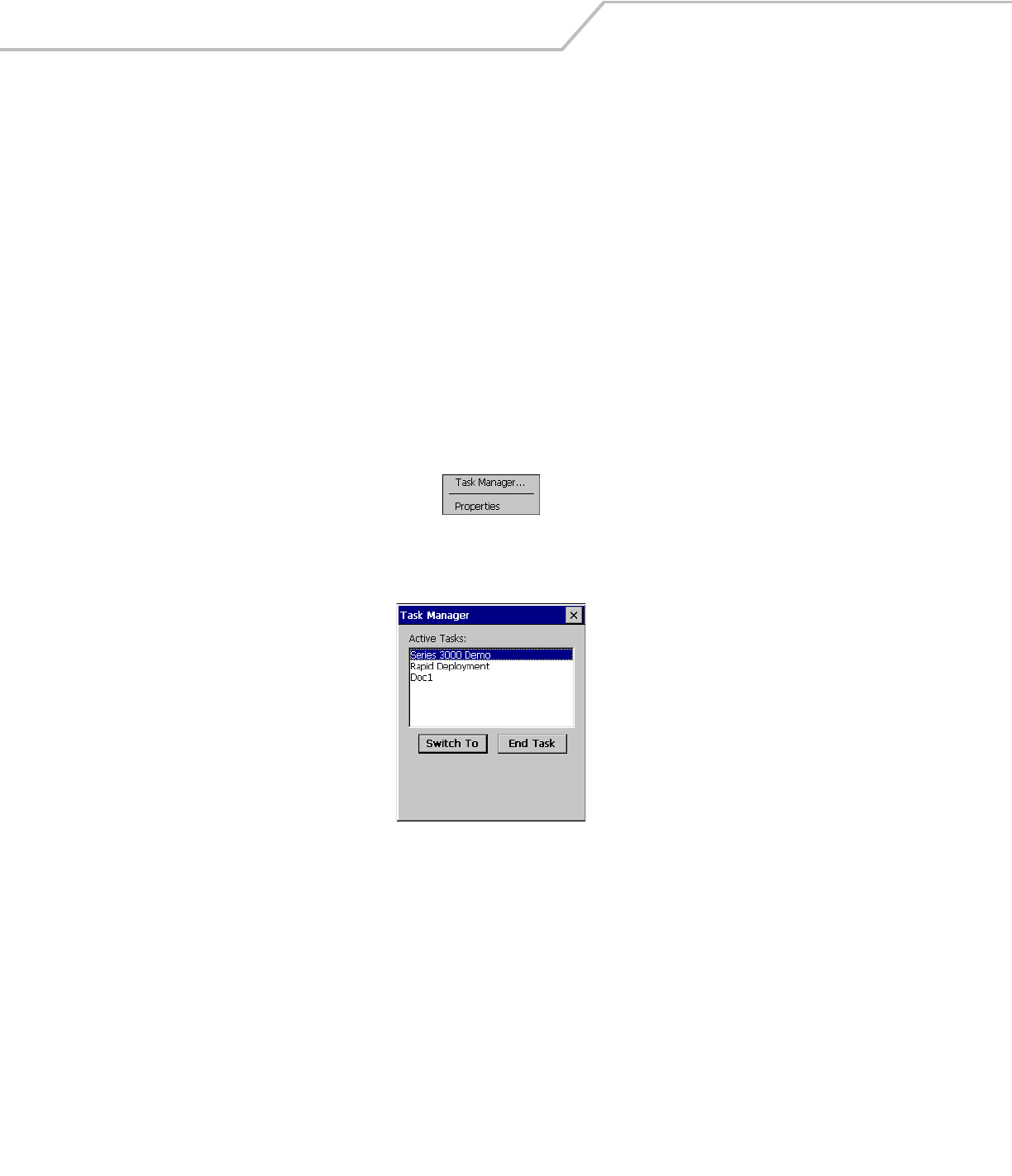
MC3000 User Guide2-14
•Recycle Bin: Deleted files remain in the recycle bin until the recycle bin is emptied. Once emptied the files cannot be
retrieved.
Windows CE .NET 5.0 Professional desktop functions include:
•My Computer: Double-tap the icon to open My Computer.
•Recycle Bin: Deleted files remain in the recycle bin until the recycle bin is emptied. Once emptied the files cannot be
retrieved.
•Remote Desktop Connection: Tap the Remote Desktop Connection icon to access the Remote Desktop Connection window.
Task Manager and Properties
Use the Task Manager to control an application’s use and use the Properties functions to set display and clock options.
Task Manager
1. Select FUNC - CTRL, (to activate the ALT state) and tap on the taskbar to display the Task Manager, Properties Selection
menu.
Figure 2-9. Task Manager, Properties Selection Menu
2. Tap Task Manager to display the Task Manager window.
Figure 2-10. Task Manager Window
3. Tap a task in the Active Tasks list and tap Switch To to make that task the primary task, or tap End Task to end the selected
task.
4. Tap X to exit the Task Manager window.
Properties
1. Select FUNC - CTRL, (to activate the ALT state) and tap on the taskbar to display the Task Manager, Properties window, see
Figure 2-9 on page 2-14.
2. Tap Properties to display the Taskbar and Start Menu, General tab.
3. This menu provides taskbar options:
• Check the Always on Top checkbox to keep the taskbar on top of all other windows.
• Check the AutoHide checkbox to make the taskbar disappear, touch the bottom of the display to make the taskbar return.
• Check the Show Clock checkbox to display the clock on the taskbar.
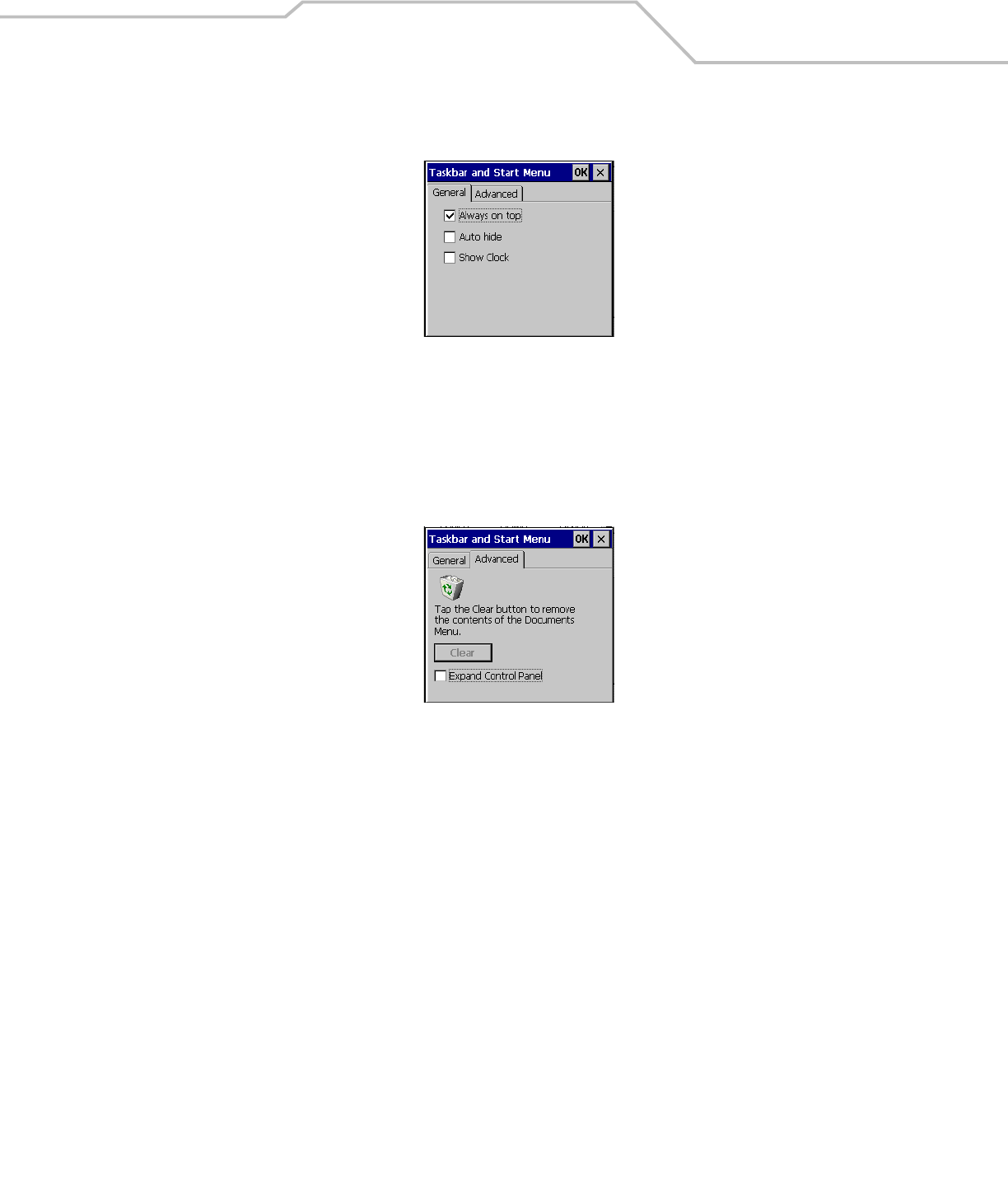
Operating the MC3000 2-15
4. Tap OK to save the settings and exit the window.
Figure 2-11. Taskbar and Start Menu, General Tab
Advanced Tab
1. Tap the Advanced tab to enter the Taskbar and Start Menu, Advanced tab.
2. Tap the Clear button to delete all of the documents listed in the Start - Documents entry, see Start Button on page 2-12.
Typically this list is empty, but if there were documents in the list the Clear button would delete them.
3. Tap the Expand Control Panel checkbox to display the entire contents of the MS control panel in list form, rather than icons.
Figure 2-12. Taskbar and Start Menu, Advanced Tab
4. Tap OK to save the settings and exit the window.
Entering Information
To enter information:
• Use the keypad.
• Use the keyboard input panel (soft keyboard) to enter text.
• Scan bar code data into data fields.
• Use Microsoft® ActiveSync® to synchronize or copy information from the host computer to the mobile computer. For more
information on ActiveSync, refer to the MC3000 Integrator Guide.
Entering Information Using Keypad
The alphanumeric keypads produce the 26-character alphabet (A-Z), numbers (0-9), function keys and assorted characters. The
keypads default characters/functions are printed black or white, the ALPHA character/functions are printed orange and the FUNC
character/functions are printed blue. See Keypads on page 2-3 for keypad configurations, see Table 2-1 on page 2-3 for keypad special
functions and see Table B-1 on page B-4 for the special character generation.
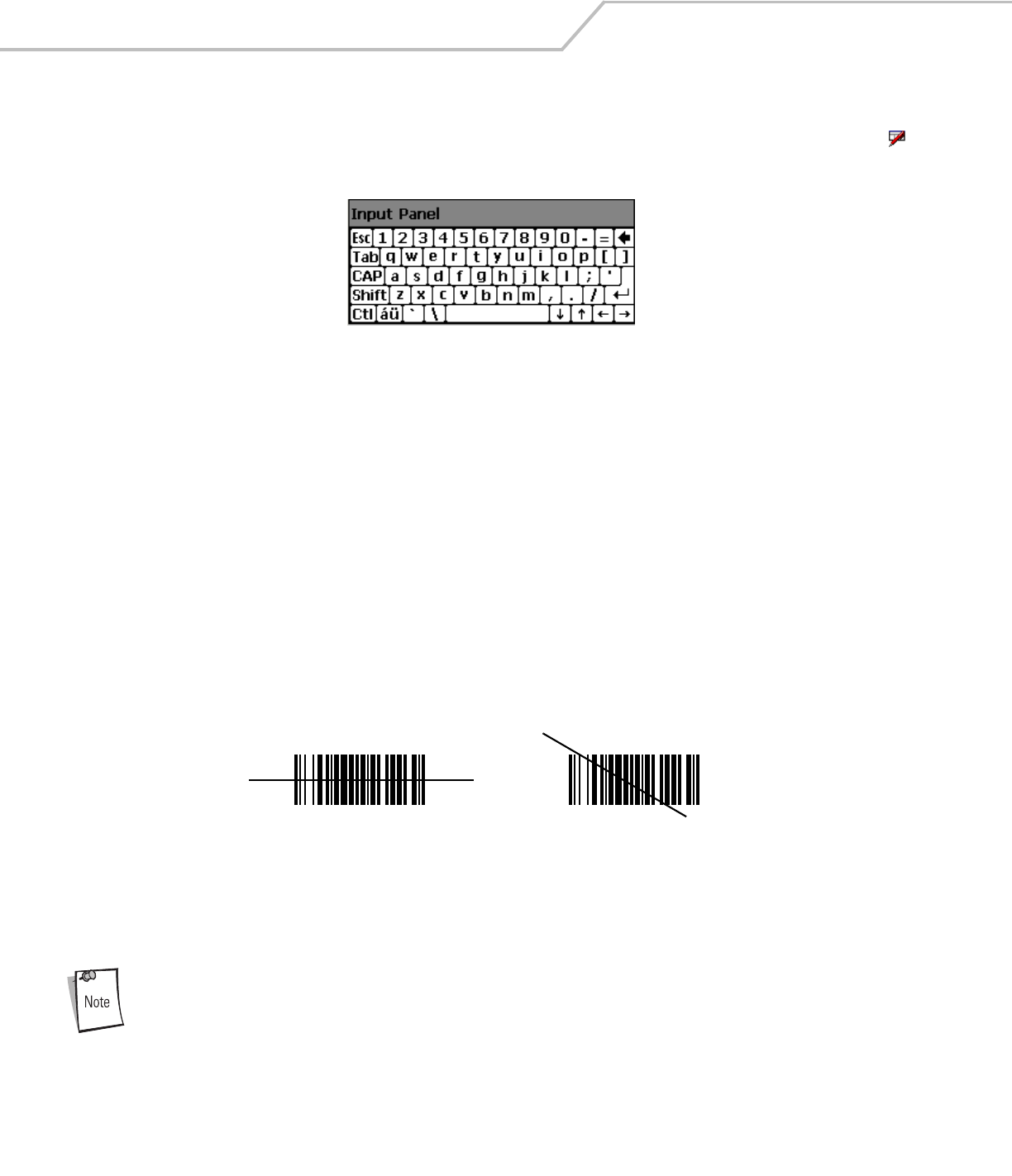
MC3000 User Guide2-16
Entering Information Using the Keyboard Input Panel
Use the keyboard input panel (soft keyboard) to enter information in any program. To launch the keyboard input panel, tap the
button on the taskbar. Tap a key to enter the value. Tap the keyboard input panel button to display or to hide the keyboard input panel.
Figure 2-13. Keyboard Input Panel
Entering Data via the Bar Code Scanner
The sample bar code scanner application scans data into data fields in the same way data is entered via the keypad.
Data Capture
The mobile computer has an integrated scanner or imager that collects data by scanning bar codes.
Laser Scanning
To scan bar codes with the mobile computer:
1. Ensure that the mobile computer is loaded with a scanning application.
2. If the mobile computer is equipped with a rotating head, adjust the head prior to scanning.
3. Aim the scan window at the bar code.
4. Press the scan button or trigger. Ensure the red scan beam covers the entire bar code. The Scan LED Indicators illuminate
red to indicate that the laser is on. The Scan LED Indicators illuminate green and a beep sounds to indicate a successful
decode.
Figure 2-14. Laser Aiming
Optimal scanning distance varies with bar code density and scanner optics.
• Hold the scanner farther away for larger symbols.
• Move the scanner closer for symbols with bars that are close together.
Scanning procedures depend on the application and mobile computer configuration. An application may use
different scanning procedures from the one listed above.
Wrong
Right
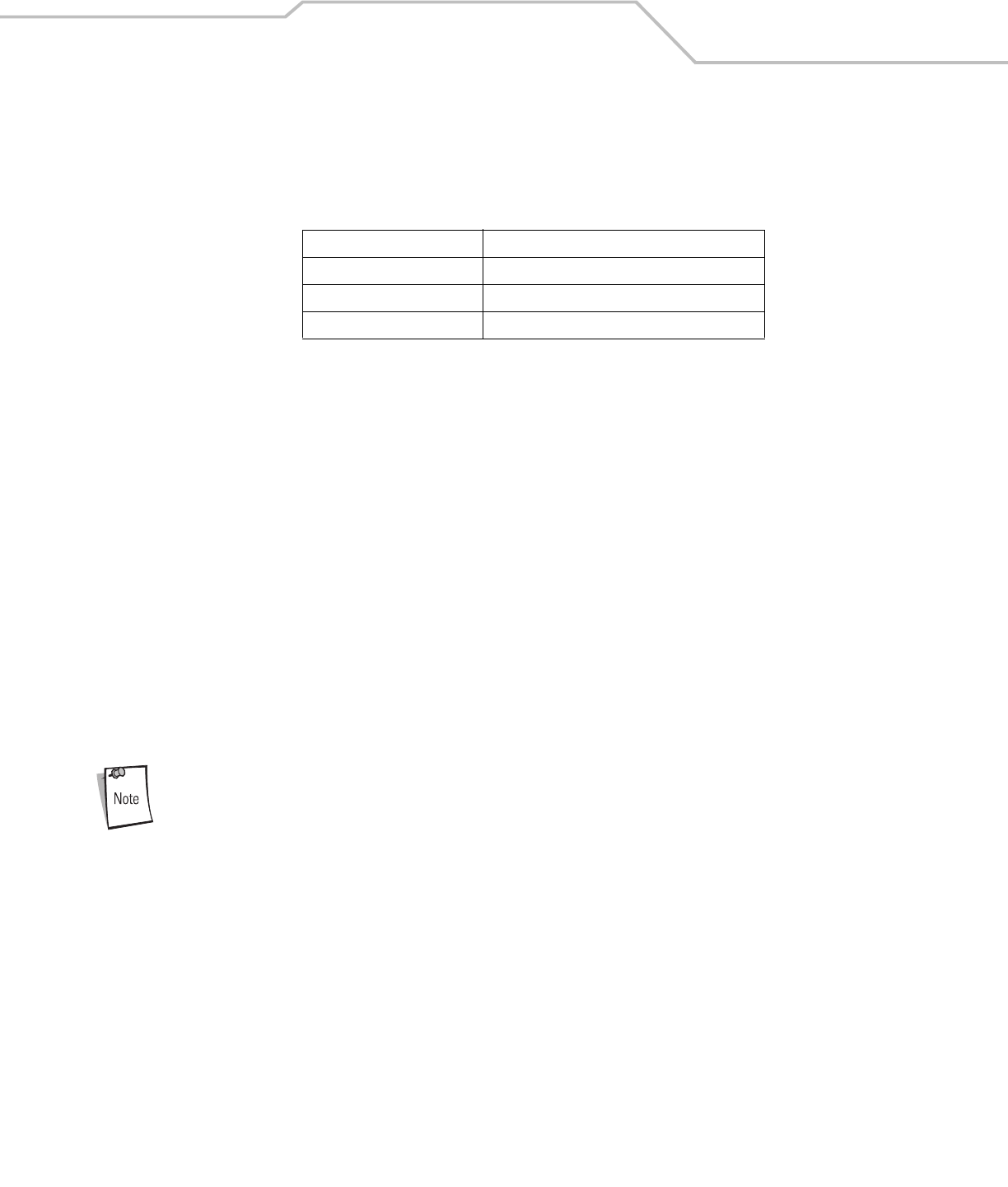
Operating the MC3000 2-17
Scan LED Indicators
The red/green Scan LED Indicators (located in the Indicator LED Bar and in the rotating turret) indicates the scan status. For the
location of the Scan LED Indicators see, Figure 1-1 on page 1-4.
Scanning Considerations
Scanning consists of; aim, scan and decode. Scanning performance can be optimized by considering the range and the scanning angle:
• Range
Any scanning device decodes well over a particular working range (minimum and maximum distances from the bar code).
This range varies according to bar code density and scanning device optics.
Scanning within range brings quick and constant decodes; scanning too close or too far away prevents decodes. Move the
scanner closer and further away to find the right working range for the bar codes being scanned. However, the situation is
complicated by the availability of various integrated scanning modules. The best way to specify the appropriate working
range per bar code density is through a chart called a decode zone for each scan module. A decode zone simply plots working
range as a function of minimum element widths of bar code symbols.
• Angle
The scan angle is important for optimizing decode performance. When laser beams reflect directly back into the scanner
from the bar code, this specular reflection can “blind” the scanner.
To avoid this, scan the bar code so that the beam does not bounce directly back. But do not scan at too sharp an angle; the
scanner needs to collect scattered reflections from the scan to make a successful decode. Practice quickly shows what
tolerances to work within.
Contact the Symbol Support Center if chronic scanning difficulties develop. Decoding of properly printed bar
codes should be quick and effortless.
Laser Decode Ranges
The decode ranges provide the decode ranges for barcodes of specified densities. Figure 2-15 shows the laser decode ranges and
Table 2-7 on page 2-18 lists the scan ranges for the selected bar code densities. The minimum element width (or “symbol density”)
Table 2-6. Scan LED Indicators
LED Status Indication
Off Not scanning.
Solid Red Laser enabled, scanning in process.
Solid Green Successful decode.
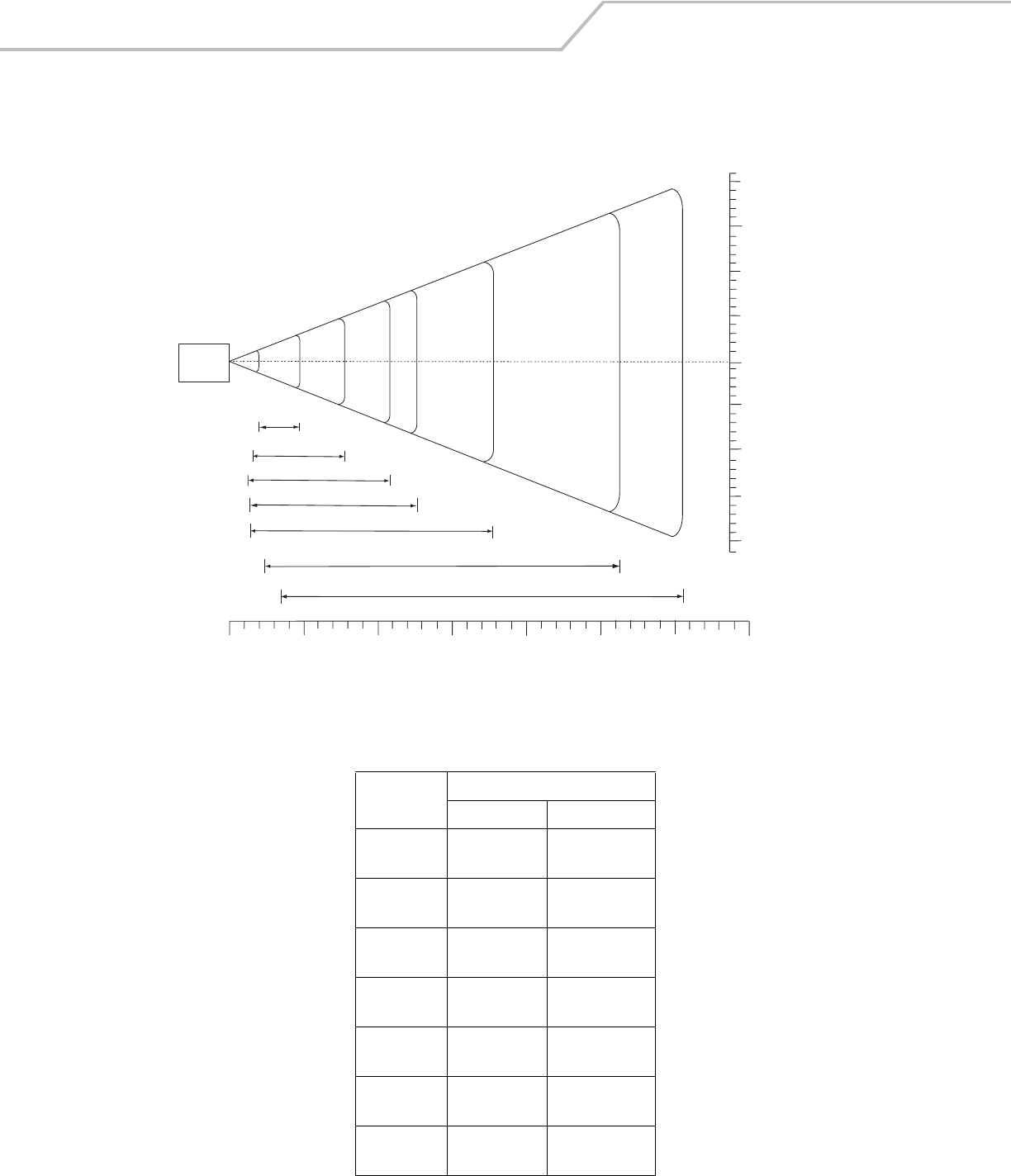
MC3000 User Guide2-18
is the width in mils of the narrowest element (bar or space) in the symbol. The maximum usable length of a symbol at any given range
is shown below.
Figure 2-15. MC3000 Laser Decode Ranges
Table 2-7. MC3000 Laser Decode Ranges
Bar Code
Density
Ranges
Near Far
5.0 mil 2.0 in
5.08 cm
4.9 in
12.45 cm
7.5 mil 1.6 in
4.06 cm
7.9 in
20.07 cm
10 mil 1.2 in
3.05 cm
10.8 in
67.95cm
UPC A 1.3 in
3.30 cm
12.7 in
32.26 cm
20 mil 1.4 in
3.56 cm
17.9 in
45.47 cm
40 mil 2.4 in
6.10 cm
26.4 in
67.06 cm
55 mil 3.4 in
8.64 cm
30.6 in
77.72 cm
in.
cm
MC3000
5 mil 4.9
7.5 mil
10 mil
7.9
10.8
12.7
17.9
26.4
20 mil
40 mil
30.6
55 mil
W
i
d
t
h
o
f
F
i
e
l
d
Depth of Field
Note: Typical performance at 73˚ F (23˚ C)
on high quality symbols.
0
05
12.7 10
25.4
15
38.1
1.3
0
3
6
9
0
7.62
15.25
22.86
7.62
15.25
3
6
12 30.48
in. cm
22.869
30.4812
1.2
1.6
2.0
20
50.8 25
63.5
30
76.2 35
88.9
UPC A
1.4
2.4
3.4

Operating the MC3000 2-19
Imaging
The imager version of the mobile computer has the following features:
• Omnidirectional reading of a variety of bar code symbologies, including the most popular linear, postal, PDF417 and 2-D
matrix code types.
• The ability to capture and download images to a host for a variety of imaging applications.
• Advanced intuitive laser aiming for easy point-and-shoot operation.
Imager
The imager uses digital camera technology to take a digital picture of a bar code, the image is stored in memory and software
decoding algorithms are executed to extract the data from the image. A typical bar code decoding process is as follows:
1. Aim the mobile computer at a bar code and press the scan button or trigger.
2. The red laser aiming pattern turns on to assist in aiming the mobile computer.
3. The mobile computer turns on the secondary white LEDs to illuminate the target bar code.
4. The mobile computer takes a digital picture (image) of the bar code and stores it in memory for decoding. A beep sounds to
indicate that the bar code was properly decoded.
5. Release the scan button.
This process usually occurs instantaneously. Steps 2 - 4 are repeated on poor or difficult bar codes as long as the scan button remains
active.
Operational Modes
The imager version of the mobile computer has two modes of operation: Decode Mode and Image Capture Mode. Refer to the Symbol
Application Guide for the Series 3000 Demo imager application.
Decode Mode
Activate the scan button, the mobile computer attempts to locate and decode enabled bar codes within its field of view. The mobile
computer remains in this mode as long as the scan button remains activated, or until the bar code is decoded.
Image Capture
The imager version of the mobile computer allows image capture. In this mode, the imager displays an image until the image is
snapped. The snapped image can then be saved.
Aiming the Mobile Computer
The imager version of the mobile computer projects a laser aiming pattern (shown below) similar to those used on cameras. The
aiming pattern is used to position the bar code or object within the field of view.
Figure 2-16. Laser Aiming Pattern
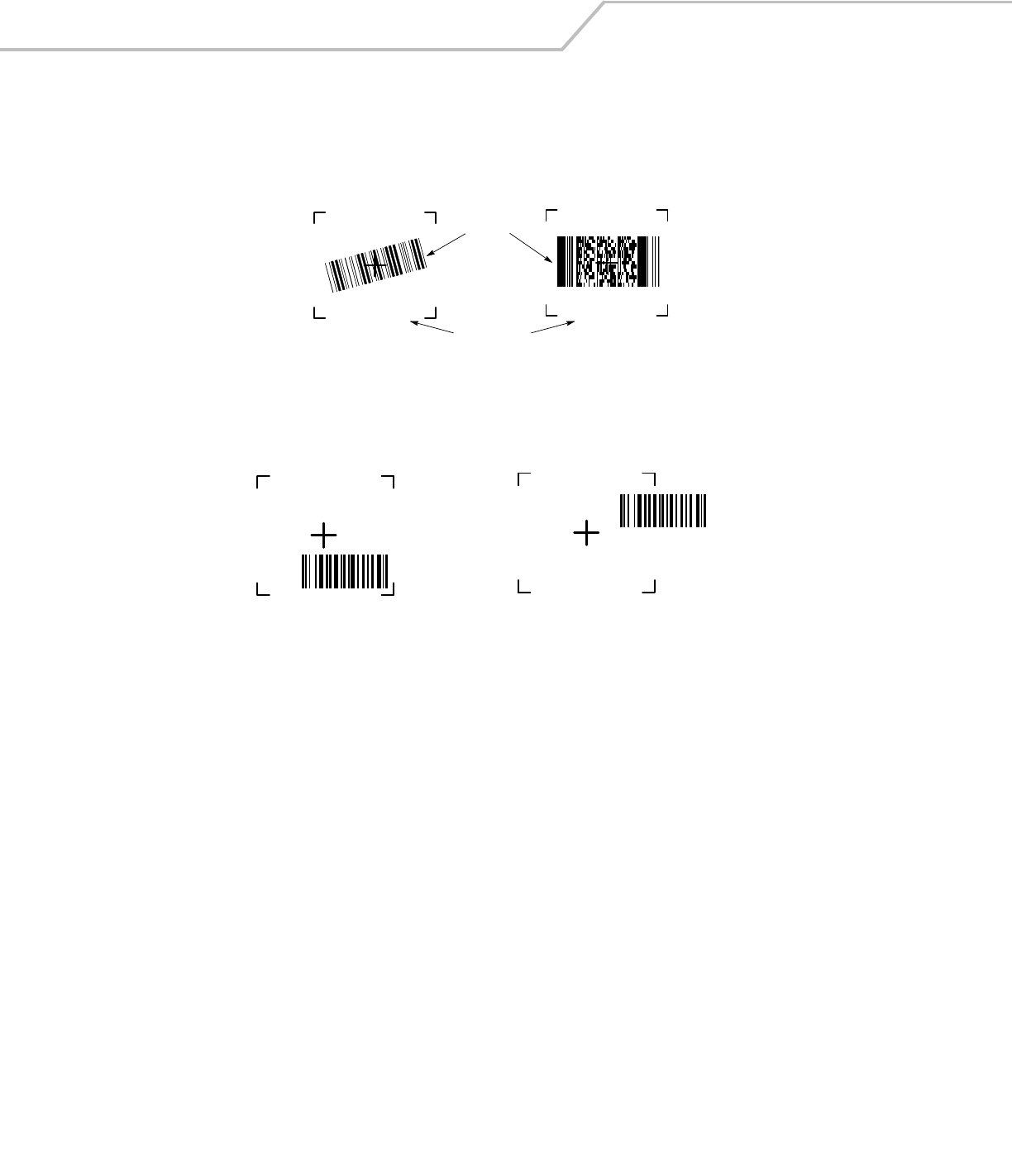
MC3000 User Guide2-20
To scan a symbol using the imager:
1. Center the symbol in any orientation within the aiming pattern. Ensure the entire symbol is within the rectangular area
formed by the brackets in the aiming pattern.
Figure 2-17. Centering Symbol in Aiming Pattern
The imager can also read a bar code presented within the aiming pattern but not centered, such as the figure below on the
left. The figure on the right, however, can not be decoded.
Figure 2-18. Imager Aiming
2. The aiming pattern is smaller when the Imager is closer to the symbol and larger when it is farther from the symbol. Scan
symbols with smaller bars or elements (mil size) closer to the unit and those with larger bars or elements (mil size) farther
from the unit.
3. Hold the mobile computer between two and nine inches (depending on symbol density) from the symbol, centering the
aiming pattern cross hairs on the symbol.
4. Press the scan button. The Scan LED Indicators illuminate red to indicate that the laser is on. The Scan LED Indicators
illuminate green and a beep sounds to indicate a successful decode.
Imager Decode Ranges
The decode ranges provide the decode distances for barcodes of specified densities. Figure 2-19 shows the imager decode ranges
and Table 2-8 on page 2-22 lists the scan ranges for the selected bar code densities. The minimum element width (or “symbol density”)
Linear bar code PDF417 symbol
Symbol
View Finder
(Aiming Pattern)
Right Wrong
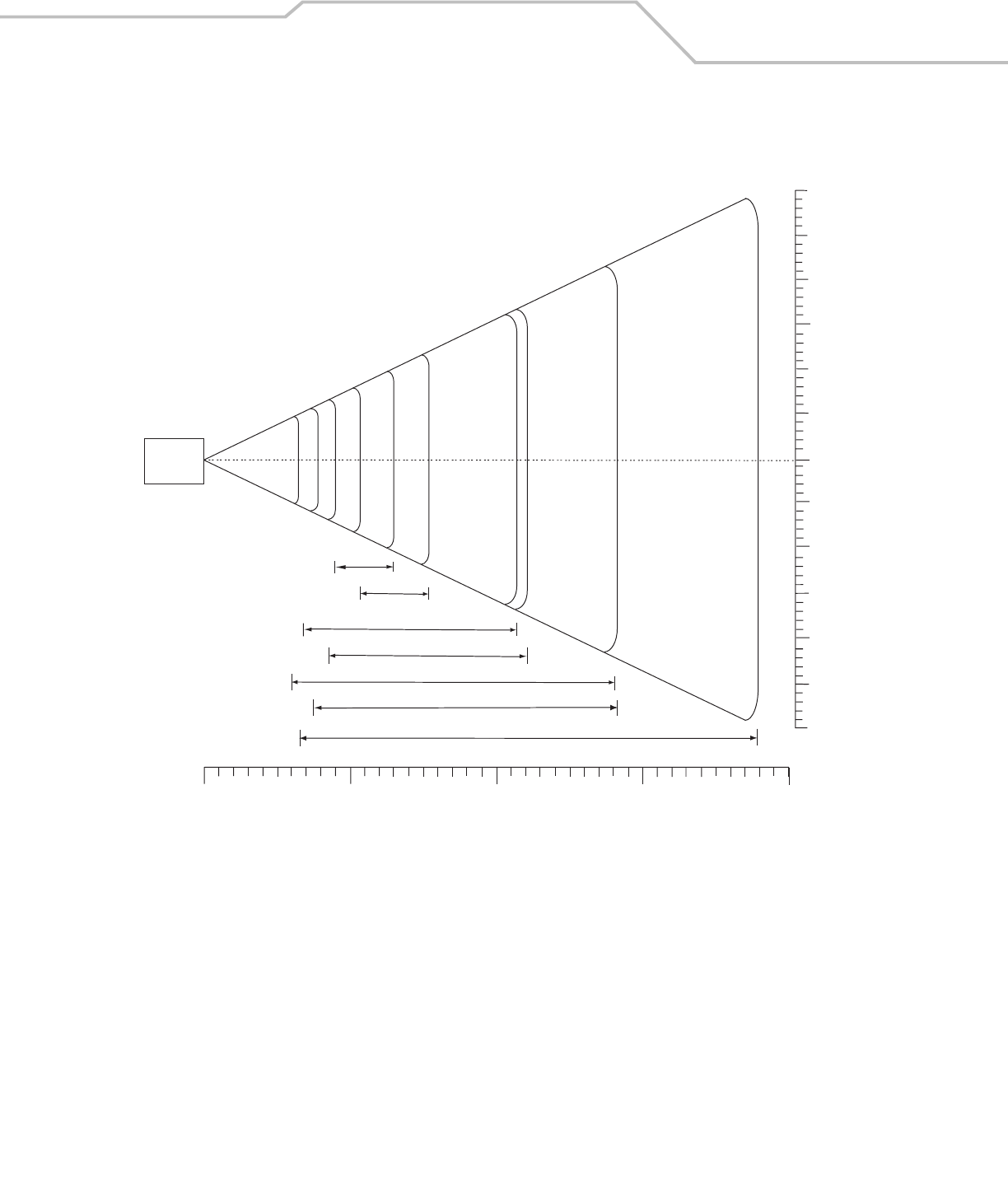
Operating the MC3000 2-21
is the width in mils of the narrowest element (bar or space) in the symbol. The maximum usable length of a symbol at any given range
is shown below.
Figure 2-19. MC3000 Imager Decode Ranges
in.
cm
MC3000
5 mil 6.5
PDF417 6.67 mil
7.5 mil
7.7
10.7
11.1
14.2
14.4
UPC A
PDF417 15 mil
18.9
20 mil
W
i
d
t
h
o
f
F
i
e
l
d
Depth of Field
Note: Typical performance at 73˚ F (23˚ C)
on high quality symbols.
0
05
12.7
4.3
0
1
2
3
0
2.54
5.08
7.62
2.54
5.08
1
2
4 10.16
in. cm
7.623
10.164
3.3
5.3
4.5
10
25.4 15
38.1
PDF417 10 mil
2.5
3.8
2.8
20
50.8
512.7
512.7
15.246
15.246
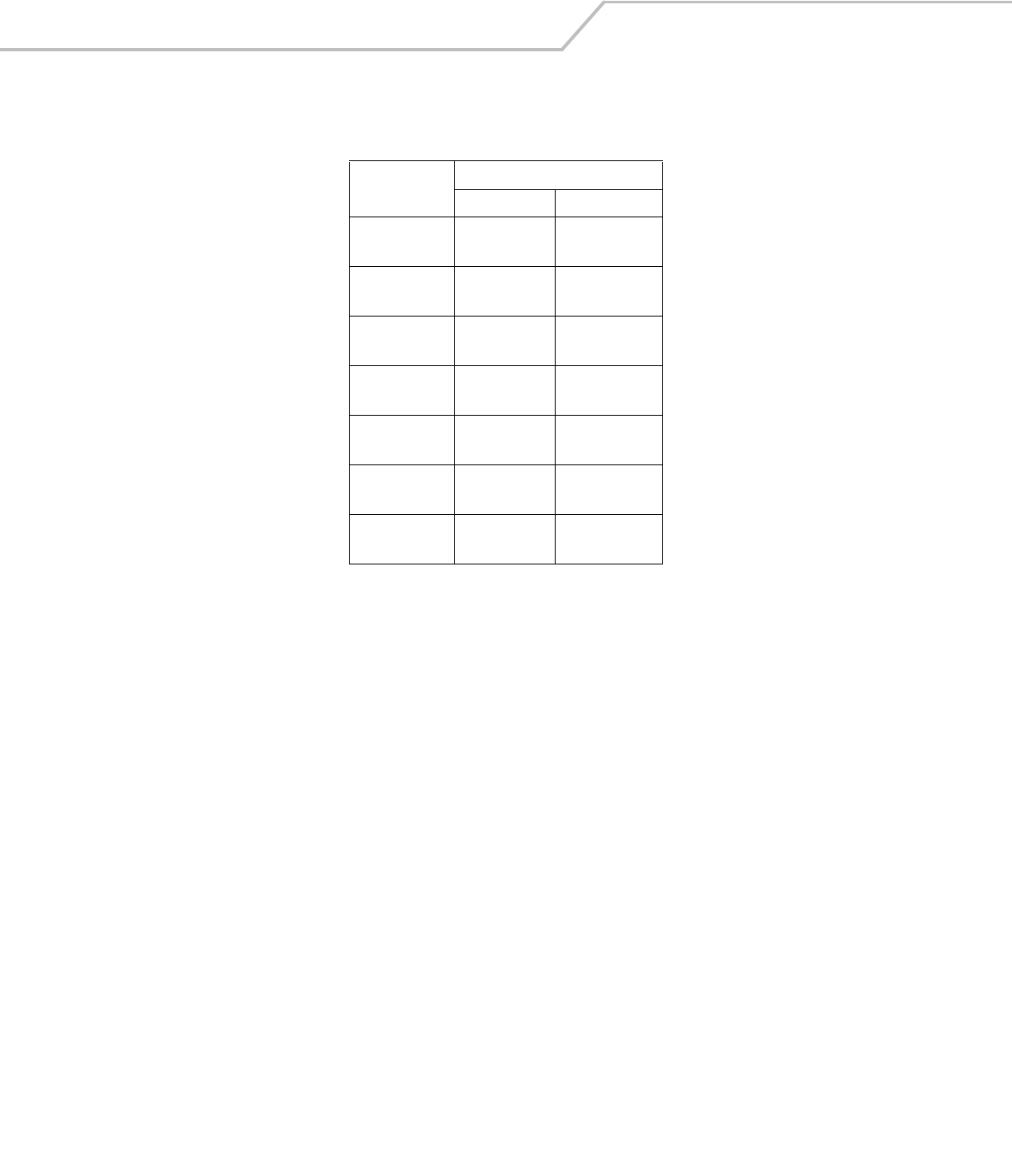
MC3000 User Guide2-22
Table 2-8. MC3000 Imager Decode Ranges
Bar Code
Density
Ranges
Near Far
5.0 mil 4.5 in
11.43 cm
6.5 in
16.51cm
7.5 mil 3.3 in
8.38 cm
10.7 in
27.18 cm
UPC A 2.5 in
6.35 cm
14.2 in
36.07cm
20 mil 2.8 in
7.11 cm
18.9 in
48.01 cm
PDF417 6.67 mil 5.3 in
13.46 cm
7.7 in
19.56 cm
PDF417 10 mil 4.3 in
10.92 cm
11.1 in
28.19 cm
PDF417 15 mil 3.8 in
9.65 cm
14.4 in
36.58 cm
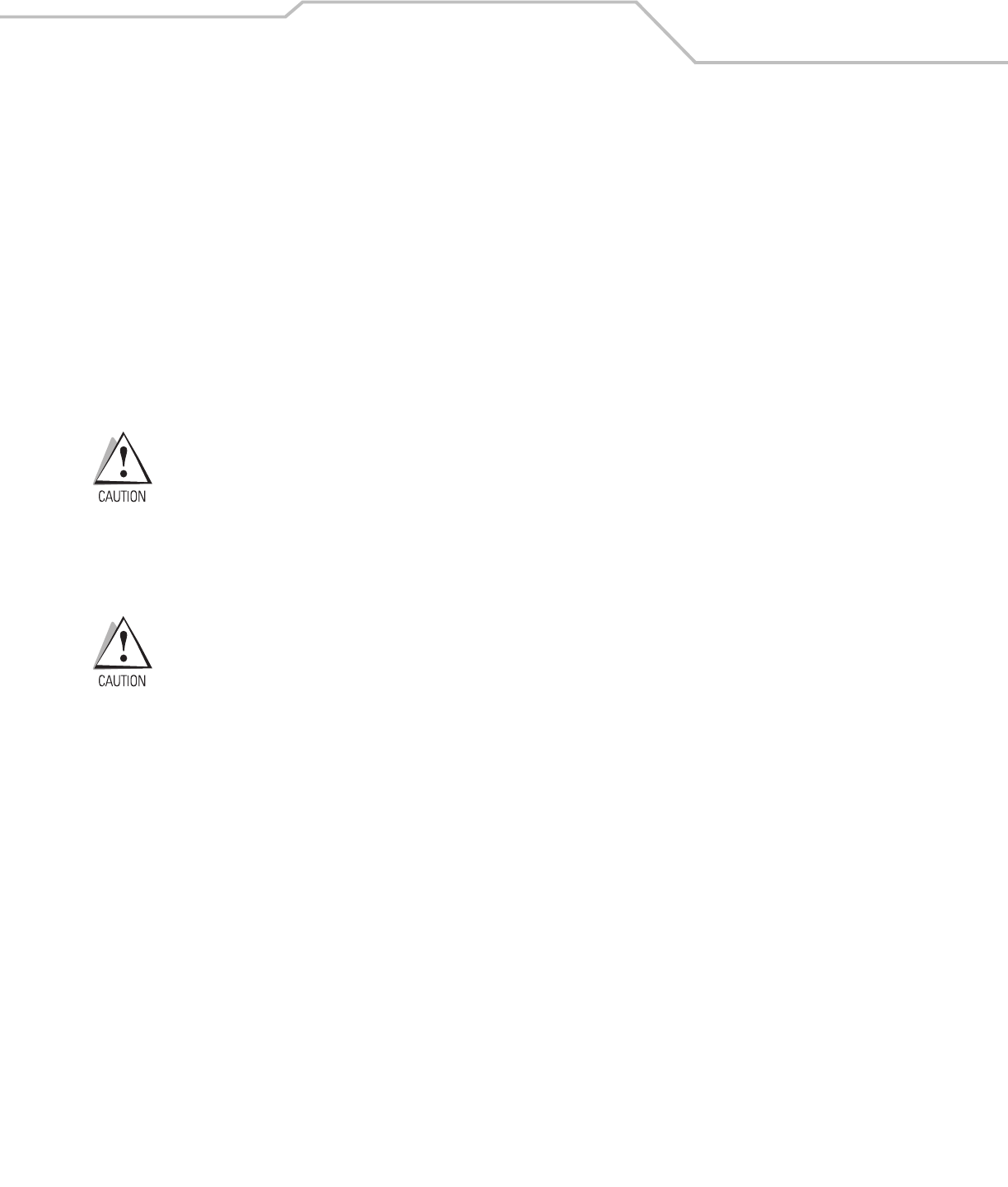
Operating the MC3000 2-23
Resetting the Mobile Computer
If the mobile computer stops responding to input, reset it. There are two reset functions, warm boot and cold boot. A warm boot
restarts the mobile computer by closing all running programs. All data that is not saved is lost.
A cold boot also restarts the mobile computer, but erases all stored records and entries from RAM. In addition it returns formats,
preferences and other settings to the factory default settings.
Perform a warm boot first. If the mobile computer still does not respond, perform a cold boot.
Performing a Warm Boot
To perform a warm boot:
1. Press and simultaneously hold 7, 9 and Power. Do not hold down any other keys or buttons.
2. As the mobile computer initializes MC3000 demo window appears.
Files that remain open during a warm boot may not be retained.
Performing a Cold Boot
A cold boot restarts the mobile computer and erases all user stored records and entries from RAM. Never perform a cold boot unless
a warm boot does not solve the problem.
Cold boot resets the mobile computer, to the default settings. All added applications and all stored data are removed. Do
not cold boot without support desk approval.
To perform a cold boot:
1. Press and simultaneously hold the 1, 9 and Power keys. Do not hold down any other keys or buttons. As the mobile computer
initializes, the Symbol splash window, Figure 1-7 on page 1-11, appears for about a minute.
2. Calibrate the touch screen. See Calibration Screen on page 1-11 to calibrate the mobile computer screen.
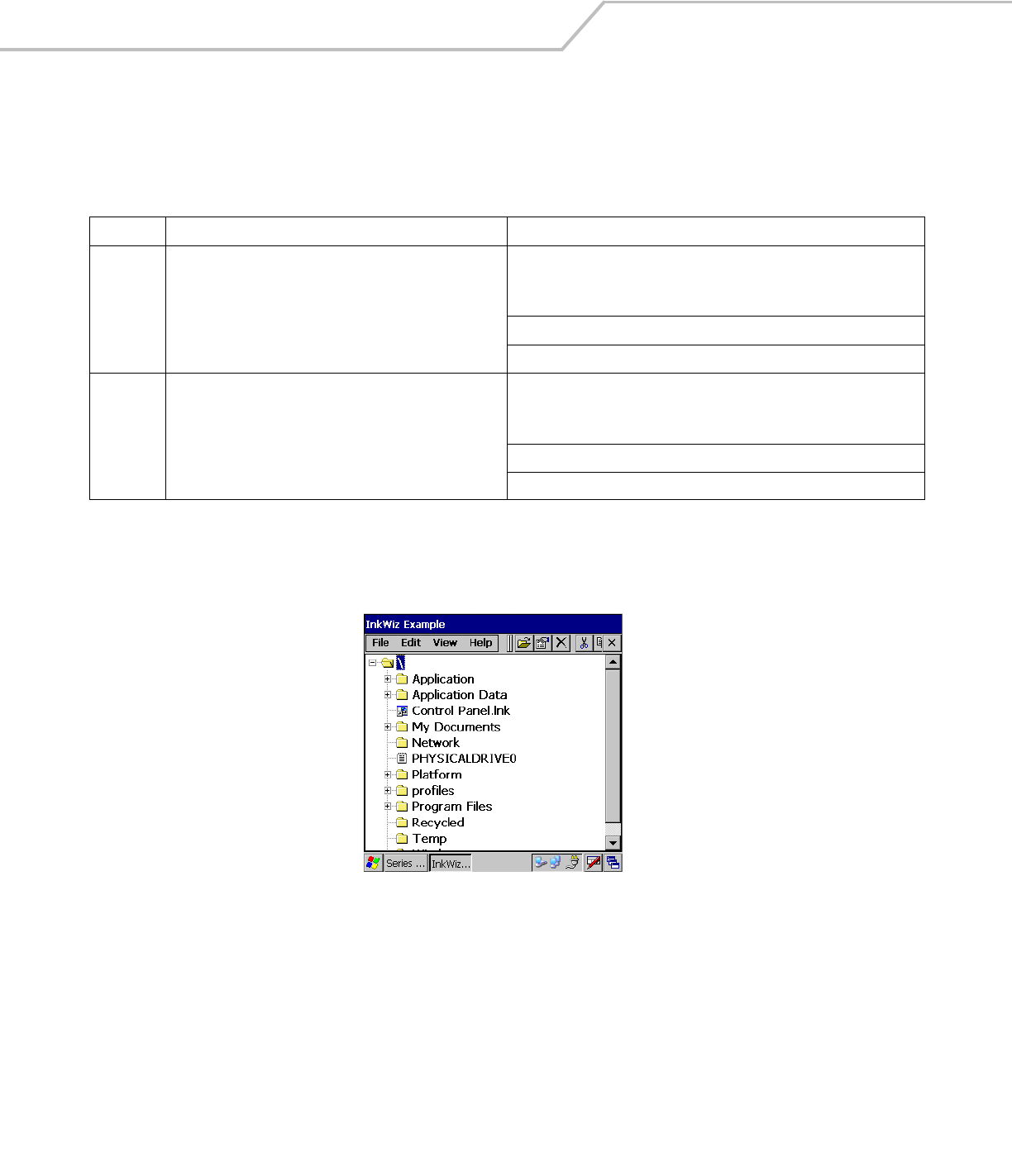
MC3000 User Guide2-24
Waking the Mobile Computer
The default wakeup conditions define what actions wakeup the mobile computer. These settings are configurable and the factory
default settings shown in Table 2-9 are subject to change/update.
File System Directory Structure
The mobile computer directory structure displays all of the file folders. The pre-installed folders are in flash file system memory and
optional removable storage devices (SD storage cards).
Figure 2-20. Mobile Computer Directory Structure
•Application and Platform folders are located in flash file system memory.
• The Windows, Program Files, profiles, and My Documents folders are composites, RAM based folders generated from ROM
(many of these files are marked read only).
• The Network folder is a link to file systems mapped using the network redirector. The files do not physically reside on the
mobile computer.
• The Temp and Recycled folders typically contain RAM based files.
Table 2-9. Default Wakeup Conditions
Status Description Conditions for Wakeup
Power Off When the mobile computer is set to the suspend mode by
pressing Power, these actions wake the mobile computer.
1. Power button is pressed.
2. AC power added or removed.
3. Cradle/cable connect or disconnect.
Any key or the Scan button, is pressed.
Real Time Clock set to wake up.
Auto Off When the mobile computer goes into suspend mode by an
automatic power-off function, these actions wake the mobile
computer.
1. Power button is pressed.
2. AC power added or removed.
3. Cradle/cable connect or disconnect.
Any key or the Scan button, is pressed.
Real Time Clock set to wake up.
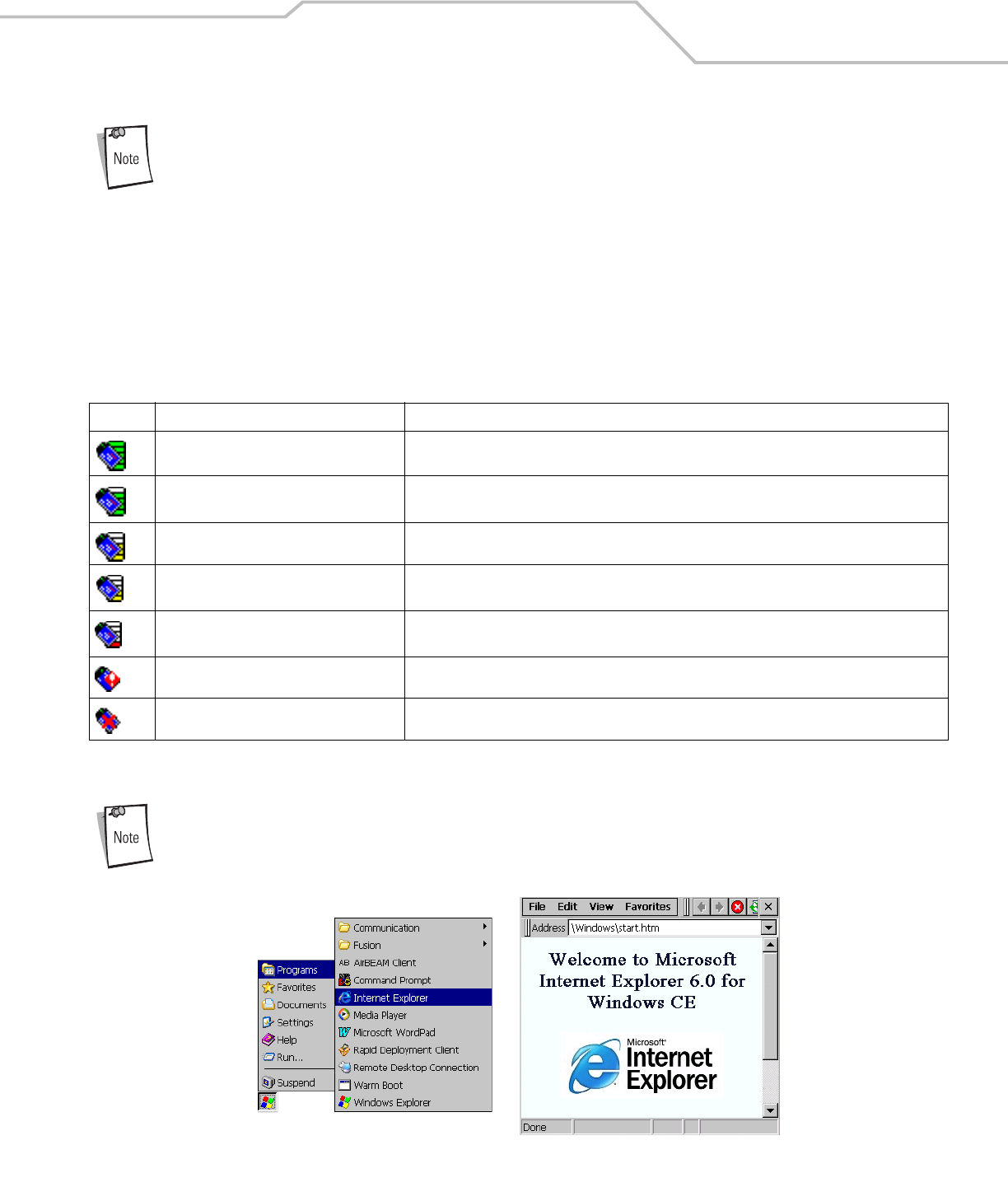
Operating the MC3000 2-25
All files copied to the RAM based folders are lost after a cold boot.
Connecting to the Internet on a Wireless LAN Network
The mobile computer can connect to the Internet across a wireless LAN network. The Wireless Applications utility starts
automatically when the mobile computer is turned on and the wireless application icon appears in the taskbar to indicate the
connection and the signal strength status. Before attempting a wireless internet connection, confirm that the wireless application
radio is connected to a wireless LAN network. If the WLAN radio is not connected or if the signal strength is not “Good” or better,
contact the network administrator.
To connect using Internet Explorer (IE) tap Start - Programs - Internet Explorer to start Internet Explorer.
IE is provided only on mobile computers provided with Microsoft® Windows CE .NET 5.0 Professional. IE is not provided
on mobile computers with Microsoft® Windows CE .NET 5.0 Core.
Figure 2-21. Typical Internet Explorer (IE) Connection
Table 2-10. Wireless Applications Icons, Signal Strength Descriptions
Icon Status Action
Excellent signal strength Wireless LAN network is ready to use.
Very good signal strength Wireless LAN network is ready to use.
Good signal strength Wireless LAN network is ready to use.
Fair signal strength Wireless LAN network is ready to use. Notify the network administrator that the signal strength is
only “Fair”.
Poor signal strength Wireless LAN network is ready to use. Performance may not be optimum. Notify the network
administrator that the signal strength is “Poor”.
Out-of-network range (not associated) No wireless LAN network connection. Notify the network administrator.
No wireless LAN network card detected. No wireless LAN network card detected. Notify the network administrator.

MC3000 User Guide2-26
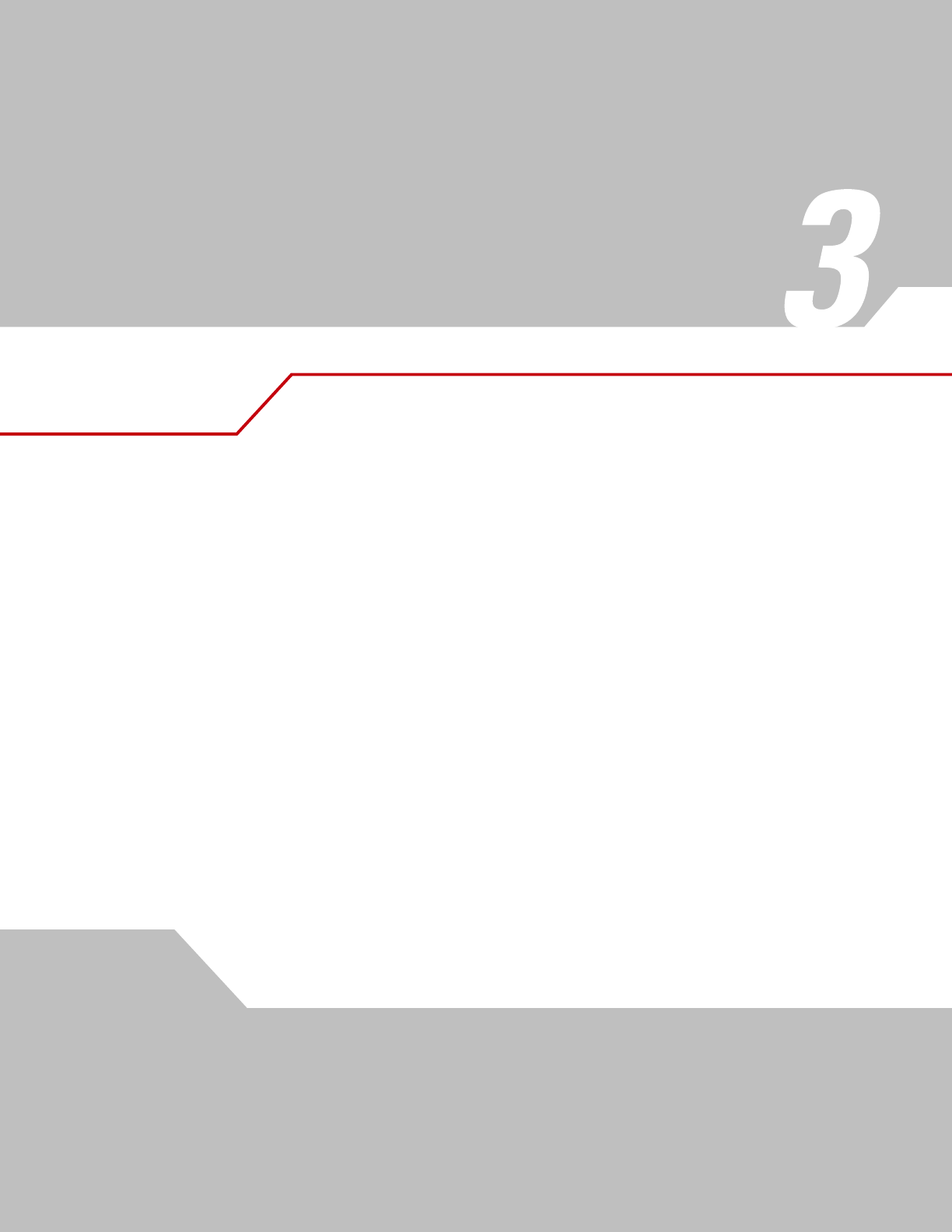
Using Bluetooth
Chapter Contents
Introduction . . . . . . . . . . . . . . . . . . . . . . . . . . . . . . . . . . . . . . . . . . . . . . . . . . . . . . . . . . . . . . . . . . . . . . . . . . . . 3- 3
Adaptive Frequency Hopping . . . . . . . . . . . . . . . . . . . . . . . . . . . . . . . . . . . . . . . . . . . . . . . . . . . . . . . . . . . . . . . .3-3
Security. . . . . . . . . . . . . . . . . . . . . . . . . . . . . . . . . . . . . . . . . . . . . . . . . . . . . . . . . . . . . . . . . . . . . . . . . . . . . . . . .3-3
Turning the Bluetooth Radio Mode On and Off . . . . . . . . . . . . . . . . . . . . . . . . . . . . . . . . . . . . . . . . . . . . . . . . . .3-4
Disabling Bluetooth . . . . . . . . . . . . . . . . . . . . . . . . . . . . . . . . . . . . . . . . . . . . . . . . . . . . . . . . . . . . . . . . . . .3-4
Enabling Bluetooth. . . . . . . . . . . . . . . . . . . . . . . . . . . . . . . . . . . . . . . . . . . . . . . . . . . . . . . . . . . . . . . . . . . .3-5
Bluetooth Power States . . . . . . . . . . . . . . . . . . . . . . . . . . . . . . . . . . . . . . . . . . . . . . . . . . . . . . . . . . . . . . . .3-5
Cold Boot . . . . . . . . . . . . . . . . . . . . . . . . . . . . . . . . . . . . . . . . . . . . . . . . . . . . . . . . . . . . . . . . . . . . . . .3-5
Warm Boot . . . . . . . . . . . . . . . . . . . . . . . . . . . . . . . . . . . . . . . . . . . . . . . . . . . . . . . . . . . . . . . . . . . . . .3-5
Suspend . . . . . . . . . . . . . . . . . . . . . . . . . . . . . . . . . . . . . . . . . . . . . . . . . . . . . . . . . . . . . . . . . . . . . . . .3-5
Resume. . . . . . . . . . . . . . . . . . . . . . . . . . . . . . . . . . . . . . . . . . . . . . . . . . . . . . . . . . . . . . . . . . . . . . . . .3-5
Modes. . . . . . . . . . . . . . . . . . . . . . . . . . . . . . . . . . . . . . . . . . . . . . . . . . . . . . . . . . . . . . . . . . . . . . . . . . . . . . . . . .3-5
Wizard Mode . . . . . . . . . . . . . . . . . . . . . . . . . . . . . . . . . . . . . . . . . . . . . . . . . . . . . . . . . . . . . . . . . . . . . . . .3-5
Explorer Mode . . . . . . . . . . . . . . . . . . . . . . . . . . . . . . . . . . . . . . . . . . . . . . . . . . . . . . . . . . . . . . . . . . . . . . .3-8
Discovering Bluetooth Device(s) . . . . . . . . . . . . . . . . . . . . . . . . . . . . . . . . . . . . . . . . . . . . . . . . . . . . . . . . . . . . .3-8
Bonding with Discovered Device(s) . . . . . . . . . . . . . . . . . . . . . . . . . . . . . . . . . . . . . . . . . . . . . . . . . .3-10
Renaming a Bonded Device. . . . . . . . . . . . . . . . . . . . . . . . . . . . . . . . . . . . . . . . . . . . . . . . . . . . . . . .3-11
Deleting a Bonded Device . . . . . . . . . . . . . . . . . . . . . . . . . . . . . . . . . . . . . . . . . . . . . . . . . . . . . . . . .3-12
Accepting a Bond. . . . . . . . . . . . . . . . . . . . . . . . . . . . . . . . . . . . . . . . . . . . . . . . . . . . . . . . . . . . . . . .3-12
Discovering Services . . . . . . . . . . . . . . . . . . . . . . . . . . . . . . . . . . . . . . . . . . . . . . . . . . . . . . . . . . . . . . . . . . . . .3-13
File Transfer Services. . . . . . . . . . . . . . . . . . . . . . . . . . . . . . . . . . . . . . . . . . . . . . . . . . . . . . . . . . . . . . . . .3-14
Create New File or Folder . . . . . . . . . . . . . . . . . . . . . . . . . . . . . . . . . . . . . . . . . . . . . . . . . . . . . . . . .3-15
Delete File . . . . . . . . . . . . . . . . . . . . . . . . . . . . . . . . . . . . . . . . . . . . . . . . . . . . . . . . . . . . . . . . . . . . .3-15
Get File. . . . . . . . . . . . . . . . . . . . . . . . . . . . . . . . . . . . . . . . . . . . . . . . . . . . . . . . . . . . . . . . . . . . . . . .3-15

MC3000 User Guide3-2
Put File . . . . . . . . . . . . . . . . . . . . . . . . . . . . . . . . . . . . . . . . . . . . . . . . . . . . . . . . . . . . . . . . . . . . . . . .3-15
Connect to Internet Using Access Point. . . . . . . . . . . . . . . . . . . . . . . . . . . . . . . . . . . . . . . . . . . . . . . . . . .3-16
Dial-Up Networking Services . . . . . . . . . . . . . . . . . . . . . . . . . . . . . . . . . . . . . . . . . . . . . . . . . . . . . . . . . . .3-16
Add a Dial-up Entry. . . . . . . . . . . . . . . . . . . . . . . . . . . . . . . . . . . . . . . . . . . . . . . . . . . . . . . . . . . . . . .3-18
OBEX Object Push Services . . . . . . . . . . . . . . . . . . . . . . . . . . . . . . . . . . . . . . . . . . . . . . . . . . . . . . . . . . . .3-19
Send a Picture. . . . . . . . . . . . . . . . . . . . . . . . . . . . . . . . . . . . . . . . . . . . . . . . . . . . . . . . . . . . . . . . . . .3-19
Headset Services . . . . . . . . . . . . . . . . . . . . . . . . . . . . . . . . . . . . . . . . . . . . . . . . . . . . . . . . . . . . . . . . . . . .3-20
Serial Port Services . . . . . . . . . . . . . . . . . . . . . . . . . . . . . . . . . . . . . . . . . . . . . . . . . . . . . . . . . . . . . . . . . .3-20
Personal Area Network Services . . . . . . . . . . . . . . . . . . . . . . . . . . . . . . . . . . . . . . . . . . . . . . . . . . . . . . . .3-21
Bluetooth Settings . . . . . . . . . . . . . . . . . . . . . . . . . . . . . . . . . . . . . . . . . . . . . . . . . . . . . . . . . . . . . . . . . . . . . . .3-22
Device Info Tab. . . . . . . . . . . . . . . . . . . . . . . . . . . . . . . . . . . . . . . . . . . . . . . . . . . . . . . . . . . . . . . . . . . . . .3-22
Services Tab . . . . . . . . . . . . . . . . . . . . . . . . . . . . . . . . . . . . . . . . . . . . . . . . . . . . . . . . . . . . . . . . . . . . . . . .3-22
Dial-Up Networking Service. . . . . . . . . . . . . . . . . . . . . . . . . . . . . . . . . . . . . . . . . . . . . . . . . . . . . . . .3-23
File Transfer Service. . . . . . . . . . . . . . . . . . . . . . . . . . . . . . . . . . . . . . . . . . . . . . . . . . . . . . . . . . . . . .3-24
OBEX Object Push Service . . . . . . . . . . . . . . . . . . . . . . . . . . . . . . . . . . . . . . . . . . . . . . . . . . . . . . . . .3-24
Personal Area Networking Service . . . . . . . . . . . . . . . . . . . . . . . . . . . . . . . . . . . . . . . . . . . . . . . . . .3-25
Serial Port Service . . . . . . . . . . . . . . . . . . . . . . . . . . . . . . . . . . . . . . . . . . . . . . . . . . . . . . . . . . . . . . .3-25
Headset Service . . . . . . . . . . . . . . . . . . . . . . . . . . . . . . . . . . . . . . . . . . . . . . . . . . . . . . . . . . . . . . . . .3-26
Security Tab . . . . . . . . . . . . . . . . . . . . . . . . . . . . . . . . . . . . . . . . . . . . . . . . . . . . . . . . . . . . . . . . . . . . . . . .3-27
Discovery Tab . . . . . . . . . . . . . . . . . . . . . . . . . . . . . . . . . . . . . . . . . . . . . . . . . . . . . . . . . . . . . . . . . . . . . . .3-28
Virtual COM Port Tab . . . . . . . . . . . . . . . . . . . . . . . . . . . . . . . . . . . . . . . . . . . . . . . . . . . . . . . . . . . . . . . . .3-29
Miscellaneous Tab . . . . . . . . . . . . . . . . . . . . . . . . . . . . . . . . . . . . . . . . . . . . . . . . . . . . . . . . . . . . . . . . . . .3-30

Using Bluetooth 3-3
Introduction
Bluetooth-equipped devices can communicate without wires, using frequency-hopping spread spectrum (FHSS) RF to transmit and
receive data in the 2.4 GHz Industry Scientific and Medical (ISM) band (802.15.1). Bluetooth wireless technology is specifically
designed for short-range (30 feet/10 meters) communications and low power consumption.
Mobile computers with Bluetooth capabilities can exchange information (e.g., files, appointments and tasks) with other Bluetooth
enabled devices such as phones, printers, access points and other mobile computers. In addition, a dial-up modem connection can be
created between the Bluetooth mobile computer and a Bluetooth enabled phone. The Bluetooth phone can then be used as a modem.
Symbol mobile computers with Bluetooth technology use the StoneStreet One Bluetooth stack. To program Bluetooth within the
mobile computer refer to the StoneStreet One SDK.
Adaptive Frequency Hopping
Adaptive Frequency Hopping (AFH) is a method of avoiding fixed frequency interferers. AFH can be used with Bluetooth voice. All
devices in the piconet (Bluetooth network) must be AFH-capable in order for AFH to work. There is no AFH when connecting and
discovering devices. Avoid making Bluetooth connections and discoveries during critical 802.11b communications. AFH for Bluetooth
can be broken-down into four main sections:
• Channel Classification - A method of detecting an interference on a channel-by-channel basis, or pre-defined channel mask.
• Link Management - Coordinates and distributes the AFH information to the rest of the Bluetooth network.
• Hop Sequence Modification - Avoids the interference by selectively reducing the number of hopping channels.
• Channel Maintenance - A method for periodically re-evaluating the channels.
When AFH is enabled, the Bluetooth radio “hops-around” (instead of through) the 802.11b high-rate channels. AFH coexistence
allows Symbol mobile computers to operate in any infrastructure. AFH is always enabled in the MC3000.
The Bluetooth radio in this mobile computer operates as a Class 2 device power class. The maximum output power is 2.5mW and the
expected range is up to 32.8 feet (10 meters). A definitive definition of ranges based on power class is difficult to obtain due to power
and device differences, and whether one measures open space or closed office space.
It is not recommended to perform Bluetooth wireless technology inquiry when high rate 802.11b operation is
required.
Security
The current Bluetooth specification defines security at the link level. Application-level security is not specified. This allows
application developers to define security mechanisms tailored to their specific need. Link-level security is really between devices not
users, while application-level security can be implemented on a per-user basis. The Bluetooth specification defines security
algorithms and procedures needed to authenticate devices, and if needed, encrypt the data flowing on the link between the devices.
Device authentication is a mandatory feature of Bluetooth while link encryption is optional.
Pairing of Bluetooth devices is accomplished by creating an initialization key that is used to authenticate the devices and create a link
key for them. Entering a common PIN number in the devices being paired generates the initialization key. The PIN number is never
sent over the air. By default, the Bluetooth stack responds with no key when a key is requested (it is up to user to respond to the key
request event). Authentication of Bluetooth devices is based-upon a challenge-response transaction. Bluetooth allows for a PIN
number or passkey that is used to create other 128-bit keys used for security and encryption. The encryption key is derived from the
link key used to authenticate the pairing devices. Also worthy of note is the limited range and fast frequency hopping of the Bluetooth
radios that makes long-distance eavesdropping difficult.
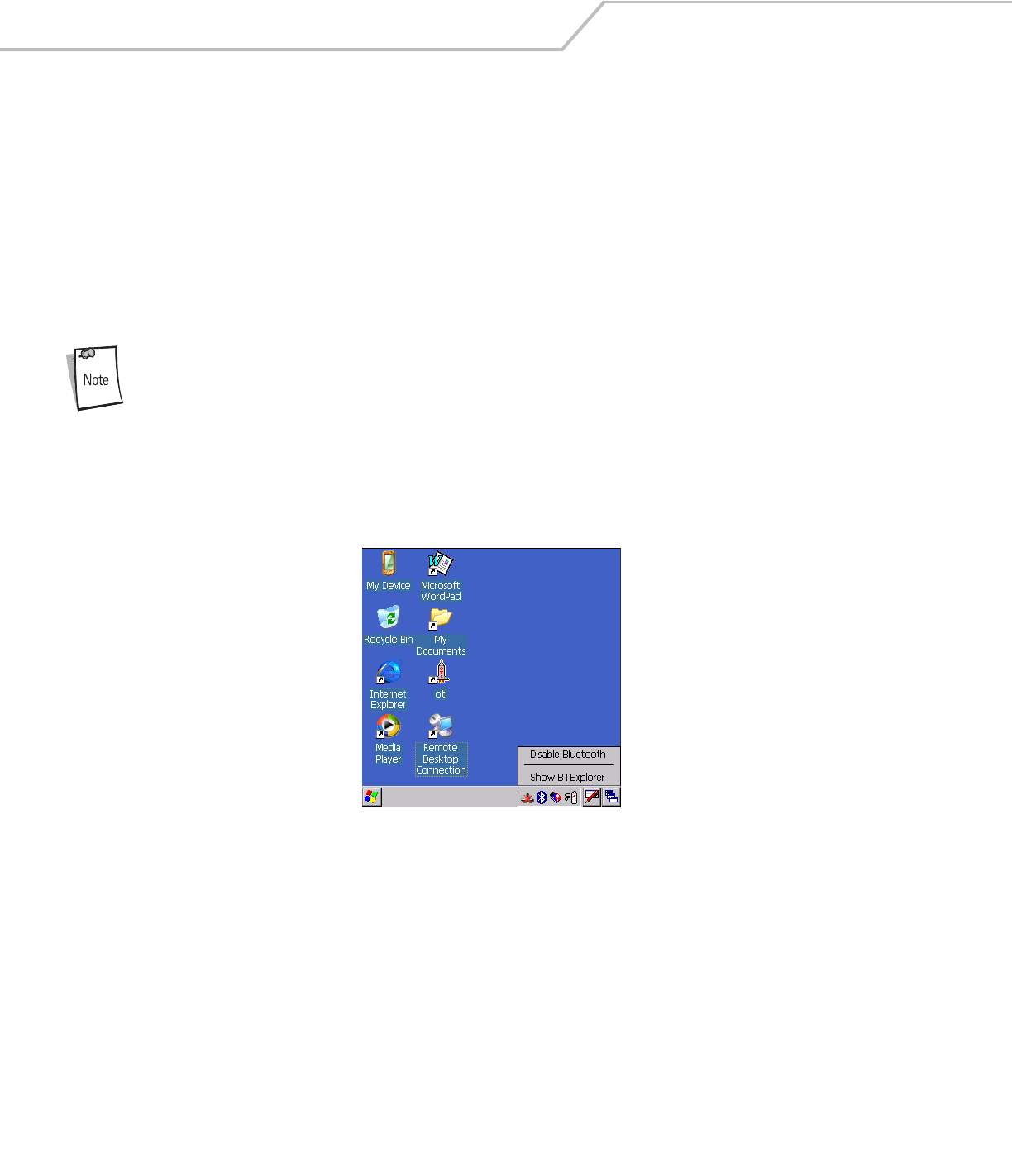
MC3000 User Guide3-4
It is recommended:
• Perform pairing in a secure environment
• Keep PIN codes private and don't store the PIN codes in the mobile computer
• Implement application-level security.
Turning the Bluetooth Radio Mode On and Off
Turn off the Bluetooth radio to save power or if entering an area with radio restrictions (e.g., an airplane). When the radio is off, the
mobile computer can not be seen or connected to by other Bluetooth devices. Turn on the Bluetooth radio to exchange information
with other Bluetooth devices (within range). Communicate only with Bluetooth radios in close proximity.
To achieve the best battery life in mobile computers with multiple radios, turn off the radios that are not being
used.
Disabling Bluetooth
To disable Bluetooth, tap Bluetooth icon - Disable Bluetooth. The Bluetooth icon changes to indicate that Bluetooth is disabled. An
exclamation point appears with the icon.
Figure 3-1. Disable Bluetooth
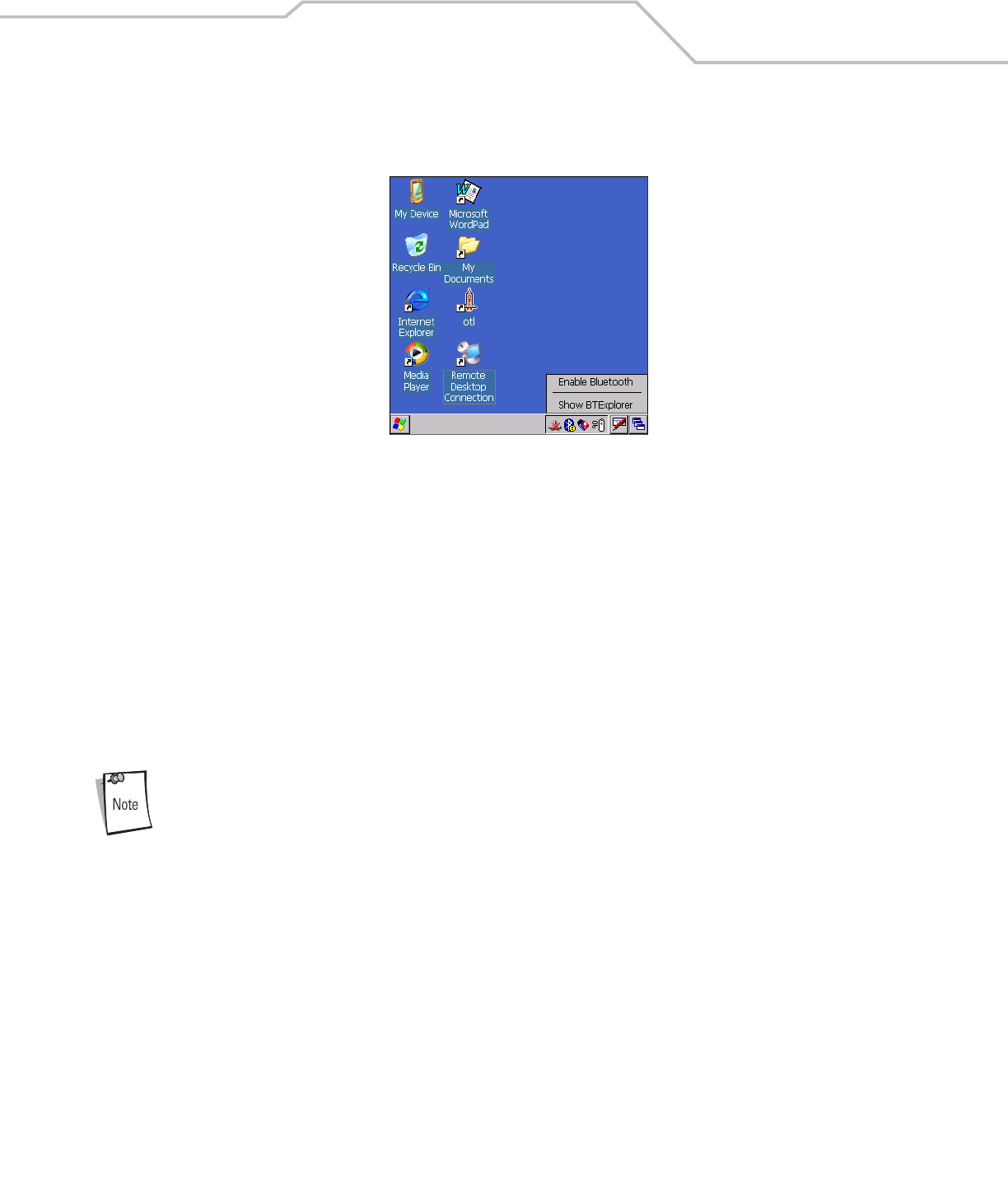
Using Bluetooth 3-5
Enabling Bluetooth
To enable Bluetooth, tap Bluetooth icon - Enable Bluetooth. The Bluetooth icon changes to indicate that Bluetooth is enabled.
Figure 3-2. Enable Bluetooth
Bluetooth Power States
Cold Boot
When a cold boot is performed on the mobile computer, Bluetooth turns off. It is normal to see the Bluetooth icon appear and
disappear, as well as a wait cursor, when initialization proceeds in all modes.
Warm Boot
When a warm boot is performed on the mobile computer, Bluetooth returns to the disabled state (off).
Suspend
When the mobile computer suspends, Bluetooth turns off.
When the mobile computer is placed in suspend mode, the Bluetooth radio mode powers off and the piconet
(Bluetooth connection) is dropped. When the mobile computer resumes, it could take up to 10 seconds for the
Bluetooth radio driver to re-initialize the radio.
Resume
When the mobile computer resumes, Bluetooth turns on if it was on prior to suspend. Note that any Bluetooth connection that was
dropped during a suspend needs to be reconnected after a resume.
Modes
The BTExplorer application has two mode for managing Bluetooth connections: Wizard Mode and Explorer Mode. The Wizard Mode
is for novice Bluetooth users and the Explorer Mode is for experienced Bluetooth users.
Wizard Mode
Wizard Mode provides a simple step by step process for discovering and connecting to Bluetooth devices. The wizard takes you
through the entire process.
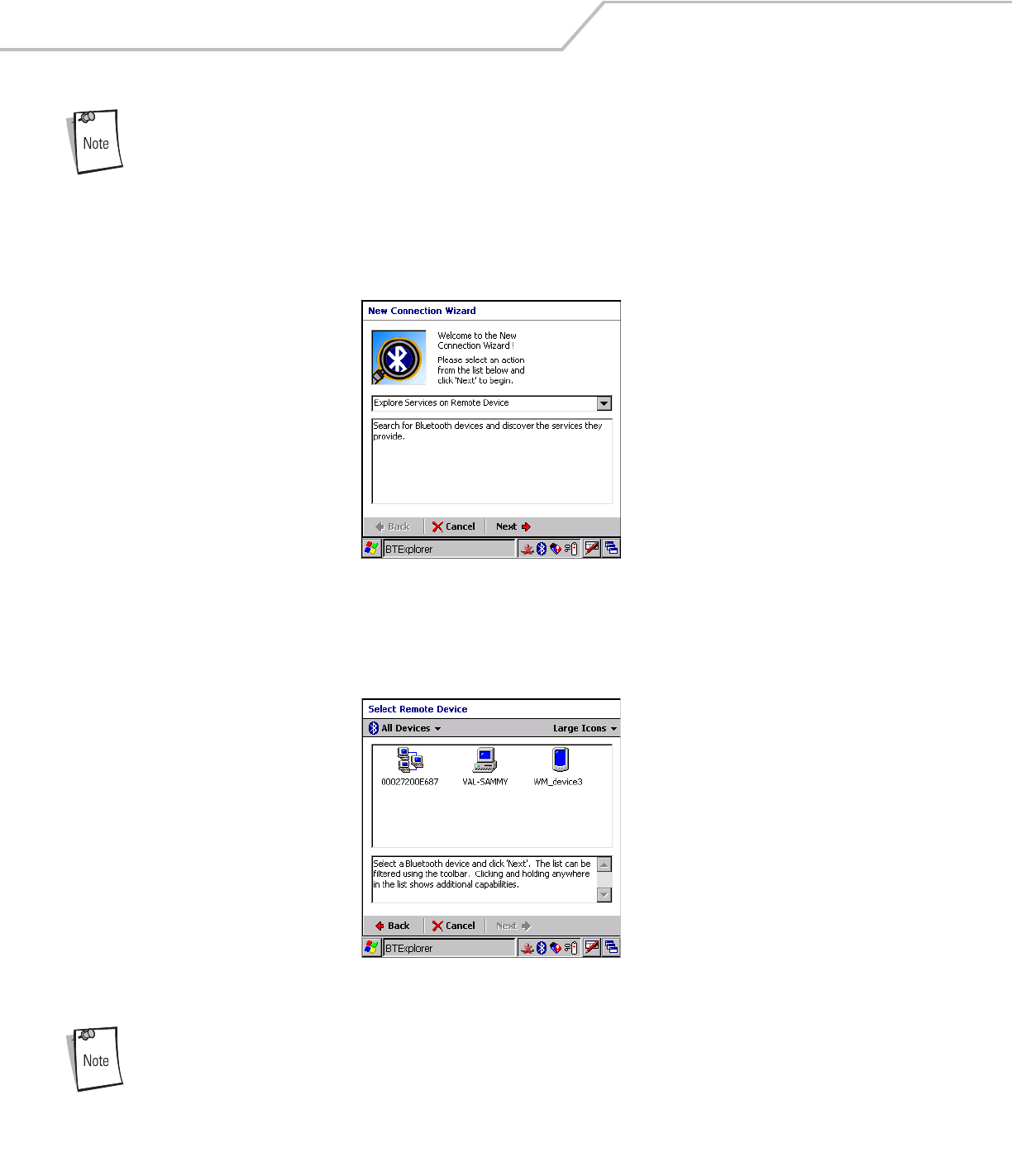
MC3000 User Guide3-6
When switching between Wizard Mode and Explorer Mode, all active connections are closed.
The following steps provide an example for using the Wizard to services for remote devices.
1. Tap the Bluetooth icon and select Show BTExplorer. The BTExplorer window appears.
2. Tap File - New Connection. The New Connection Wizard window appears.
Figure 3-3. New Connection Wizard Window
3. Select an action from the drop-down list. In this example, Explore Services on Remote Device is selected.
4. Tap Next. The BTExplorer searches for Bluetooth devices in the area and displays the devices in the Select Remote Device
window.
Figure 3-4. Select Remote Device Window
Devices discovered previously are listed to save time. To start a new device discovery, tap and hold and select
Discover Devices from the menu.
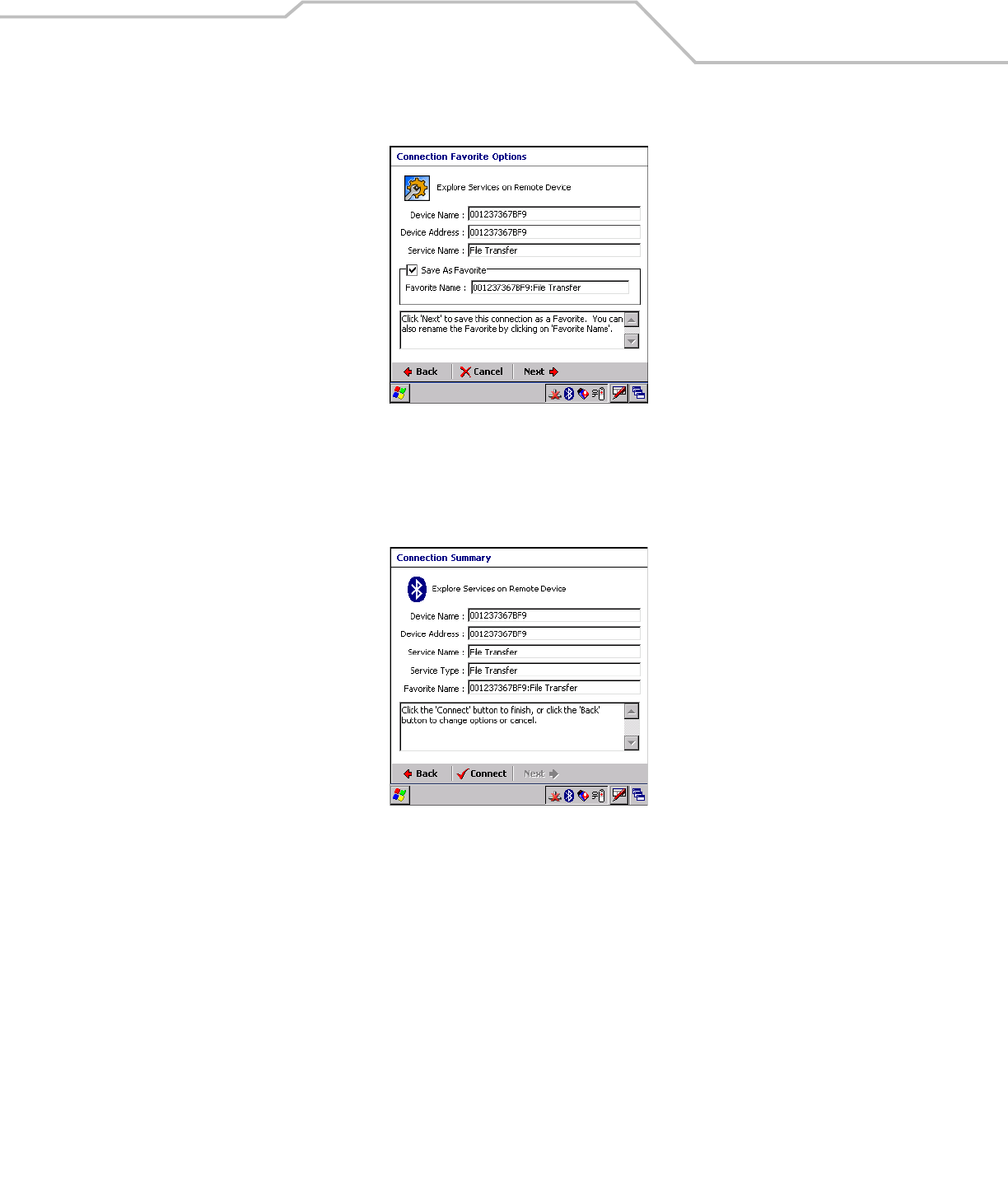
Using Bluetooth 3-7
5. Select a device from the list and then tap Next. The Connection Favorite Options window appears.
Figure 3-5. Connection Favorite Options Window
6. Select Save As Favorite check box to save this service in the Favorite view.
7. In the Favorite Name text box, enter a name for this service that will appear in the Favorite list.
8. Tap Next. The Connection Summary window appears.
Figure 3-6. Connection Summary Window
9. Tap Connect to connect to the service.
The following actions are available in the drop-down list (actions may vary depending upon configurations):
• Explore Services on Remote Device
• Pair with a Remote Device
• ActiveSync via Bluetooth
• Browse Files on Remote Device
• Connect to Internet Using Access Point
• Connect to Internet Using Phone/Modem
• Connect to a Personal Area Network
• Send or Exchange Objects
• Associate Serial Port.
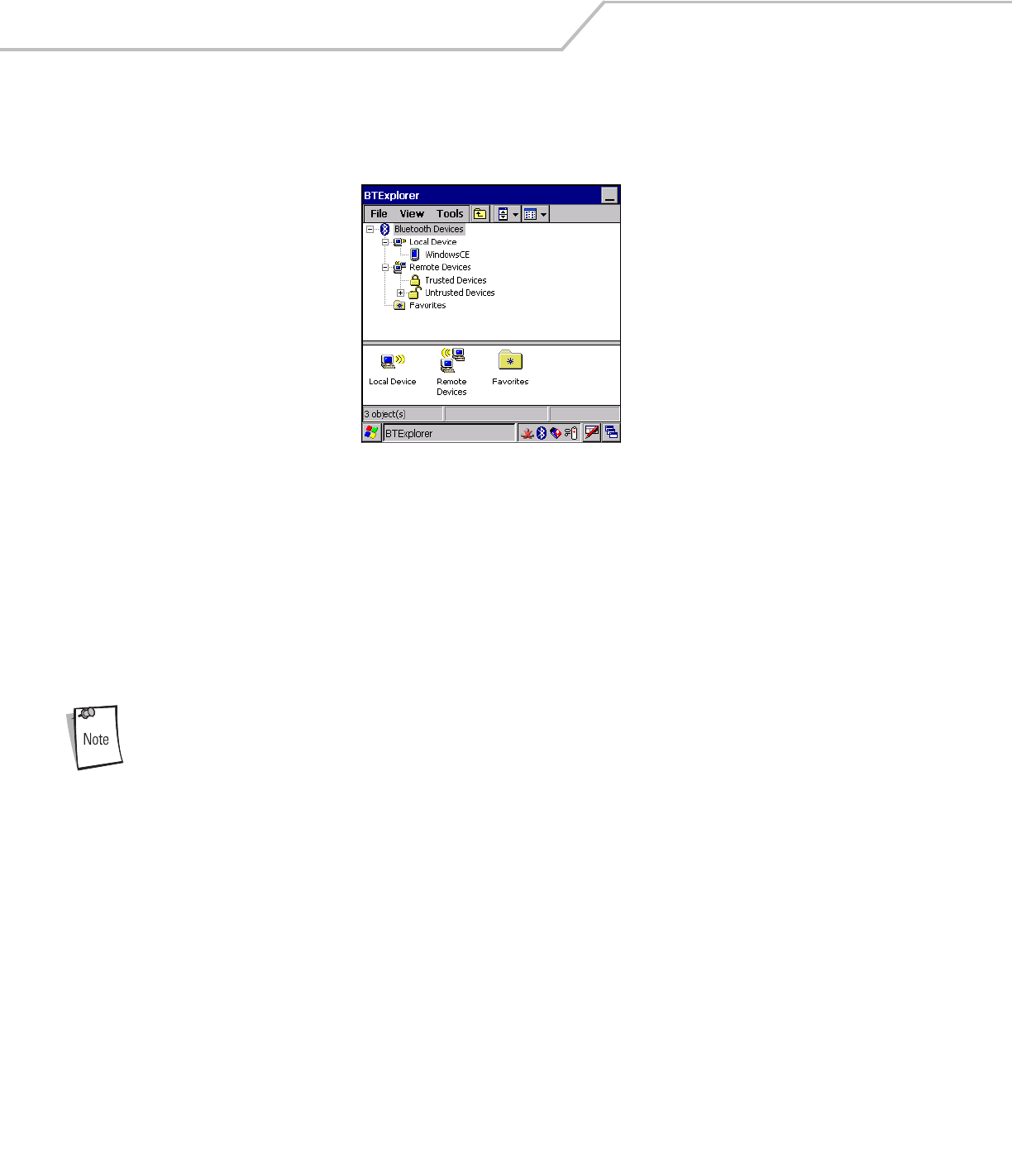
MC3000 User Guide3-8
Explorer Mode
The BTExplorer window is streamlined and easy to navigate and provides greater control to users familiar with Bluetooth
functionality. The menu bar provides quick access to the options and tools used to connect to devices.
Figure 3-7. Explorer Mode Window
You can also use the “tap and hold” technique to view available options. Scroll bars and view options are like those you’re familiar
with on your Windows desktop. The tree structure lists the following sub-items:
• Local Device - This MC3000 mobile computer
• Remote Device - Other Bluetooth devices
• Trusted Devices - Bonded (paired) Bluetooth devices
• Untrusted Devices - Discovered devices that are not bonded
• Favorites - Selected services that are set as being Favorite for quick access.
When switching between Wizard Mode and Explorer Mode, all active connections are closed.
Discovering Bluetooth Device(s)
Follow the steps below to discover Bluetooth devices. The mobile computer can receive information from discovered devices, without
bonding. However, once bonded, an exchange of information between the mobile computer and a bonded device occurs automatically
when the Bluetooth radio is turned on.
To find Bluetooth devices in the area:
1. Ensure that the Bluetooth device being looked for is in discoverable mode.
2. Ensure that the two devices are within 30 feet (10 meters) of one another.
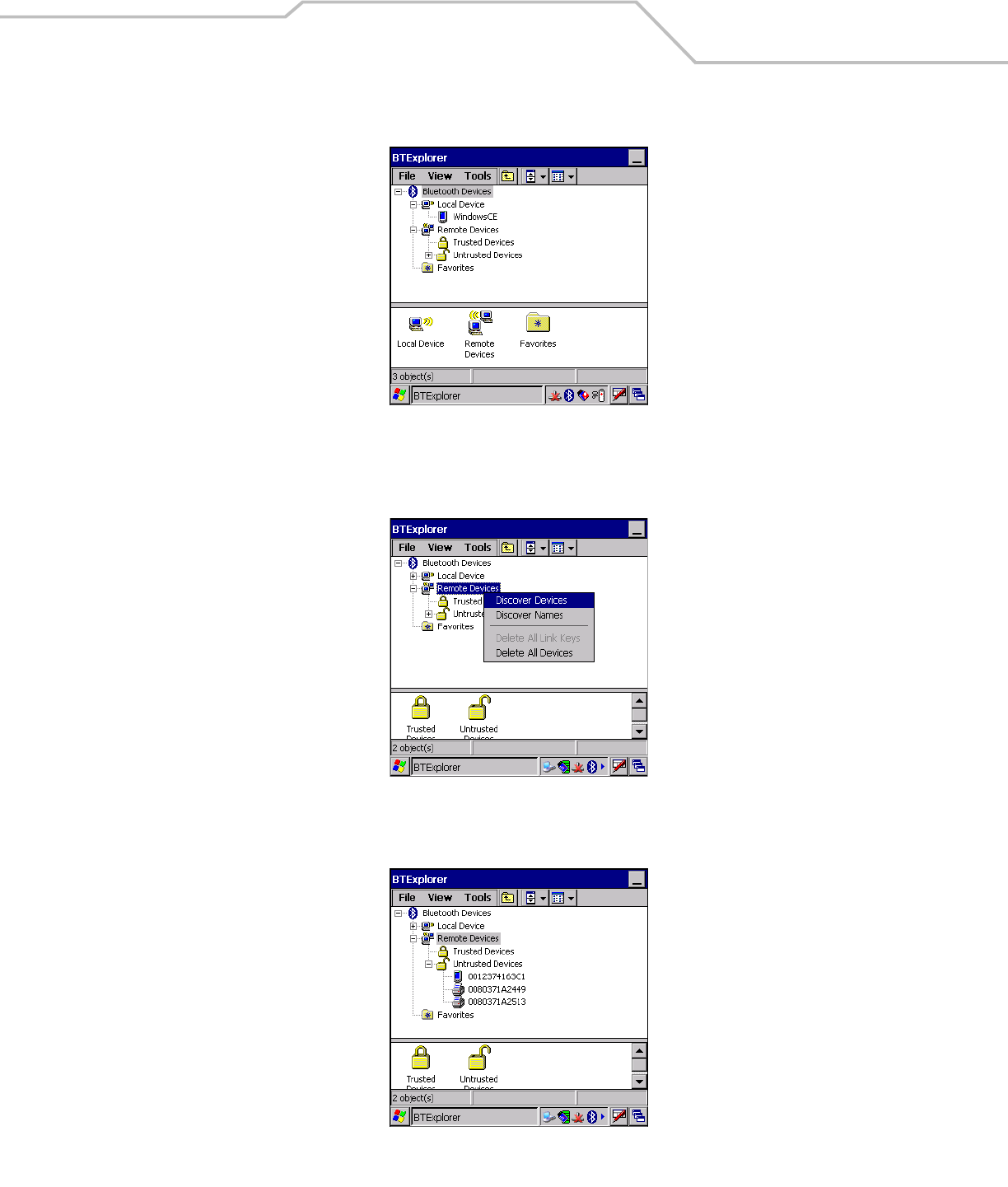
Using Bluetooth 3-9
3. Tap the Bluetooth icon and select Show BTExplorer. The BTExplorer window appears.
Figure 3-8. BTExplorer Window
4. Tap and hold Remote Devices and select Discover Devices from the pop-up menu. The mobile computer searches for
Bluetooth devices in the area.
Figure 3-9. Discover Devices
5. The discovered devices display in the Untrusted Devices folder.
Figure 3-10. Discovered Devices Listed in Untrusted Folder
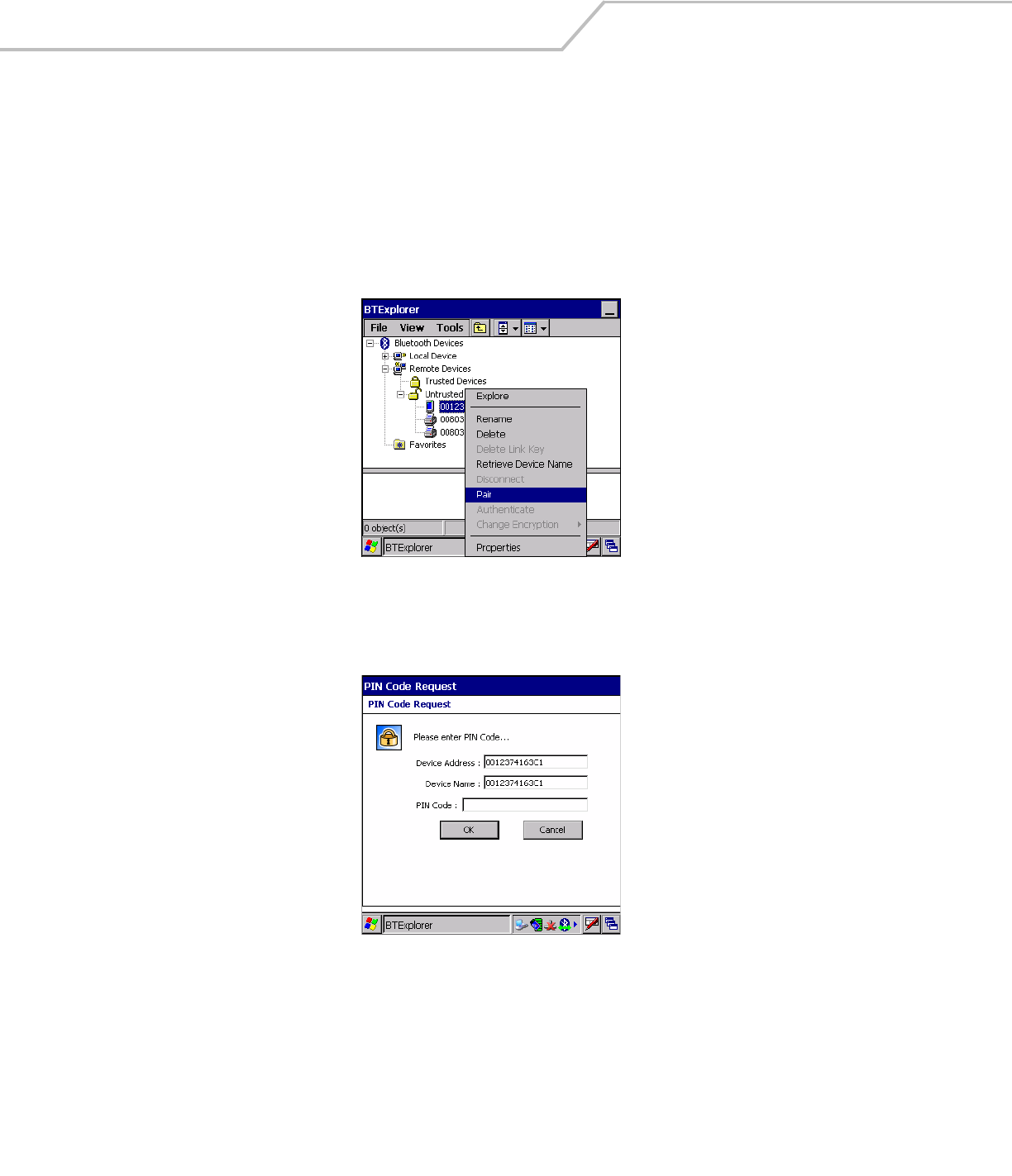
MC3000 User Guide3-10
Bonding with Discovered Device(s)
A bond is a relationship created between the mobile computer and another Bluetooth device in order to exchange information in a
secure manner. Creating a bond involves entering the same PIN on the two devices to bond. Once a bond is created, and the Bluetooth
radios are turned on, the devices recognize the bond and are able to exchange information without re-entering a PIN.
To bond with a discovered Bluetooth device:
1. Discover remote devices. See Discovering Bluetooth Device(s) on page 3-8.
2. In the Untrusted Devices folder, tap and hold on a device to pair with.
Figure 3-11. Pair a Remote Device
3. Select Pair from the pop-up menu.
4. On the mobile computer, the PIN Code Request window appears.
Figure 3-12. PIN Code Request Window
5. In the PIN Code: text box, enter the PIN number (between 1 and 16 characters) and then tap OK.
6. On the remote device, enter the same PIN number.
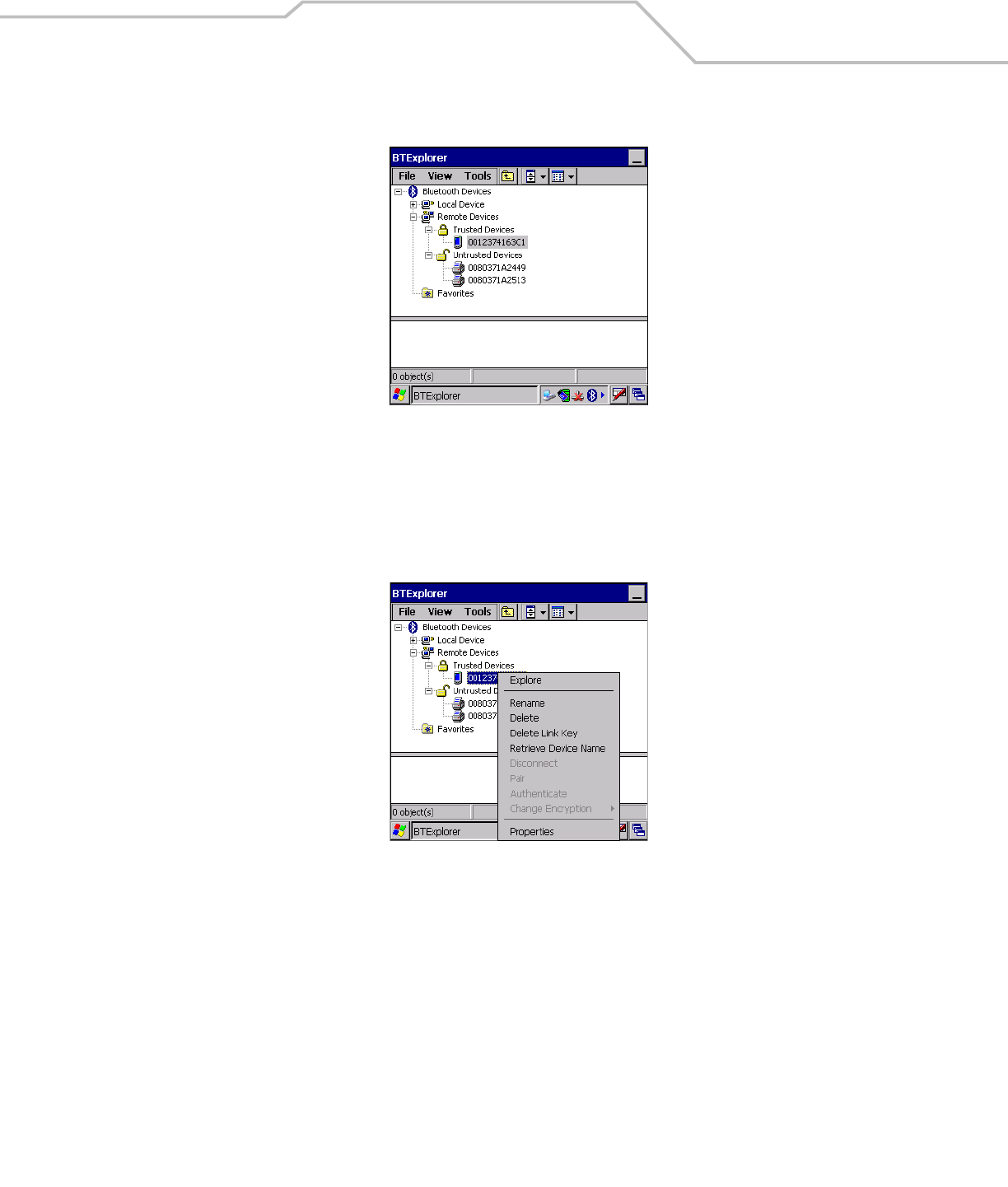
Using Bluetooth 3-11
7. The devices are successfully paired. The device name moves to the Trusted Devices folder.
Figure 3-13. Bonded (Paired) Discovered Device
Renaming a Bonded Device
If it is necessary to rename a bonded device, it can be done from the BTExplorer window.
1. Launch BTExplorer.
2. Tap and hold the device to rename and select Rename in the pop-up menu.
Figure 3-14. Rename Device Selection Dialog Box
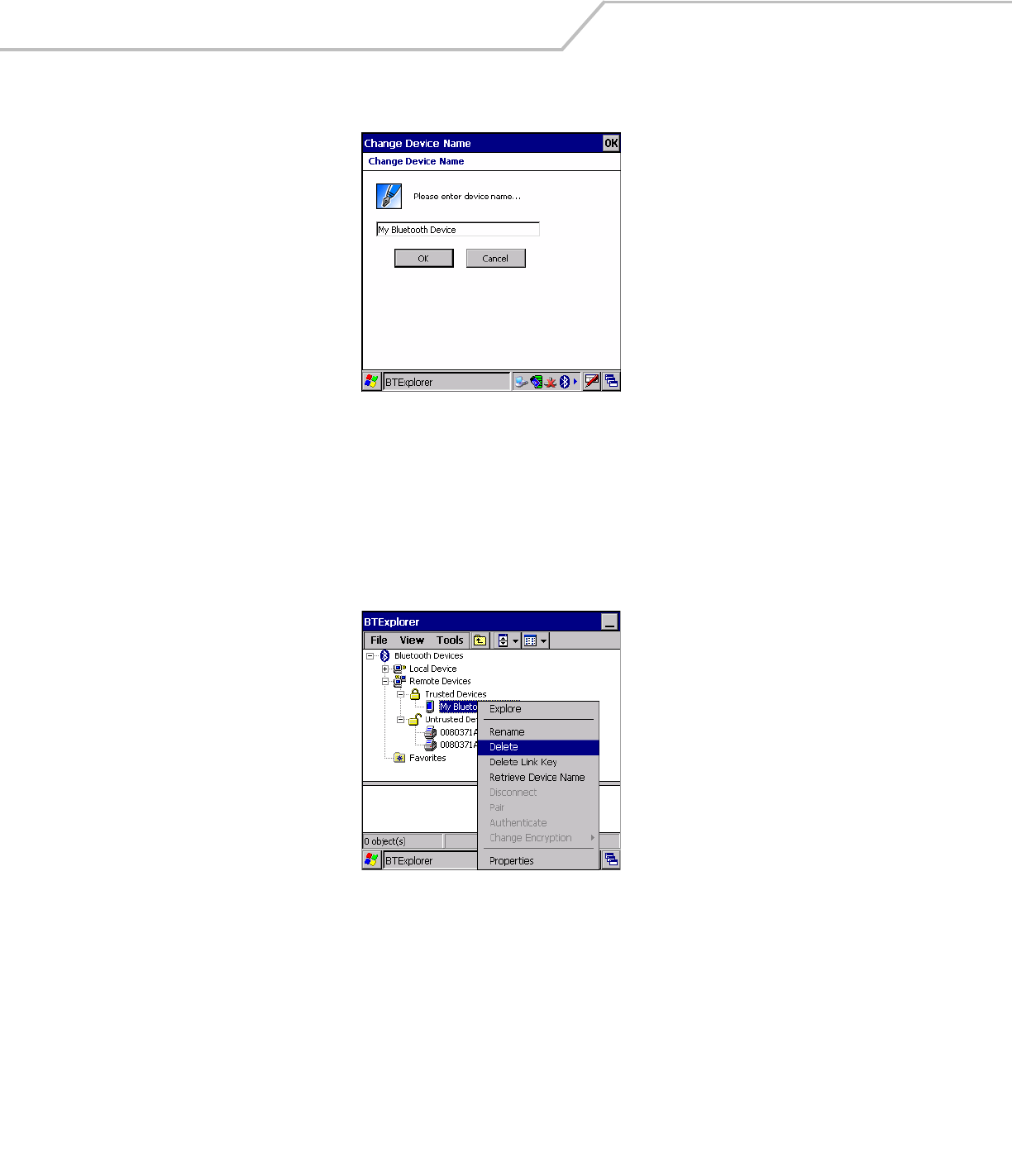
MC3000 User Guide3-12
3. The Change Device Name window appears.
Figure 3-15. Change Device Name Window
4. Enter a new name for the bonded device in the text box. Tap OK.
Deleting a Bonded Device
If it is no longer necessary to connect with a device, delete it from the Bluetooth Bonded Devices window.
1. Launch BTExplorer.
2. Tap and hold the device to delete and.select Delete in the pop-up menu.
Figure 3-16. Delete a Bonded Device
3. A confirmation dialog appears. Tap Yes.
Accepting a Bond
When a remote device wants to bond with a mobile computer you give permission by entering a PIN when requested.
1. Ensure that the mobile computer is set to discoverable and connectable. See Bluetooth Settings on page 3-22.
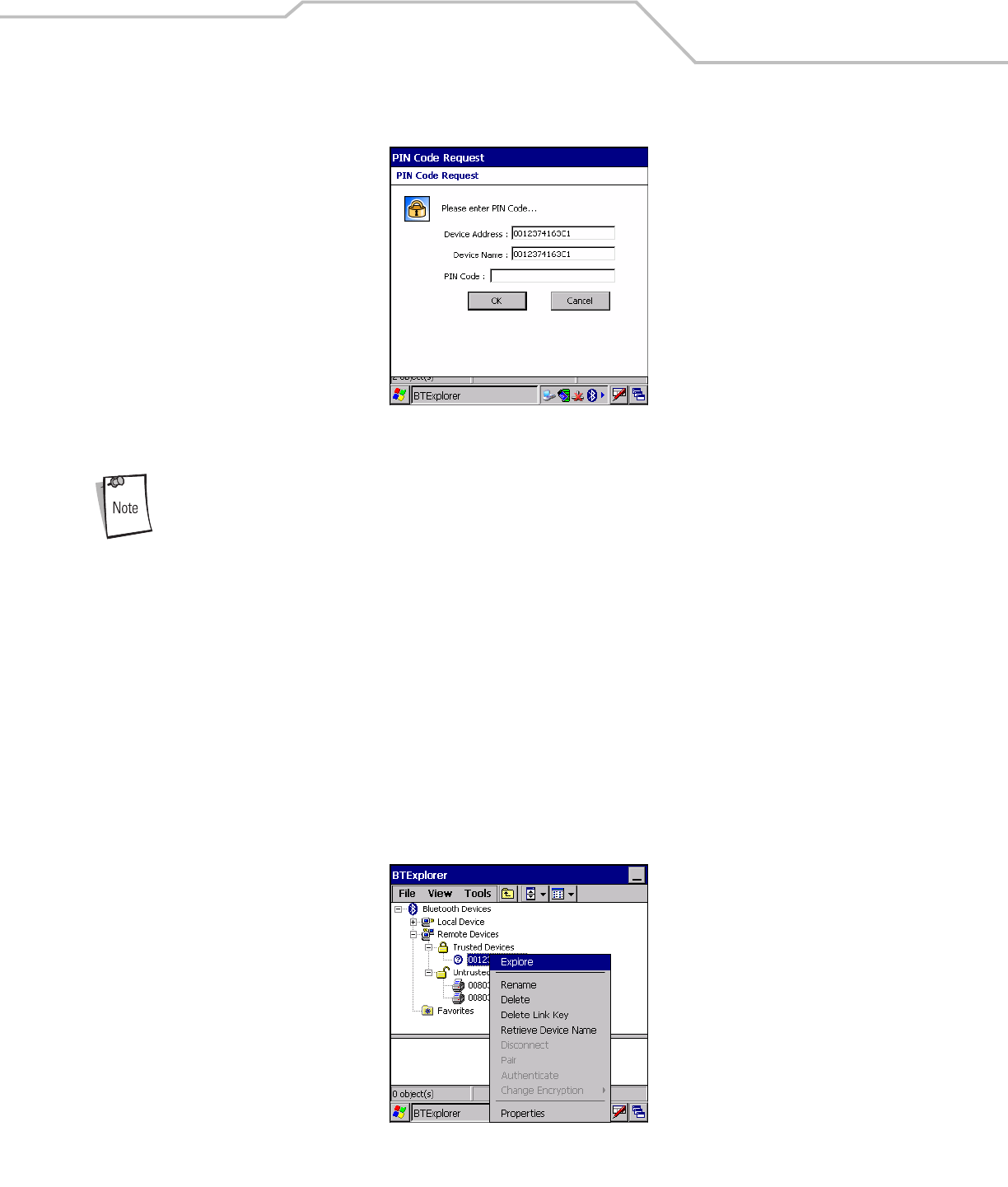
Using Bluetooth 3-13
2. When prompted to bond with the remote device the PIN Code Request window appears.
Figure 3-17. PIN Code Request Window
Connections to untrusted devices are a security risk.
3. In the PIN Code: text box, enter the same PIN that was entered on the device requesting the bond. The PIN must be between
1 and 16 characters.
4. In the Device Name: text box, edit the name of the device requesting the bond, if desired.
5. Tap OK.
6. The bond is created and the mobile computer can now exchange information with the other device.
Discovering Services
Before services can be used, you must first discover remote devices and then bond to those devices.
To determine what services are available on a bonded remote device:
1. Tap the Bluetooth icon and select Show BTExplorer.
2. In BTExplorer window, tap and hold on the remote device and select Explore from the pop-up menu.
Figure 3-18. Discovering Services
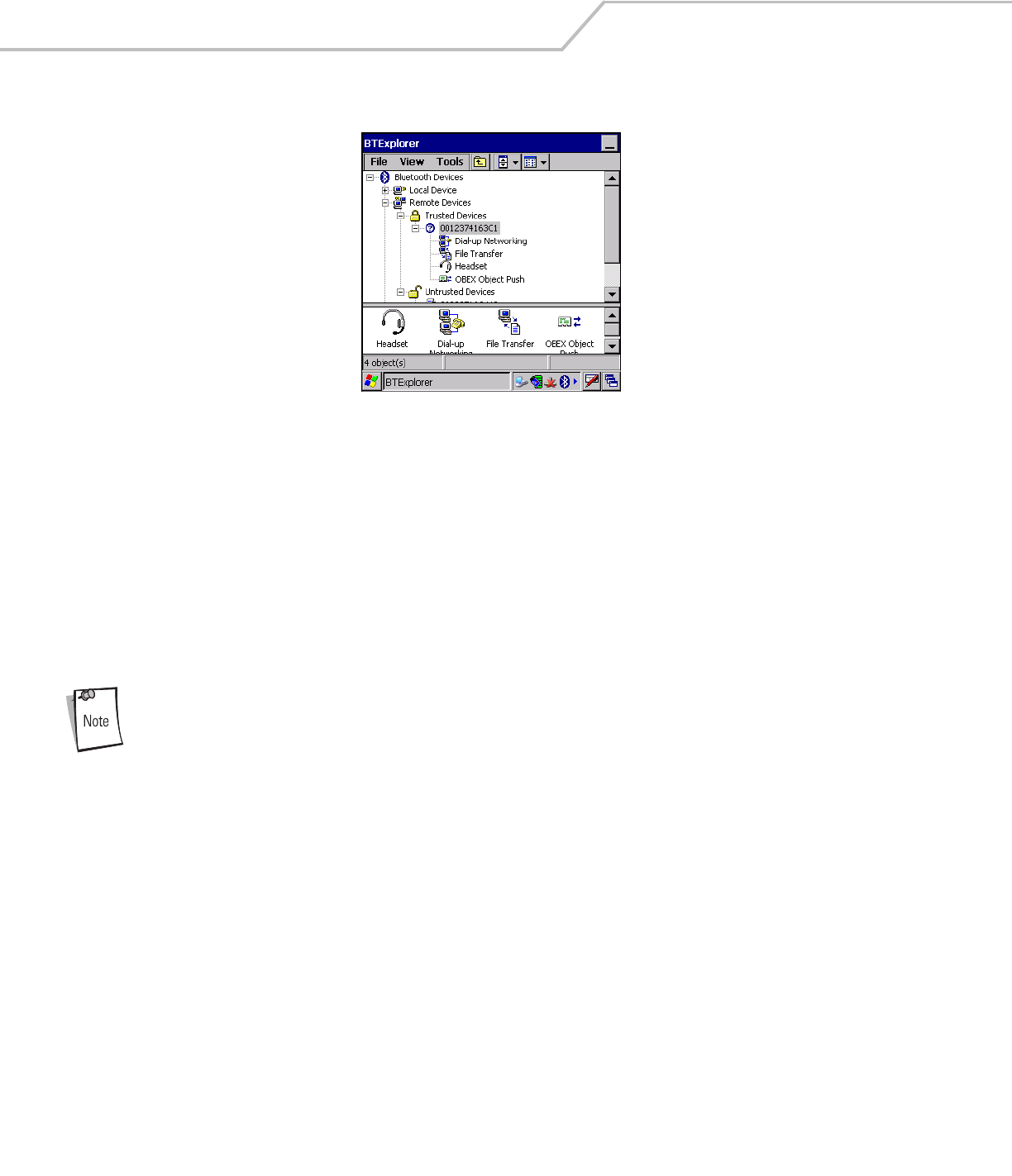
MC3000 User Guide3-14
3. The mobile computer communicates with the remote device and then lists the services under the device name.
Figure 3-19. List of Discovered Services
Some examples of available services are:
• File Transfer Services
• Dial-Up Networking Services
• Headset or Hands-Free Services
• OBEX Object Push Services
• Serial Port Services
These services are discussed in the following paragraphs.
File Transfer Services
Shared folders are a security risk.
To transfer files between the mobile computer and another Bluetooth enabled device:
1. Ensure the mobile computer is discoverable and connectable. See Bluetooth Settings on page 3-22.
2. Discover and bond (pair) with the remote access point.See Bonding with Discovered Device(s) on page 3-10.
3. In BTExplorer, select the Remote Devices folder.
4. Select the Trusted Devices folder.
5. Tap the remote device folder.
6. Tap and hold on the remote device and select Explore from the pop-up menu.
7. Tap and hold on File Transfer and select Connect. The remote device’s accessible folders appear.
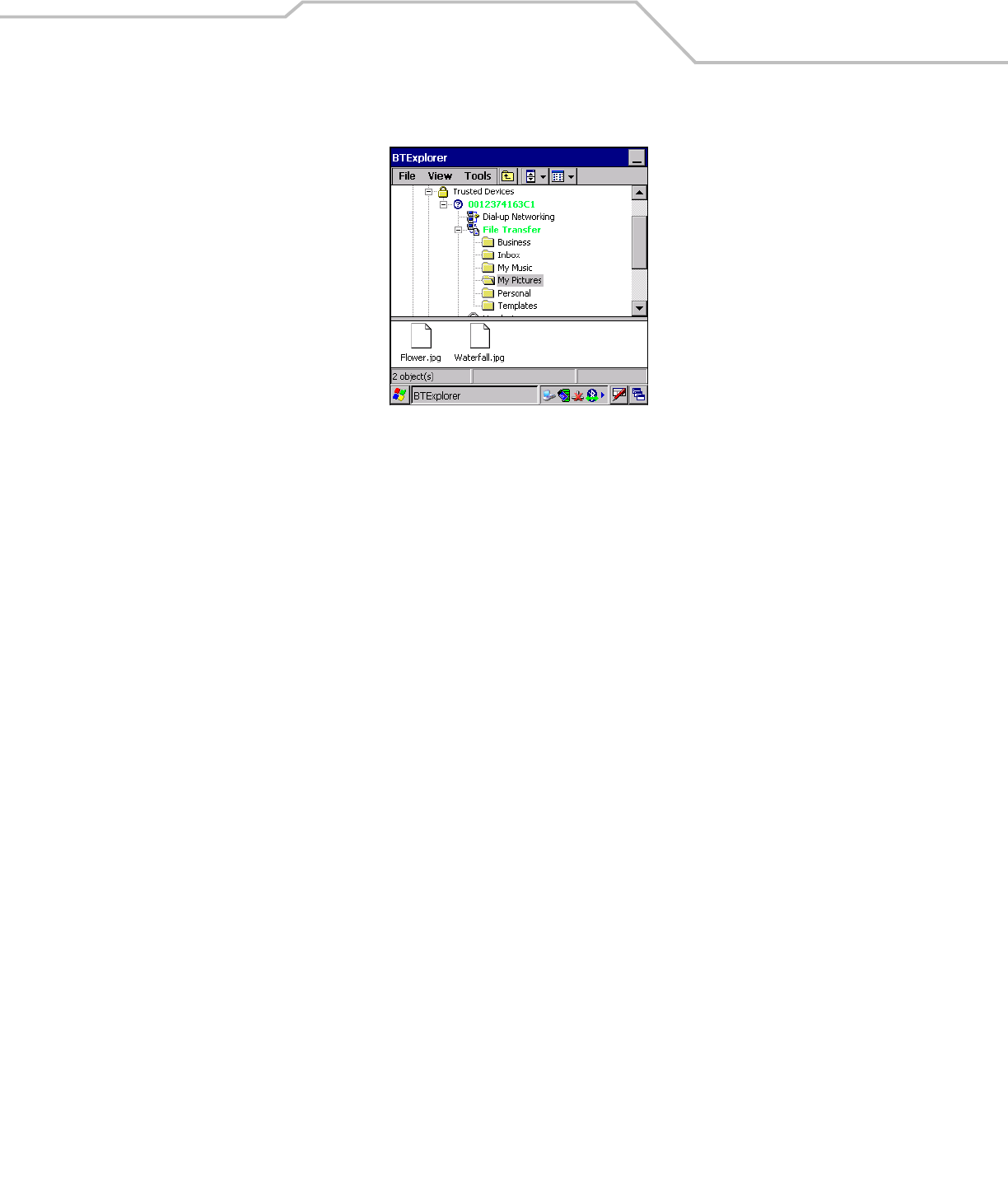
Using Bluetooth 3-15
8. Select a folder. The contents of the folder appear in the sub-window.
Figure 3-20. Remote Device Folders
9. Tap and hold on the file. A pop-up menu appears.
10. Select the action to perform:
a. New - create a new file or folder. on the remote device
b. Delete - delete the selected file on the remote device.
c. Get File - copy the file from the remote device to the mobile computer.
d. Put File - copies a file from the mobile computer to the remote device.
Create New File or Folder
To create a new folder or file on the remote device:
1. Tap and hold on the file and select New - Folder or New - File. The Create New Folder or Create New File window appears.
2. Enter the name for the new folder or file. Tap OK.
3. A new folder or file is created on the remote device.
Delete File
To delete a file from the remote device:
1. Tap and hold on the file and select Delete.
2. In the Delete Remote Device File dialog box tap OK.
Get File
To copy a file from a remote device:
1. Tap and hold on the file and select Get. The Save Remote File window appears.
2. Navigate to the directory to save the file.
3. Tap Save. The file is transferred from the remote device to the mobile computer.
Put File
To copy a file to a remote device:
1. Tap and hold on the file and select Put. The Send Local File window appears.
2. Navigate to the directory to save the file and select a file.

MC3000 User Guide3-16
3. Tap Open. The file is transferred from the mobile computer to the remote device.
Connect to Internet Using Access Point
This section explains how to access a Bluetooth-enabled LAN access point (AP) for a network connection. With this method of
communication the Internet Explorer can be used to connect to a server.
1. Ensure the mobile computer is discoverable and connectable. See Bluetooth Settings on page 3-22.
2. Discover and bond (pair) with the remote access point.See Bonding with Discovered Device(s) on page 3-10.
3. In BTExplorer, select the Remote Devices folder.
4. Select the Trusted Devices folder.
5. Tap the remote device folder.
6. Tap and hold on the remote device and select Explore from the pop-up menu.
7. Tap and hold LAN Access using PPP service and select Connect from the pop-up menu.
8. The mobile computer connects with the Access Point.
9. Tap Start - Internet Explorer. The Internet Explorer window appears.
10. In the address field, enter an internet address and tap the Enter button. The web page loads.
Dial-Up Networking Services
To use a phone that has Bluetooth capabilities as a modem for the mobile computer, create a Bluetooth modem connection on the
mobile computer and send information to the phone using Bluetooth. The phone relays the information over the phone line and sends
back to the mobile computer any information that was requested over the connection. Once a modem connection is created to the
Bluetooth phone, it can be reused.
Prior to creating a connection, ensure the following:
• Bluetooth phone is turned on.
• Bluetooth phone is discoverable. (Some phones may also need to be pairable in order to accept a bonding request. For more
information, refer to the phone documentation.)
• Mobile computer’s and phone's Bluetooth radios are turned on.
• Mobile computer and phone are within range of each other (30 feet/10 meters).
Complete the following steps to create a new Bluetooth connection. Before setting up dial-up networking, obtain dial-up information
and other necessary settings for the office network or ISP.
1. Ensure the mobile computer is discoverable and connectable. See Bluetooth Settings on page 3-22.
2. Discover and bond (pair) with the remote device.See Bonding with Discovered Device(s) on page 3-10.
3. In BTExplorer, select the Remote Devices folder.
4. Select the Trusted Devices folder.
5. Tap the remote device folder.
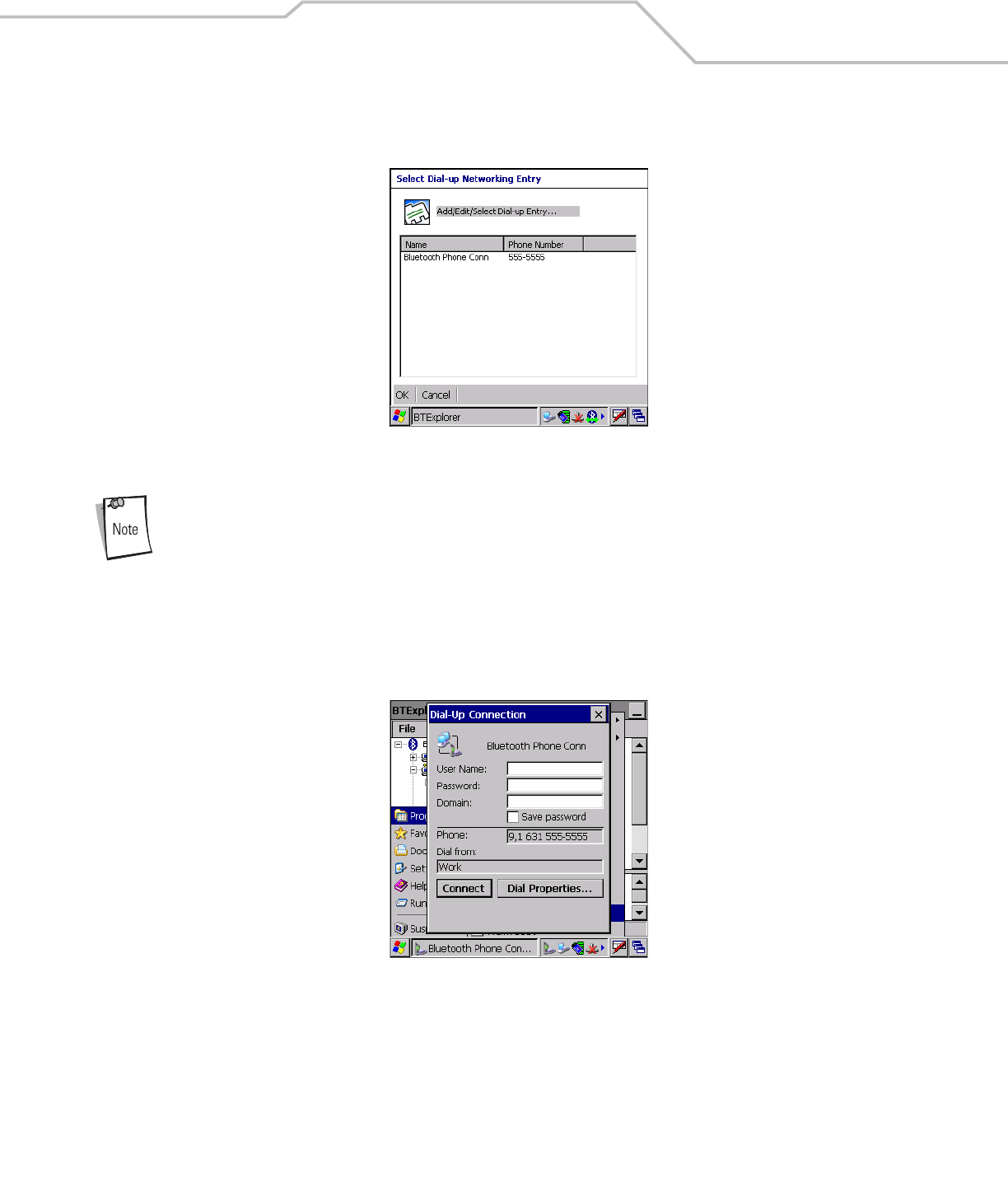
Using Bluetooth 3-17
6. Tap and hold on Dial-up Networking and select Connect from the pop-up menu. The Select Dial-up Networking Entry window
appears.
Figure 3-21. Select Dial-up Networking Entry Window
If a dial-up entry is not listed, see Add a Dial-up Entry on page 3-18.
7. Select a dial-up entry.
8. Tap OK. The mobile computer begins to communicate with the phone. If required, the phone requests permission to
communicate with the mobile computer.
9. Confirm the connection on the phone. The Network Log On window appears.
Figure 3-22. Network Log On Window
10. In the User name: text box, enter the user name for this connection.
11. In the Password: text box, enter the password for this connection.
12. In the Domain: text box, enter the domain for this connection, if required.
13. Tap OK.
14. The phone begins dialing.
15. The phone connects to the network.
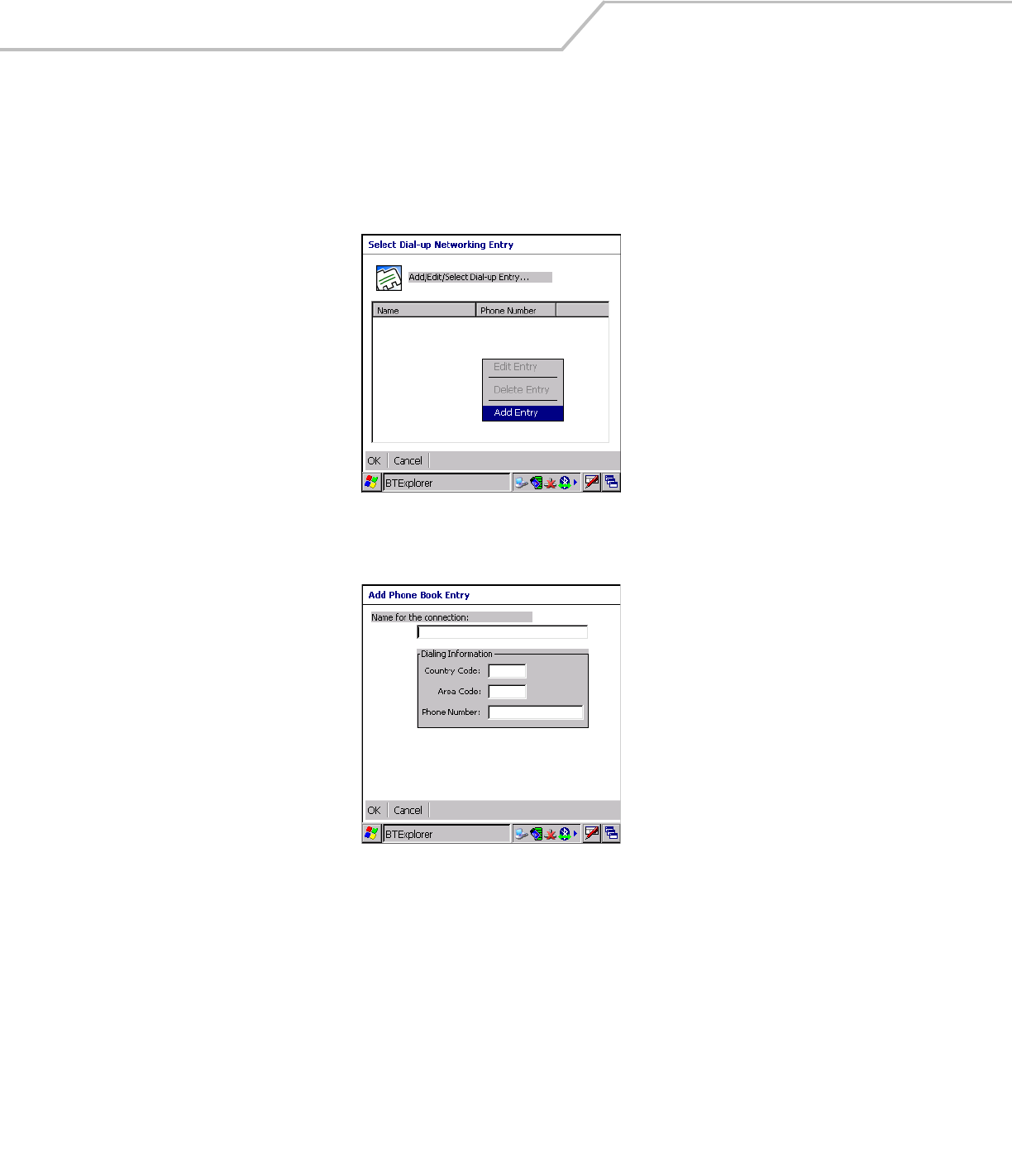
MC3000 User Guide3-18
16. To end a session, tap the Connection icon and then tap Disconnect in the dialog box.
Add a Dial-up Entry
To add a dial-up entry:
1. In the Select Dial-up Networking Entry window, tap and hold and then select Add Entry from the pop-up menu.
Figure 3-23. Add Dial-Up Entry
2. The Add Phone Book Entry window appears.
3. In the Name for the connection text box, enter a name for this connection.
4. In the Country Code text box, enter the country code for the country that you are calling.
5. In the Area Code text box, enter the area code.
6. In the Phone Number text box, enter the phone number.
7. Tap OK.
OBEX Object Push Services
Object Exchange (OBEX) is a set of protocols allowing objects such as pictures to be shared using Bluetooth.
To exchange information with another Bluetooth enabled device:
1. Ensure the mobile computer is discoverable and connectable. See Bluetooth Settings on page 3-22.
2. Discover and bond (pair) with the remote device.See Bonding with Discovered Device(s) on page 3-10.
3. In BTExplorer, select the Remote Devices folder.
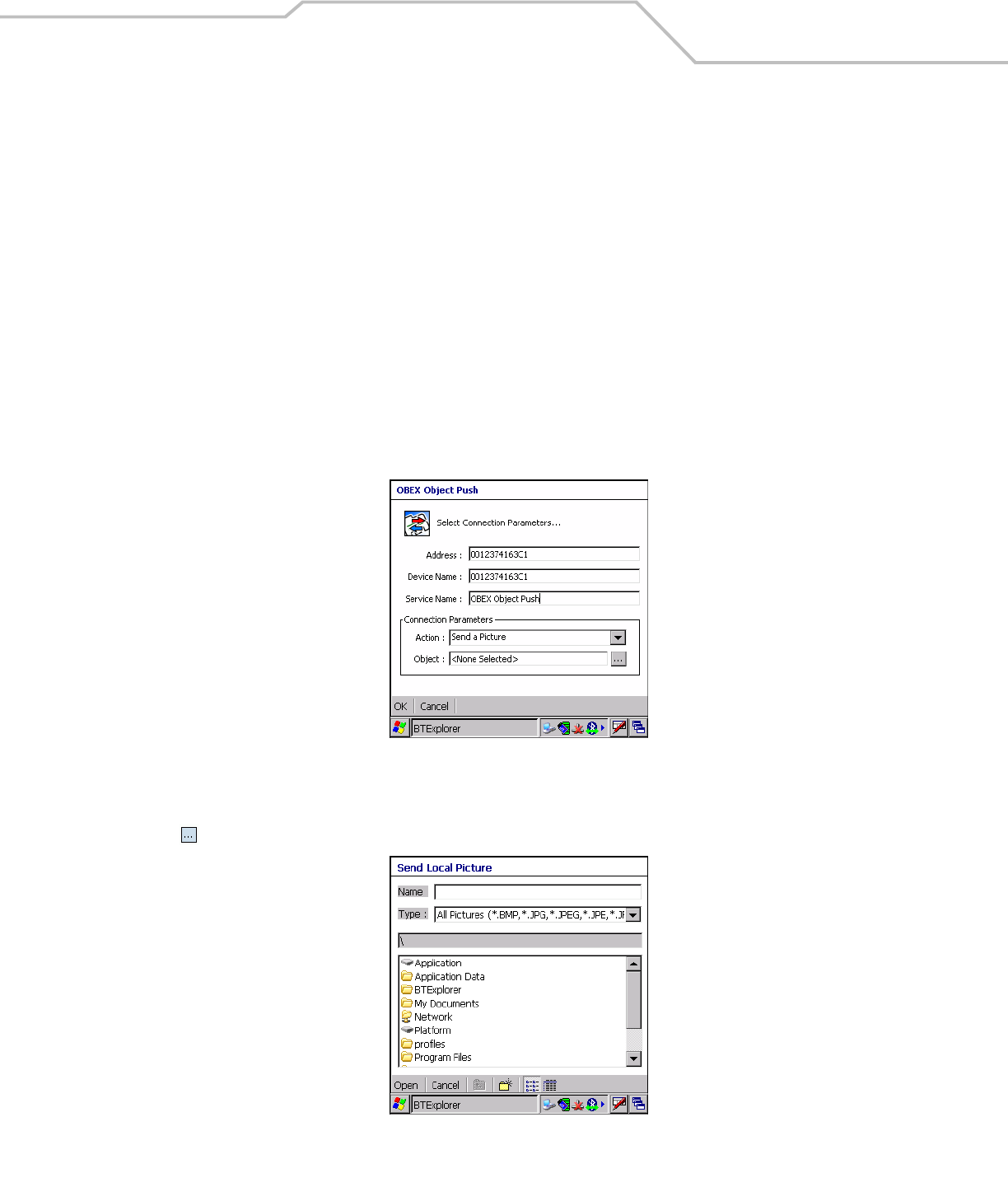
Using Bluetooth 3-19
4. Select the Trusted Devices folder.
5. Tap the remote device folder.
6. Tap and hold on OBEX Object Push and select Connect. The OBEX Object Push window appears.
7. In the Action drop-down list, select one of the options: Send Contact Information, Swap Contact Information, Fetch Contact
Information or Send a Picture.
Send a Picture
To send a picture to another device:
1. Ensure the mobile computer is discoverable and connectable. See Bluetooth Settings on page 3-22.
2. Discover and bond (pair) with the remote device.See Bonding with Discovered Device(s) on page 3-10.
3. In BTExplorer, select the Remote Devices folder.
4. Select the Trusted Devices folder.
5. Tap the remote device folder.
6. Tap and hold on OBEX Object Push and select Connect. The OBEX Object Push window appears.
Figure 3-24. OBEX Object Push Window
7. In the Action drop-down list, select Send A Picture.
8. Tap . The Send Local Picture window appears.
Figure 3-25. Send Local Picture Window

MC3000 User Guide3-20
9. Navigate to the picture that you want to send to the other device.
10. Tap Open.
11. Tap OK. The picture is sent to the other device and a confirmation dialog box appears on the other device to accept the
picture. A Send Picture dialog appears.
12. Tap Ok.
Headset Services
To connect to a Bluetooth headset:
1. Ensure the mobile computer is discoverable and connectable. See Bluetooth Settings on page 3-22.
2. Discover and bond (pair) with the headset.See Bonding with Discovered Device(s) on page 3-10.
3. In BTExplorer, select the Remote Devices folder.
4. Select the Trusted Devices folder.
5. Tap the remote device folder.
6. Tap and hold on the remote device and select Explore. A headset service item appears.
7. Tap and hold on the headset service name and select Connect.
8. The mobile computer connects to the headset. Refer to your headset user manual for instruction on communicating with a
Bluetooth device.
To adjust the microphone gain:
1. Tap and hold on the headset service item and select Adjust Microphone from the pop-up menu. The Microphone Properties
window appears.
2. Select the slider and adjust the gain.
3. Tap OK.
Serial Port Services
By default, COM ports COM4, COM5 and COM9 are Bluetooth virtual ports. If an application opens one of these ports,
the Bluetooth driver activates and guides you through a Bluetooth connection.
Use the wireless Bluetooth serial port connection just as you would a physical serial cable connection. You must configure the
application that will use the connection to the correct serial port.
To establish a serial port connection:
1. Ensure the mobile computer is discoverable and connectable. See Bluetooth Settings on page 3-22.
2. Discover and bond (pair) with the remote device.See Bonding with Discovered Device(s) on page 3-10.
3. In BTExplorer, select the Remote Devices folder.
4. Select the Trusted Devices folder.
5. Tap the remote device folder.
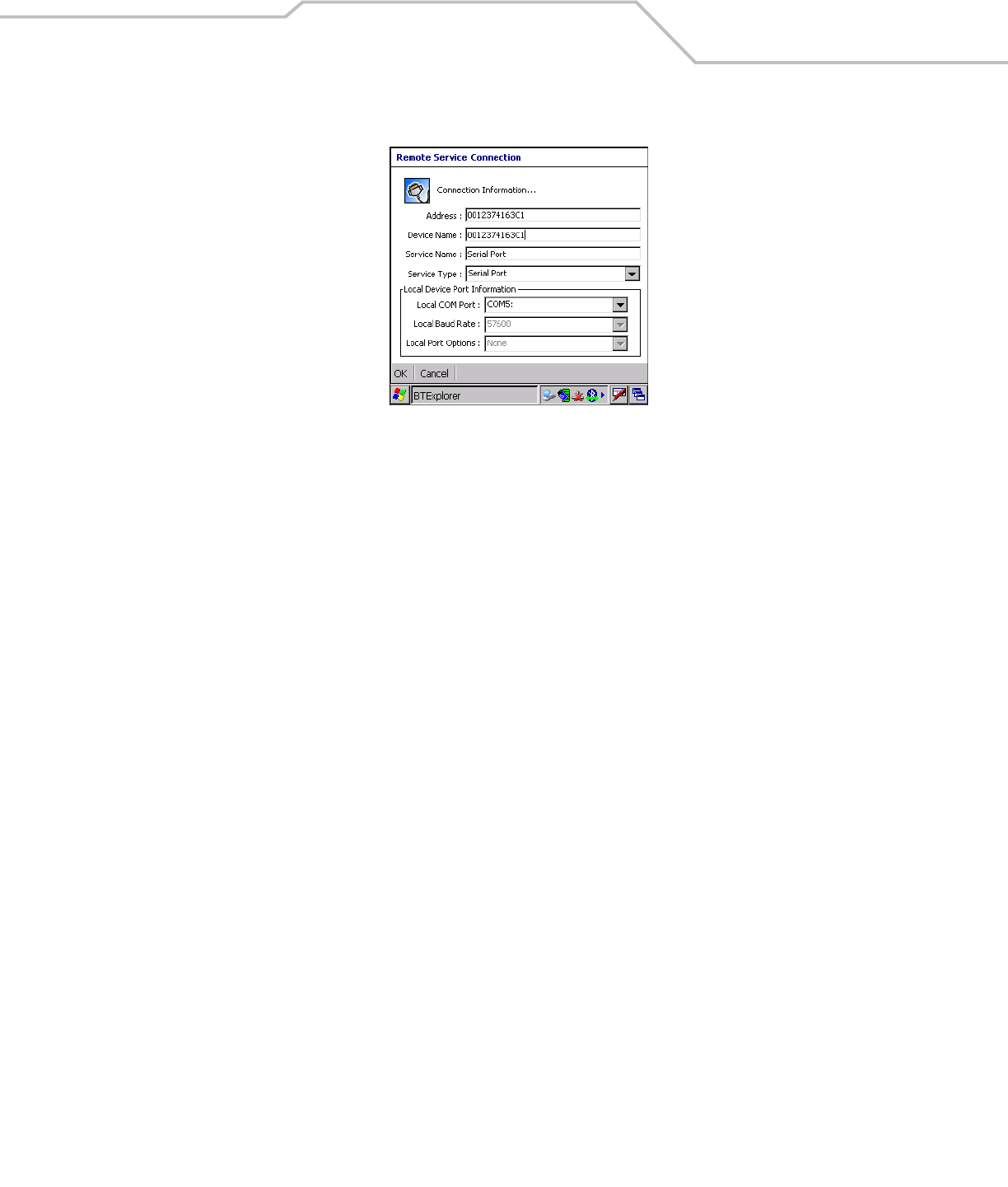
Using Bluetooth 3-21
6. Tap and hold Serial Port and select Connect in the pop-up menu. The Remote Service Connection window appears.
Figure 3-26. Remote Service Connection Window
7. In the Local COM Port drop-down list select a COM port.
8. Tap OK.
Personal Area Network Services
Connect two or more Bluetooth devices to share files, collaborate or play multi player games.
To establish a Personal Area Network connection:
1. Ensure the mobile computer is discoverable and connectable. See Bluetooth Settings on page 3-22.
2. Discover and bond (pair) with the remote device.See Bonding with Discovered Device(s) on page 3-10.
3. In BTExplorer, select the Remote Devices folder.
4. Select the Trusted Devices folder.
5. Tap the remote device folder.
6. Tap and hold Personal Area Network and select Connect in the pop-up menu.
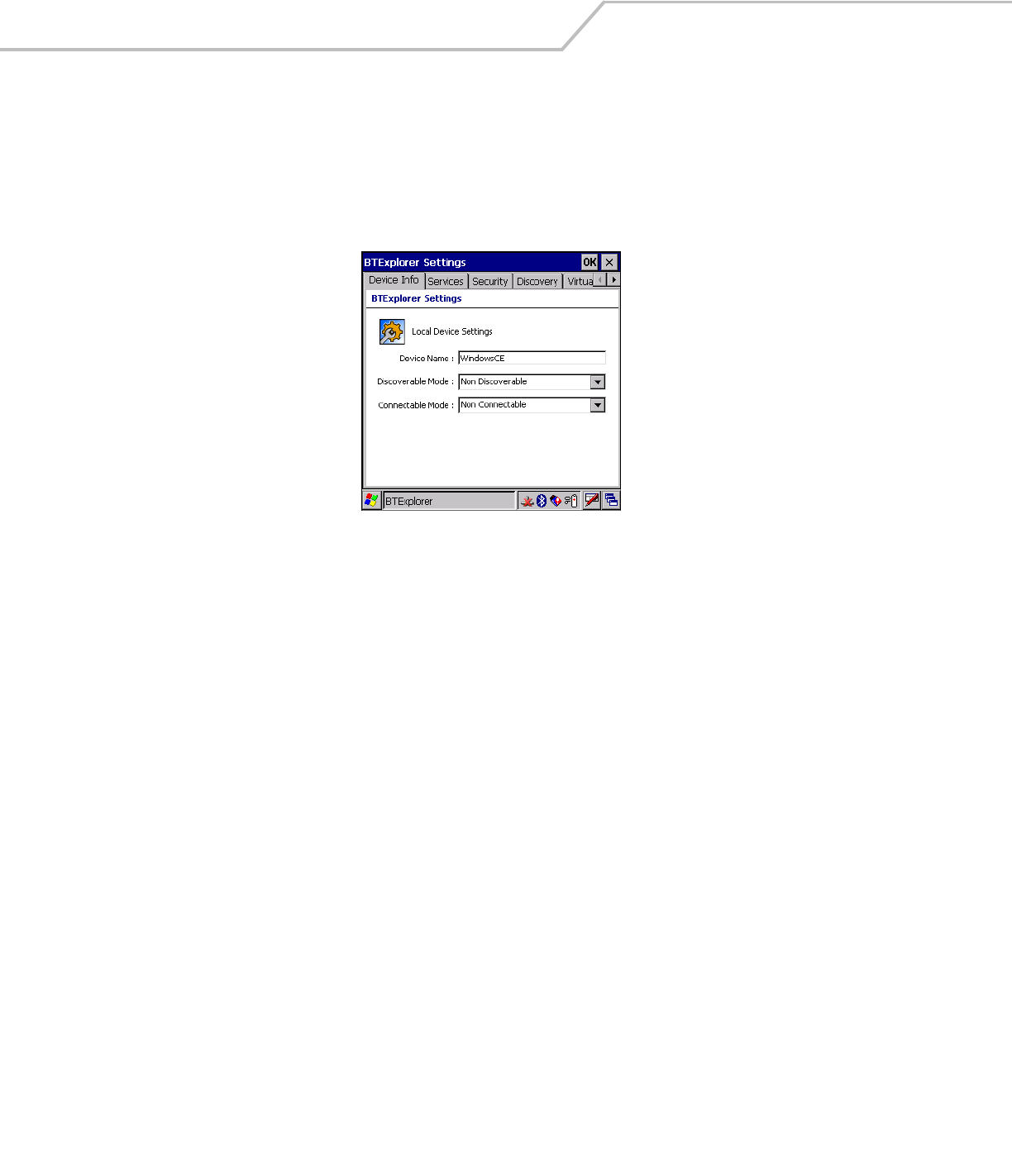
MC3000 User Guide3-22
Bluetooth Settings
Use the BTExplorer Settings window to configure the operation of the BTExplorer application. Tap Tools - Settings. The BTExplorer
Settings window appears.
Device Info Tab
Use the Device Info tab to configure the mobile computer’s Bluetooth connection modes.
Figure 3-27. BTExplorer Settings - Device Info Tab
Device Name Displays the name of the mobile computer.
Discoverable Mode Allows you to set the mobile computer to be discoverable by other Bluetooth devices or not be
discoverable.
Note: For security reasons, the default is set to Non Discoverable.
Connectable Mode Allows you to set the mobile computer to be connectable by other Bluetooth devices or not be
connectable.
Note: For security reasons, the default is set to Non Connectable.
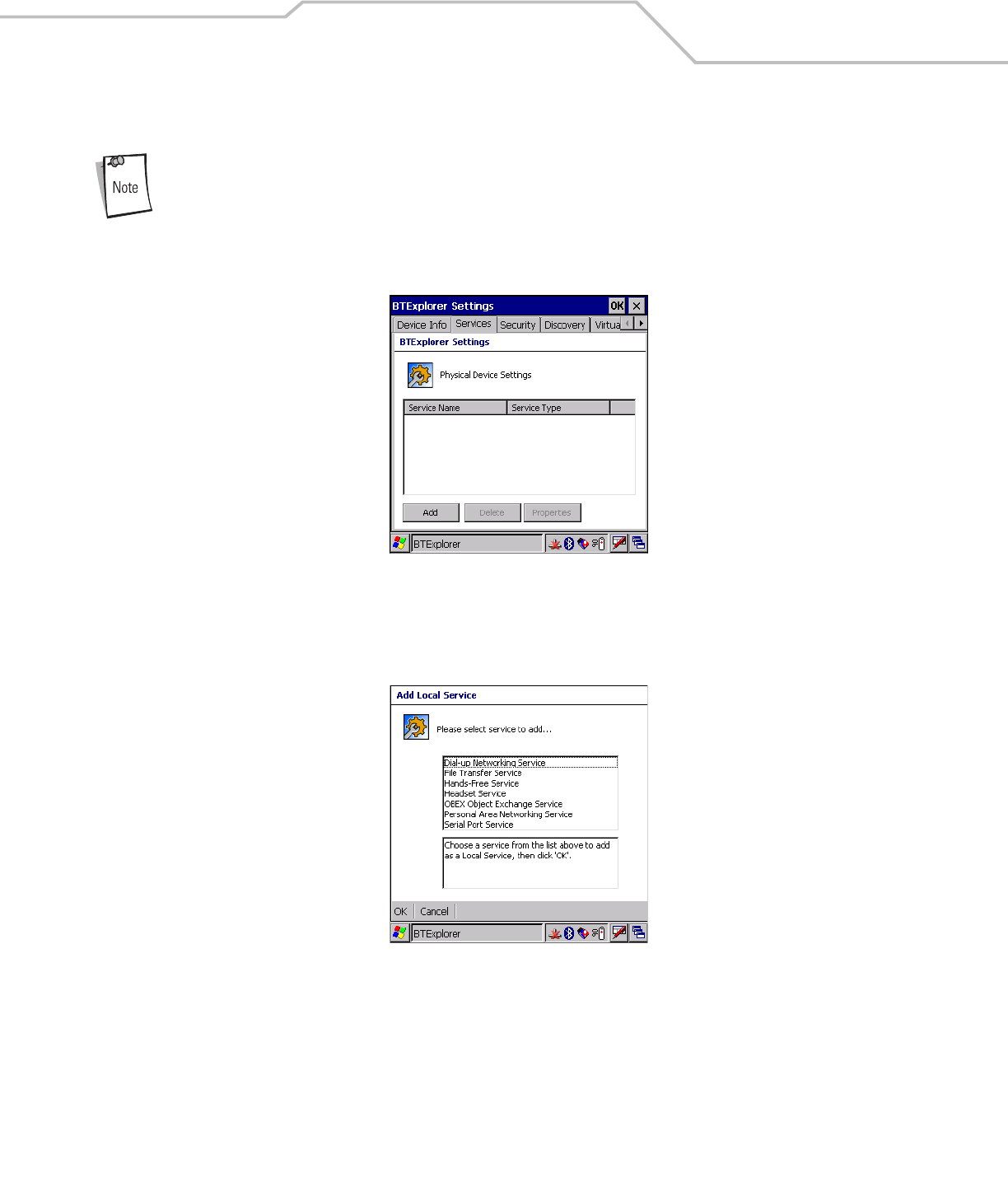
Using Bluetooth 3-23
Services Tab
For security reason, by default services are not enabled.
Use the Services tab to add or delete Bluetooth services.
Figure 3-28. BTExplorer Settings - Services Tab
To add a service:
1. Tap Add. The Add Local Service window displays.
Figure 3-29. Add Local Service Window
2. In the list, select a service to add.
3. Tap OK. The Edit Local Service window displays for the selected service.
4. Select the appropriate information and then tap OK. See the following paragraphs for detailed information on the available
services.
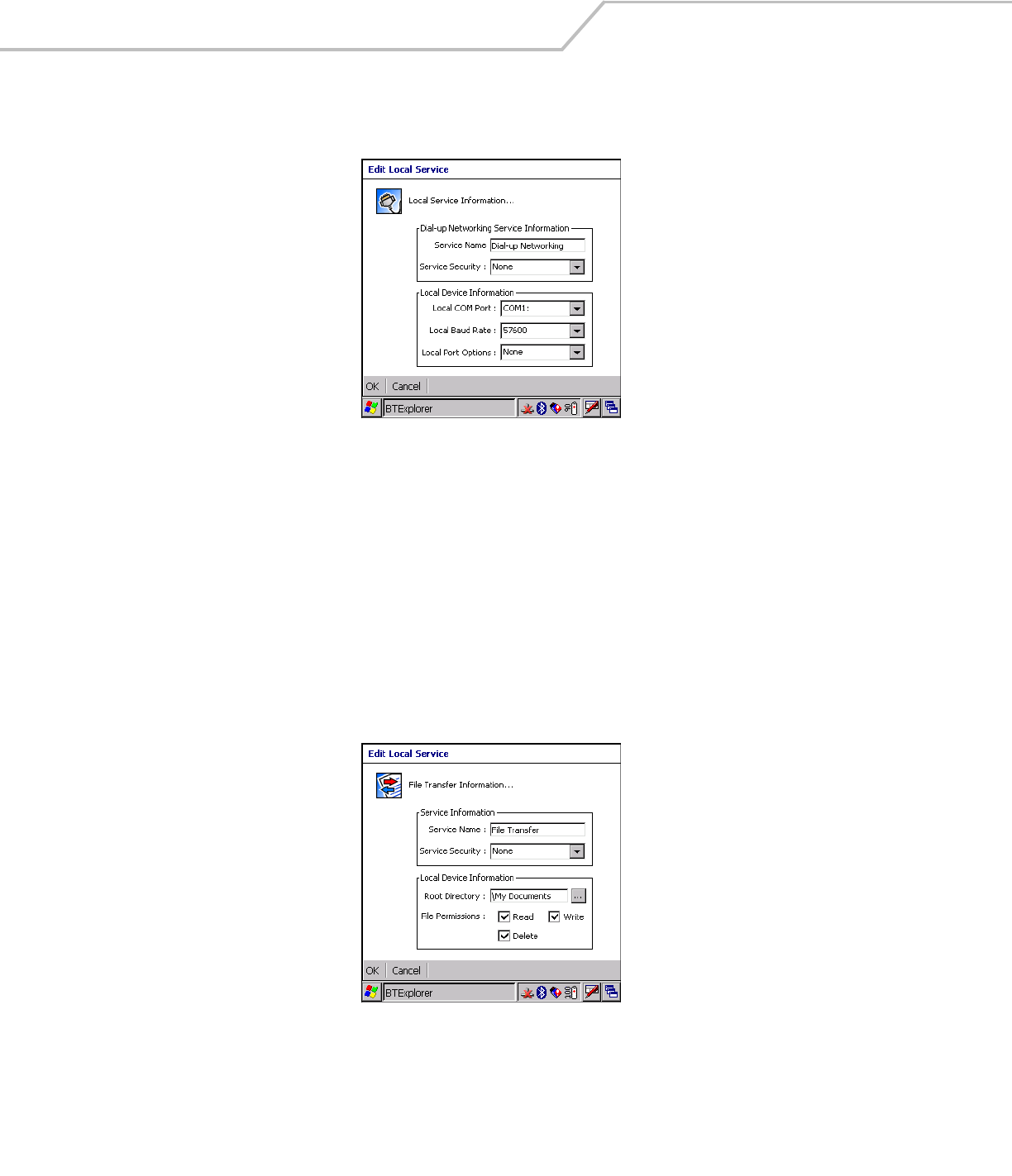
MC3000 User Guide3-24
Dial-Up Networking Service
Dial-up Networking allows a dial-up modem to be accessed by other Bluetooth devices.
Figure 3-30. Add Local Service Window
File Transfer Service
File transfer allows files to be browsed by other Bluetooth devices.
Figure 3-31. File Transfer Information Window
Service Name Displays the name of the service.
Service Security Select the type of security from the drop-down list; None, Authenticate or Authenticate/
Encrypt.
Local COM Port Select the COM port. Select COM1 to use a modem or other device that is connected to the
connector on the bottom of the mobile computer.
Local Baud Rate Select the communication baud rate.
Local Port Options Select the port option.
Service Name Displays the name of the service.
Service Security Select the type of security from the drop-down list; None, Authenticate or Authenticate/
Encrypt.
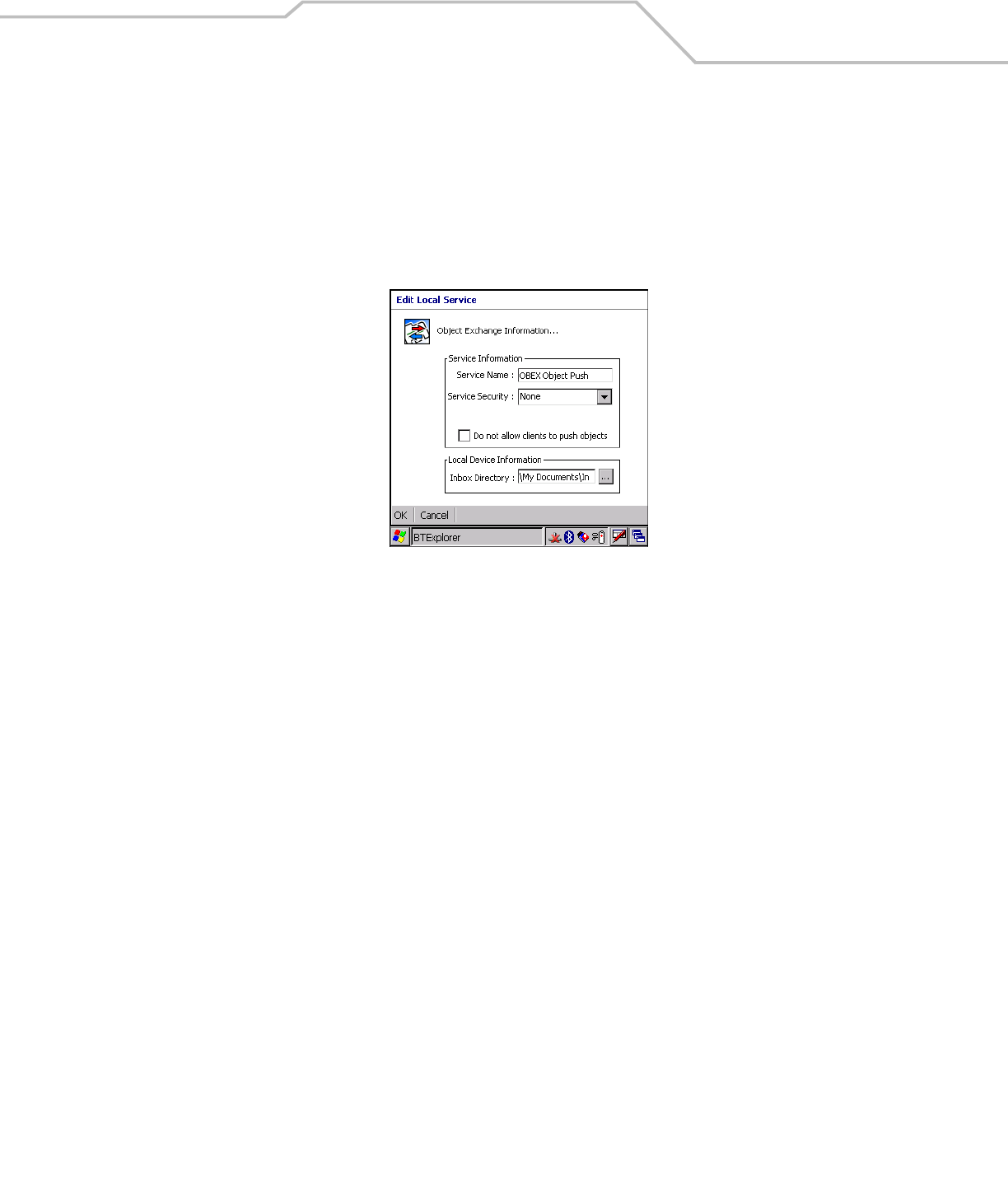
Using Bluetooth 3-25
OBEX Object Push Service
OBEX Object Push allows contacts, business cards, pictures, appointments, and tasks to be pushed to the device by other Bluetooth
devices.
Figure 3-32. OBEX Exchange Information Window
Root Directory Select the directory that other Bluetooth devices can access.
File Permissions Select the file permissions for the selected directory. Check the appropriate box to grant Read
access, write access and delete access.
Service Name Displays the name of the service.
Service Security Select the type of security from the drop-down list; None, Authenticate or
Authenticate/Encrypt.
Do not allow clients to push objects Disables clients from pushing objects to the mobile computer.
Inbox Directory Select a directory where another Bluetooth device can store files.
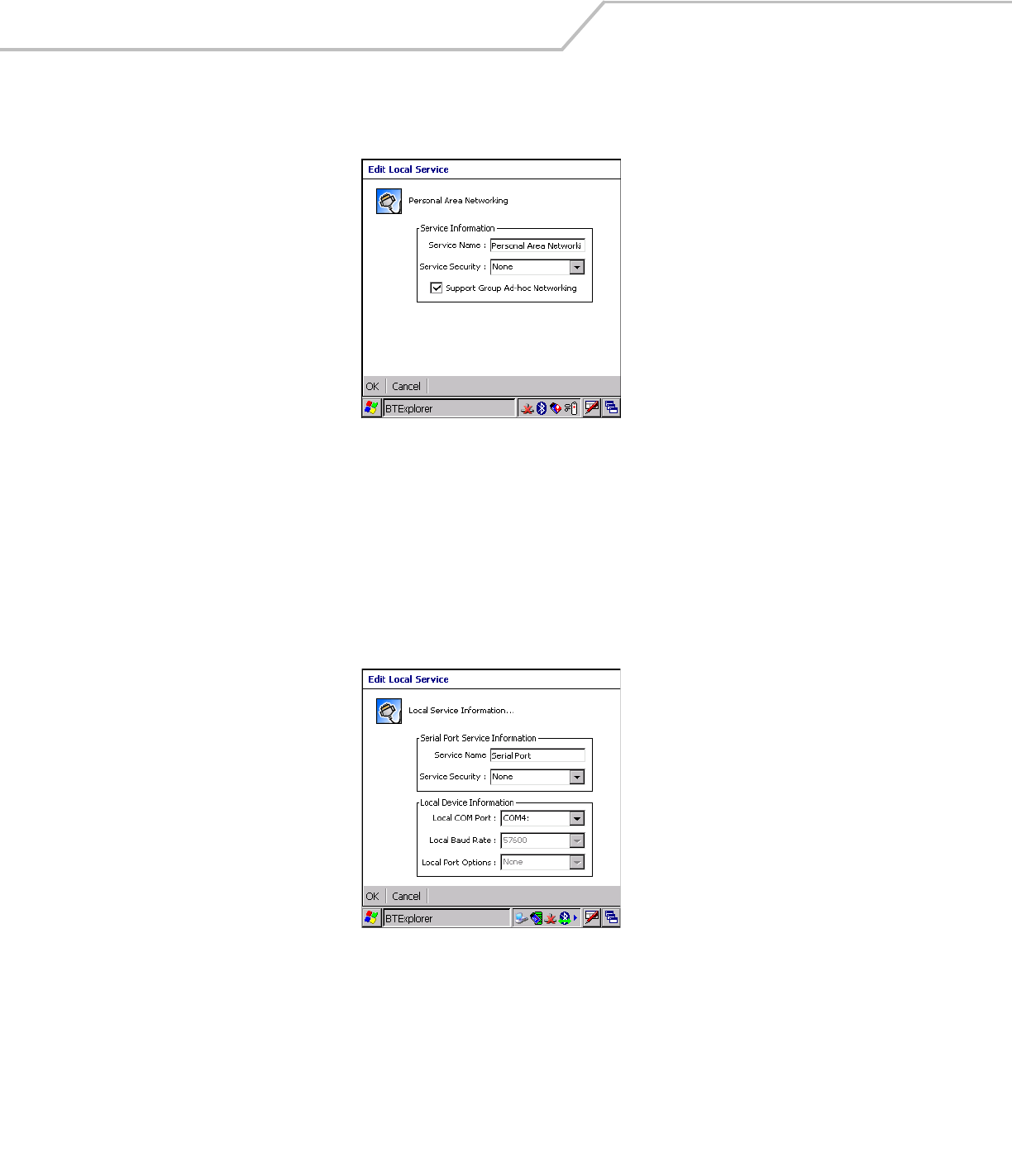
MC3000 User Guide3-26
Personal Area Networking Service
Personal Area Networking hosts a Personal Area Network which allows communication with other Bluetooth devices.
Figure 3-33. Personal Area Networking Window
Serial Port Service
Serial port allows COM ports to be accessed by other Bluetooth devices.
Figure 3-34. Serial Port Service Window
Service Name Displays the name of the service.
Service Security Select the type of security from the drop-down list; None, Authenticate or Authenticate/
Encrypt.
Support Group Ad-Hoc Networking Select to enable Ad-Hoc networking.
Service Name Displays the name of the service.
Service Security Select the type of security from the drop-down list; None, Authenticate or Authenticate/
Encrypt.
Local COM Port Select the COM port. Select COM1 to use a modem or other device that is connected to the
connector on the bottom of the mobile computer.
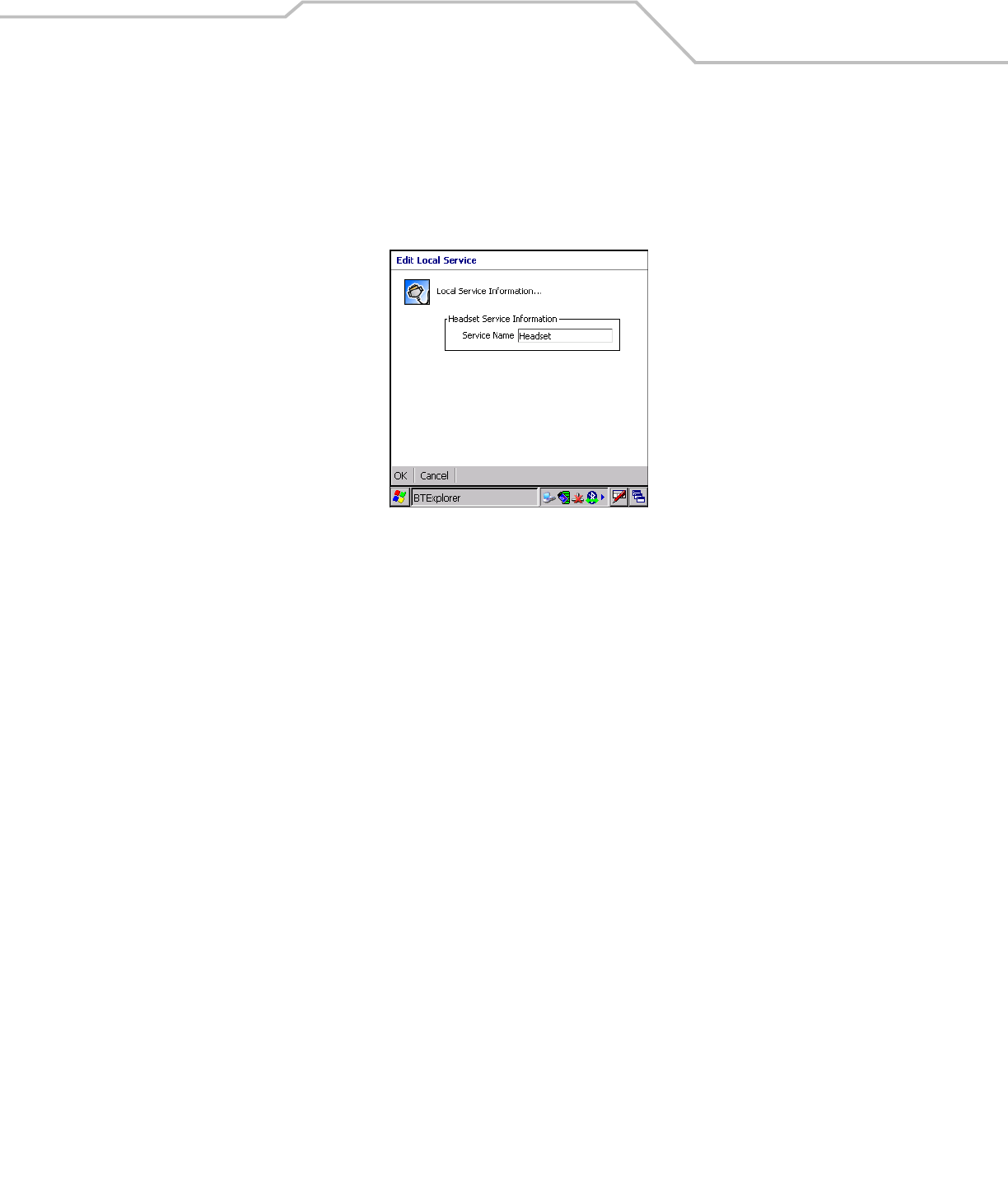
Using Bluetooth 3-27
Headset Service
Serial port allows COM ports to be accessed by other Bluetooth devices.
Figure 3-35. Headset Service Window
Local Baud Rate Select the communication baud rate.
Local Port Options Select the port option.
Service Name Displays the name of the service.
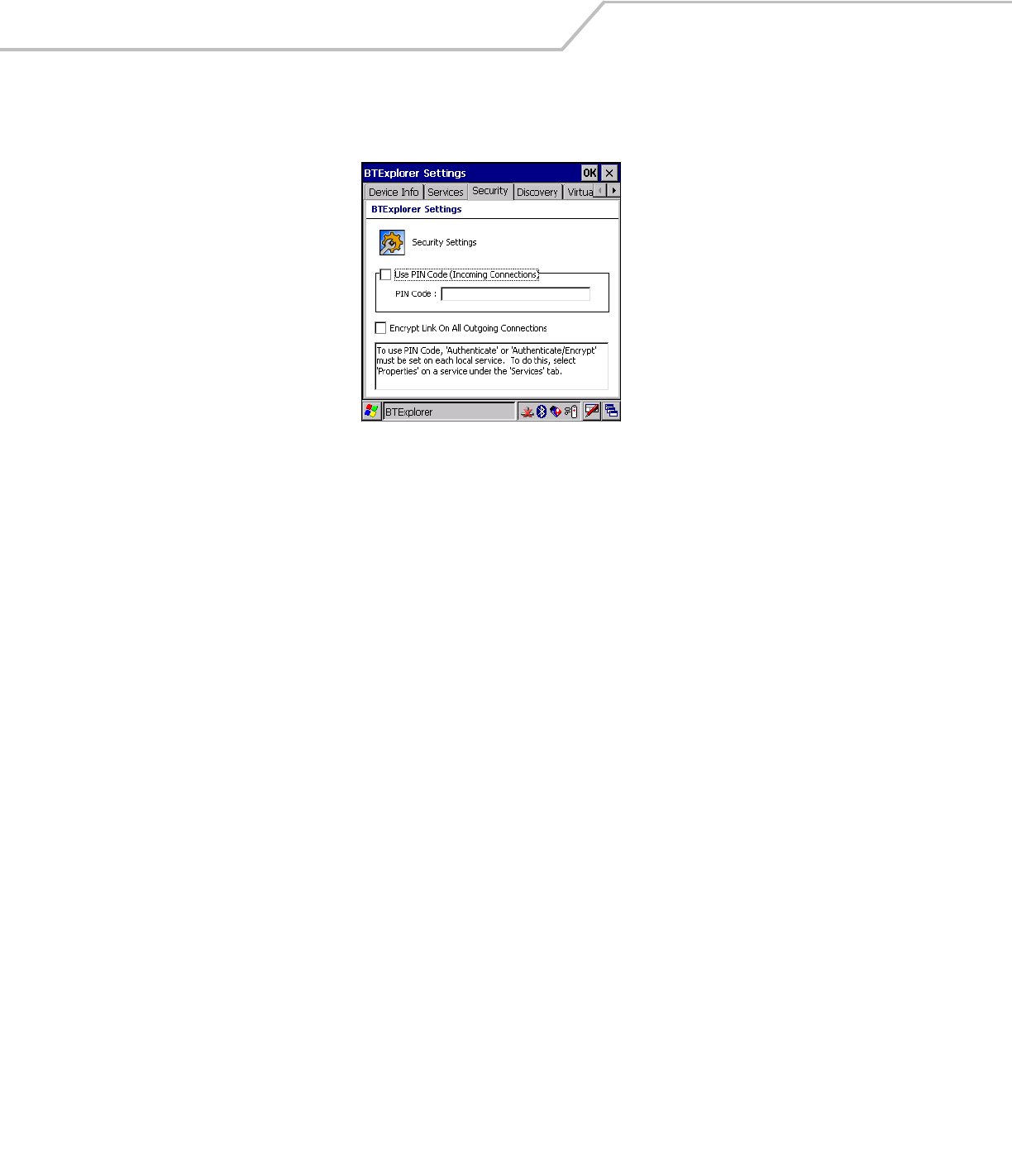
MC3000 User Guide3-28
Security Tab
To adjust the security settings for an individual service, select the Services tab first, then select the individual service, then Properties.
Figure 3-36. BTExplorer Settings - Security Tab
Use PIN Code (Incoming Connecting) Select for automatic use of the PIN code entered in the PIN Code text box. It is recommended
not to use this automatic PIN code feature. See Security on page 3-3 for more information.
PIN Code Enter the PIN code.
Encrypt Link On All Outgoing Connections Select to enable or disable encryption. Use encryption whenever possible.
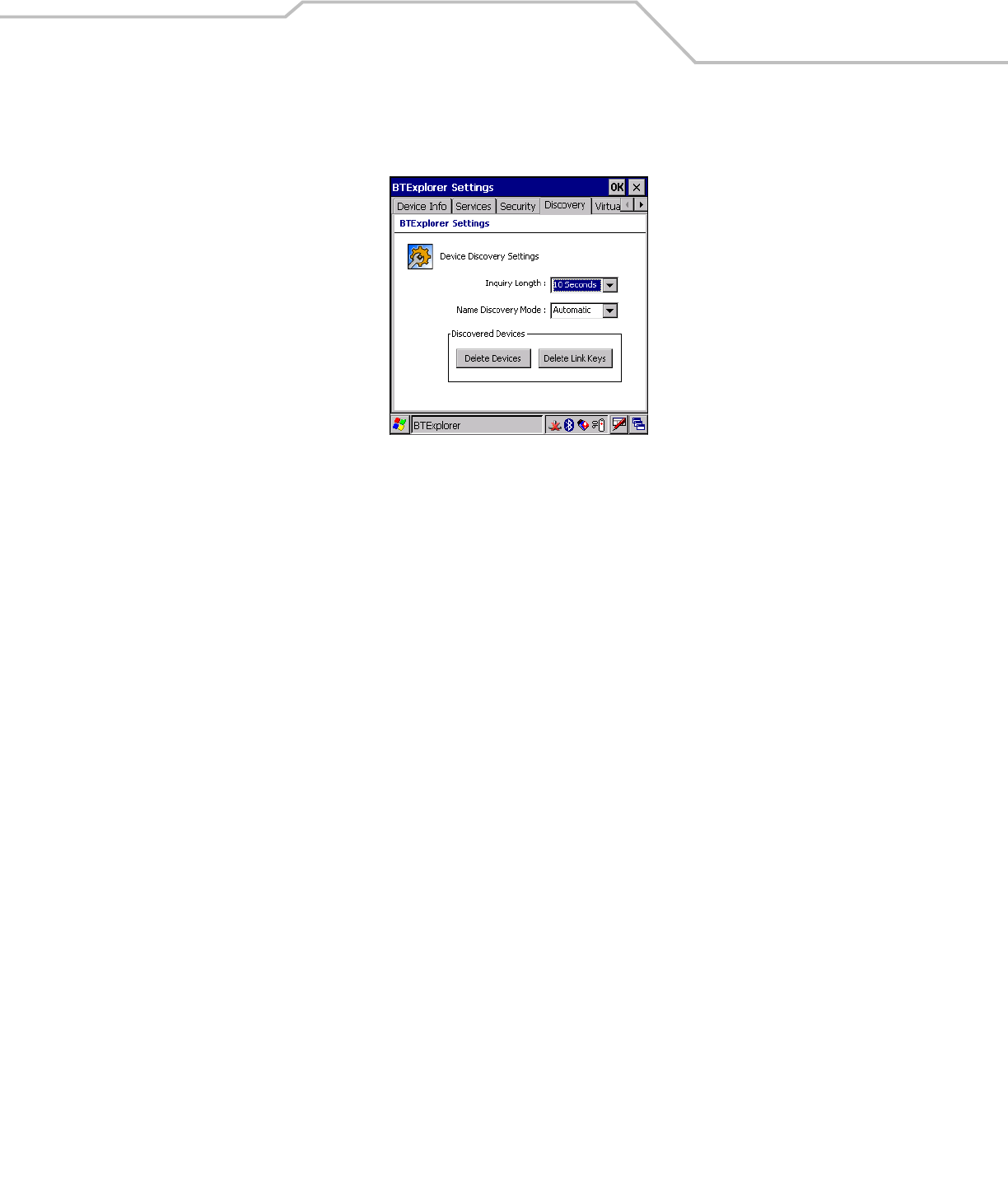
Using Bluetooth 3-29
Discovery Tab
Use the Discovery tab to set and modify discovered devices.
Figure 3-37. BTExplorer Settings - Discovery Tab
Inquiry Length Sets the amount of time that the mobile computer takes to discover Bluetooth devices in the
area.
Name Discovery Mode Select either Automatic or manual.
Discovered Devices Deletes all discovered devices and link keys.
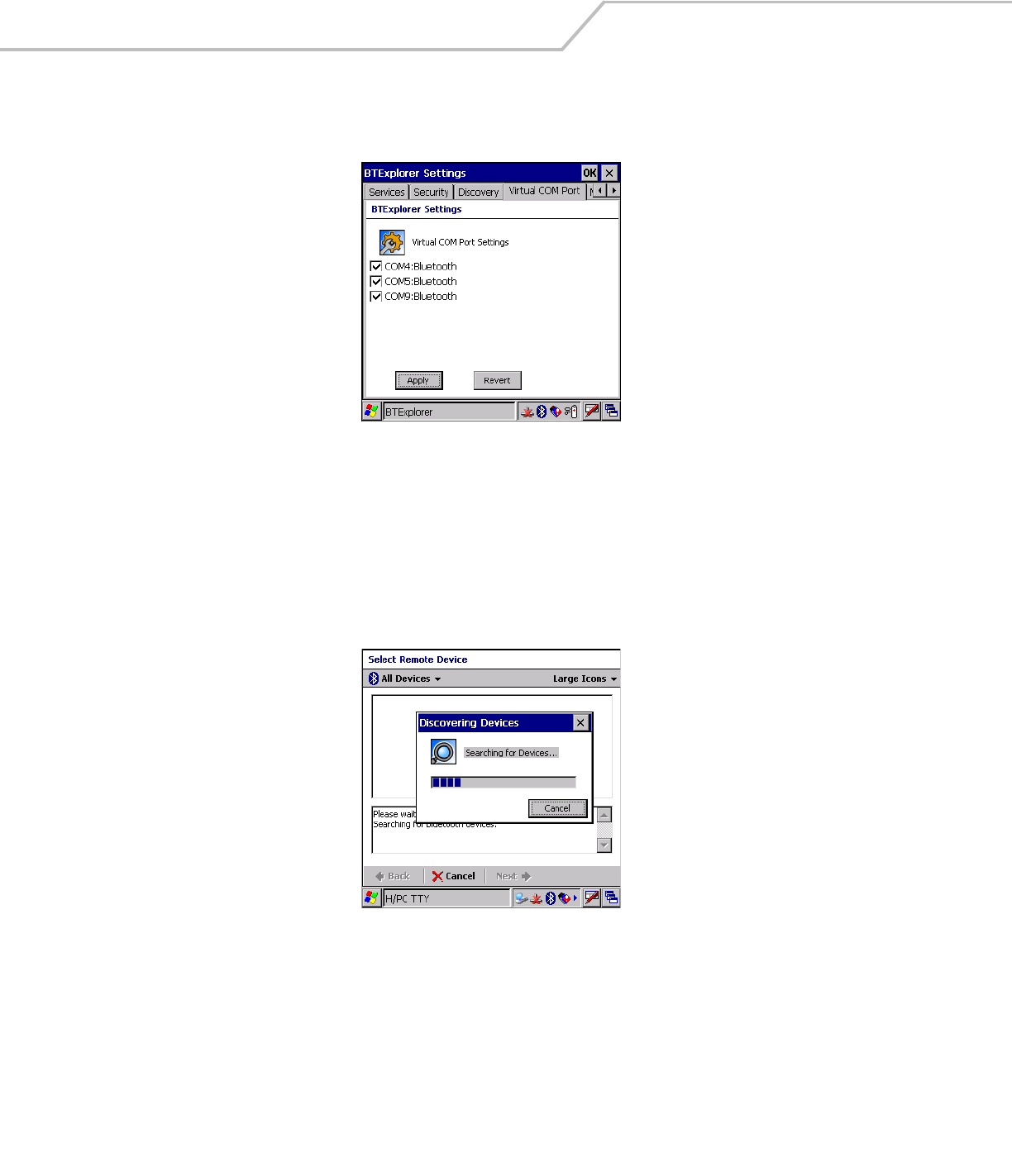
MC3000 User Guide3-30
Virtual COM Port Tab
Use the Virtual COM Port tab to select the COM ports for Bluetooth communication.
Figure 3-38. BTExplorer Settings - Virtual COM Port Tab
If an application uses one of the COM ports assigned to Bluetooth, opening this port causes the Bluetooth stack to activate and guide
you through the connection process.
Figure 3-39. COM Port Connection
COM4:Bluetooth Enable or disable COM Port 4.
COM5:Bluetooth Enable or disable COM Port 5
COM9:Bluetooth Enable or disable COM Port 9
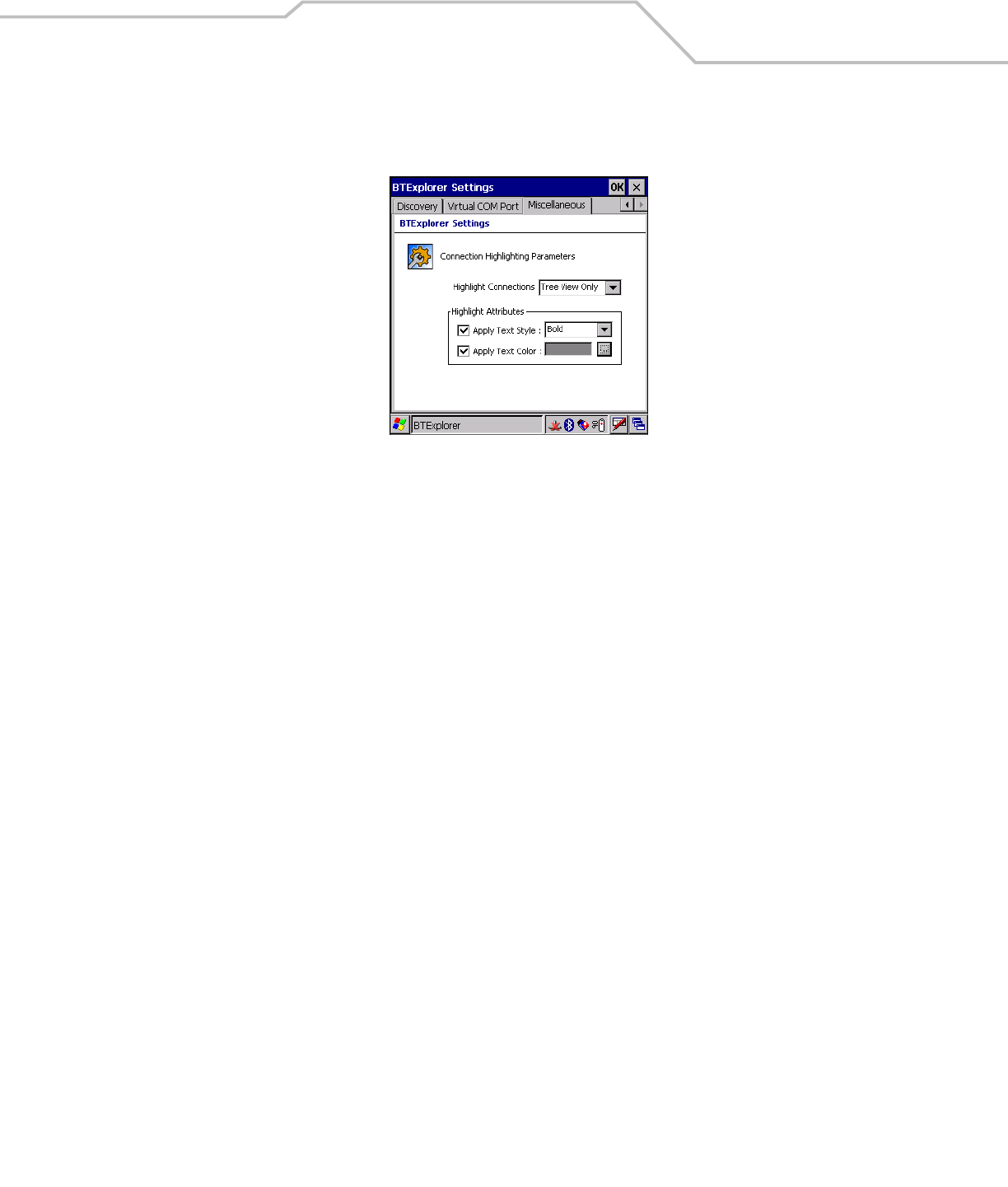
Using Bluetooth 3-31
Miscellaneous Tab
Figure 3-40. BTExplorer Settings - Miscellaneous Tab
Highlight Connections Select the connection type to highlight when connected. In the Wizard Mode, the only option
is Favorites or None. In the Explorer Mode the options are None, Tree View Only, List View
Only or Tree and List View.
Apply Text Style Select the text style to be applied to the connection text.
Apply Text Color Select the text color to be applied to the connection text.

MC3000 User Guide3-32